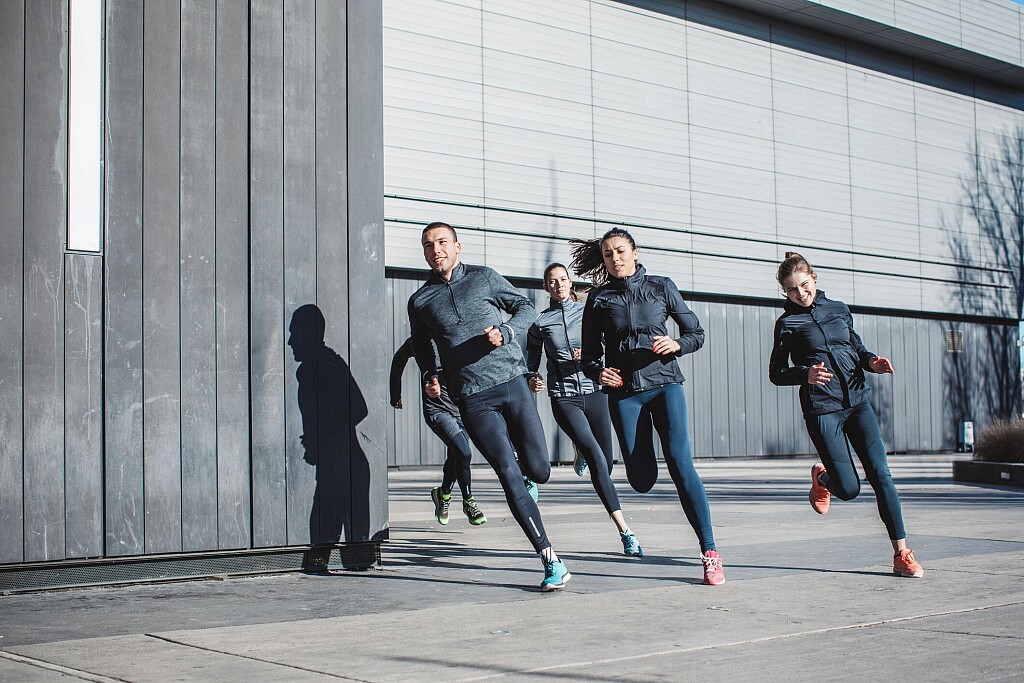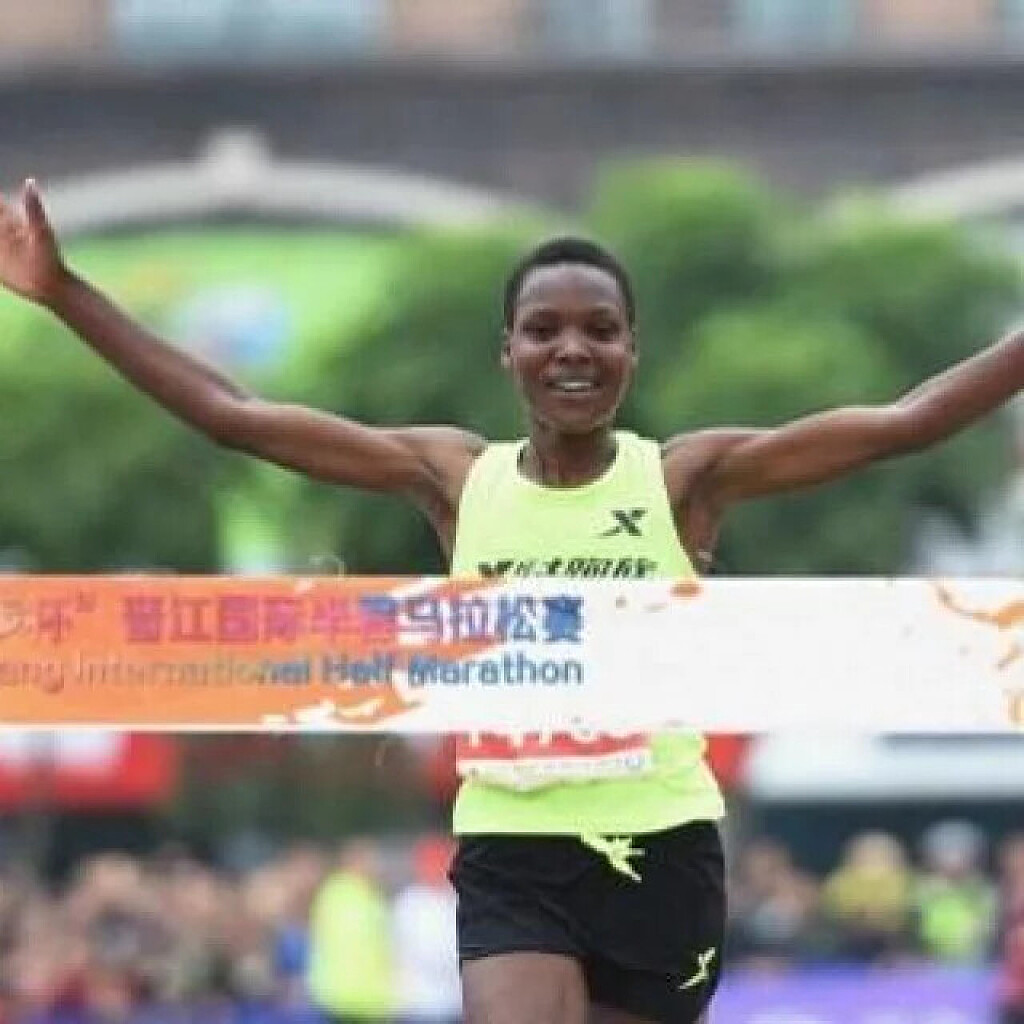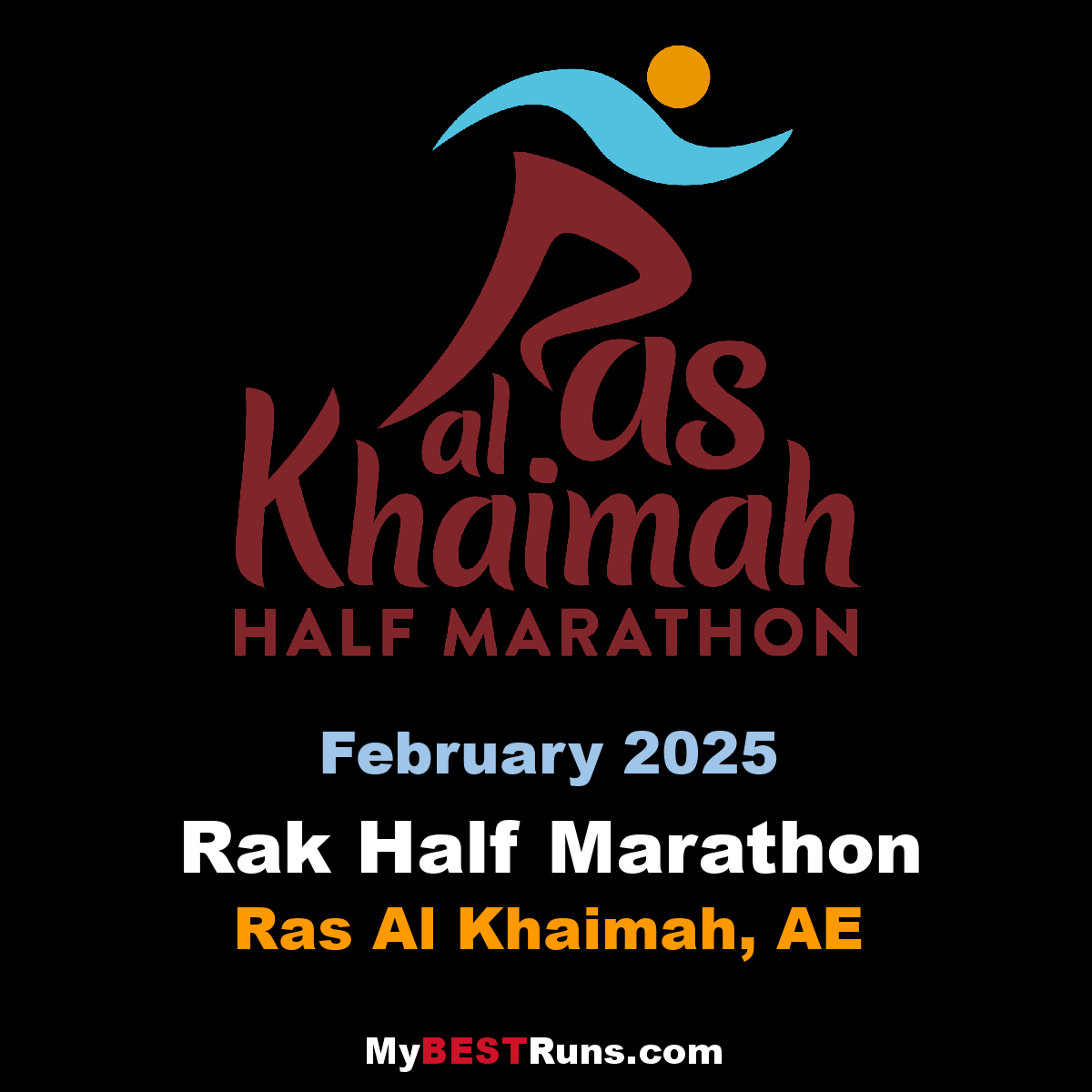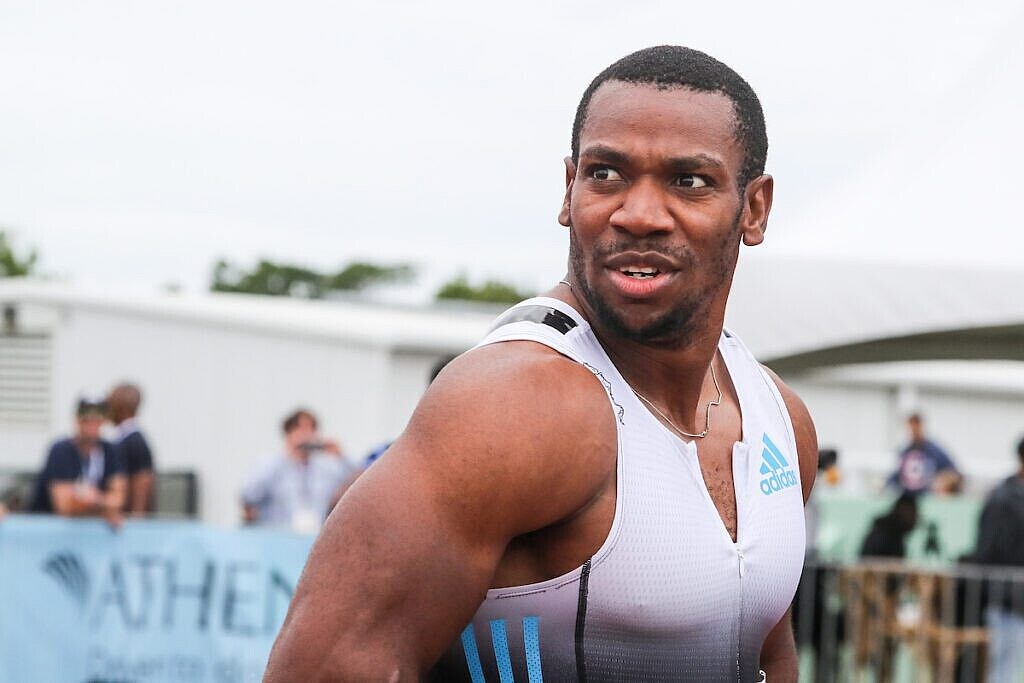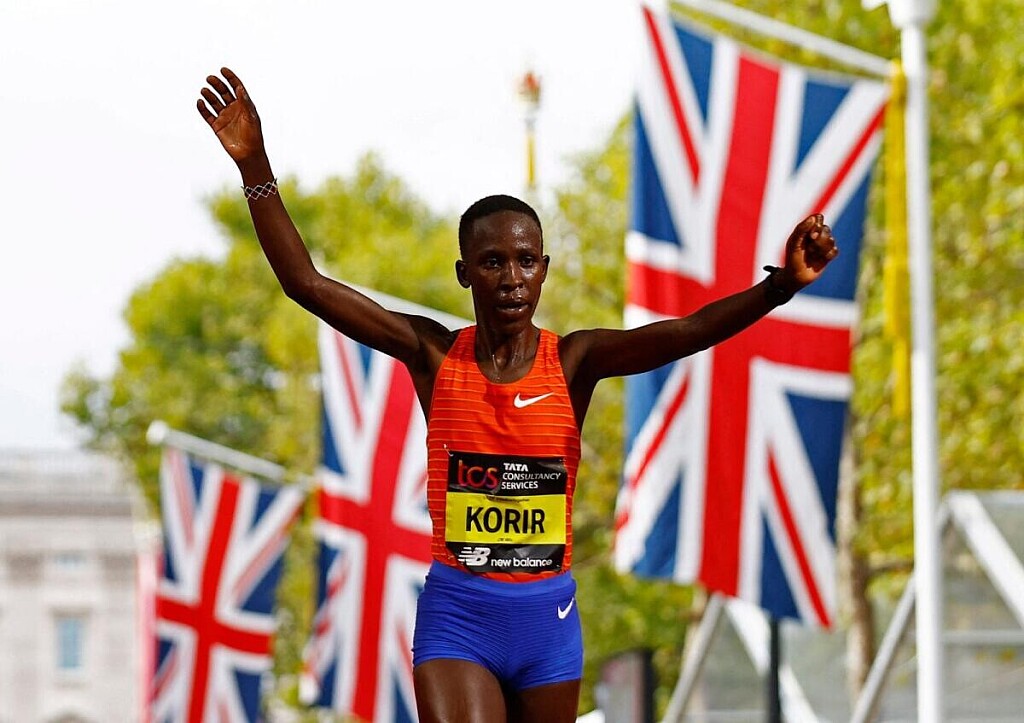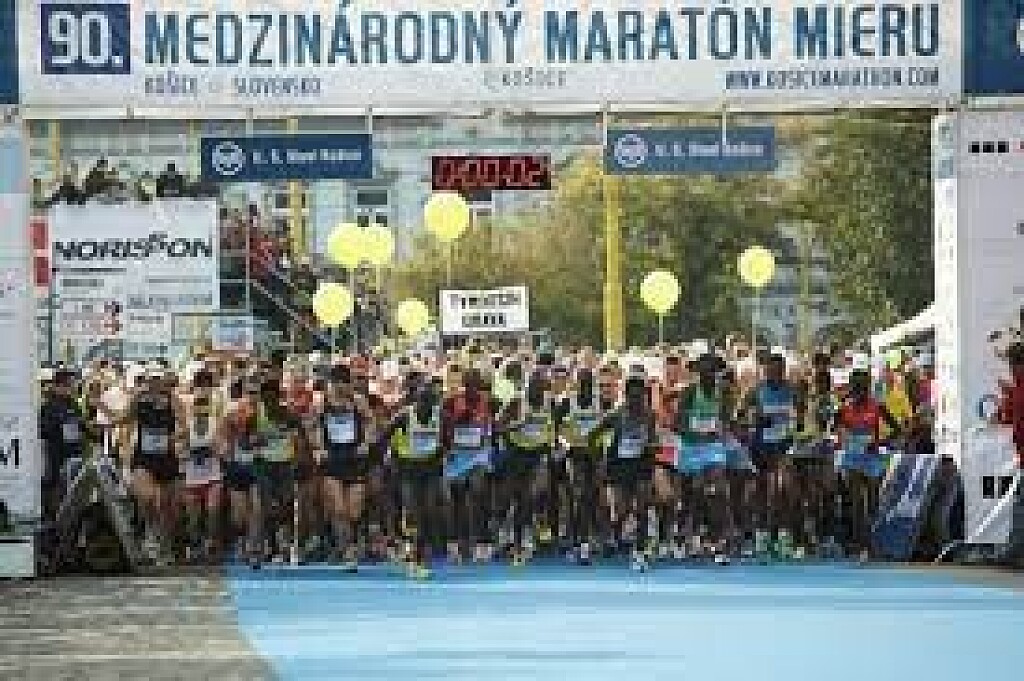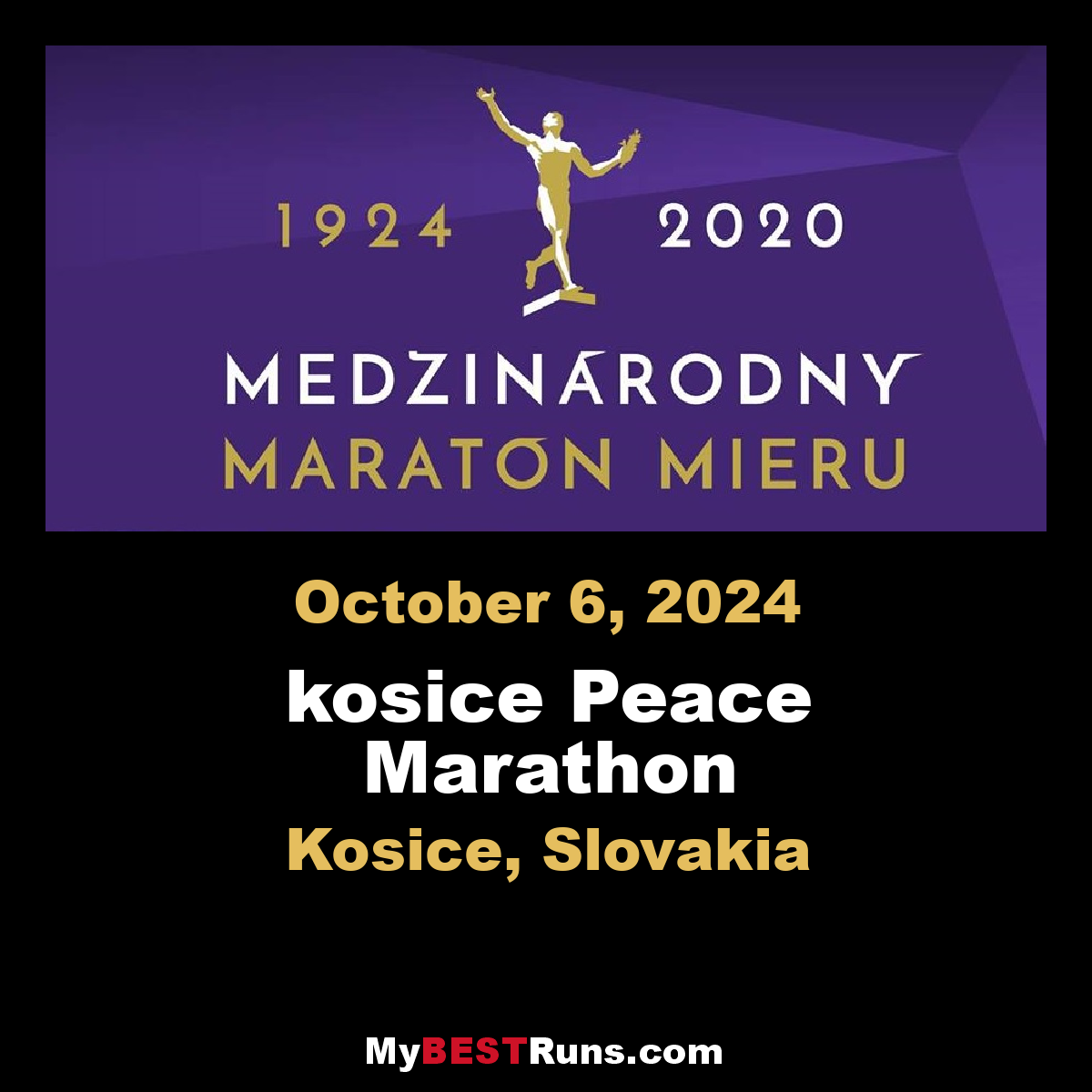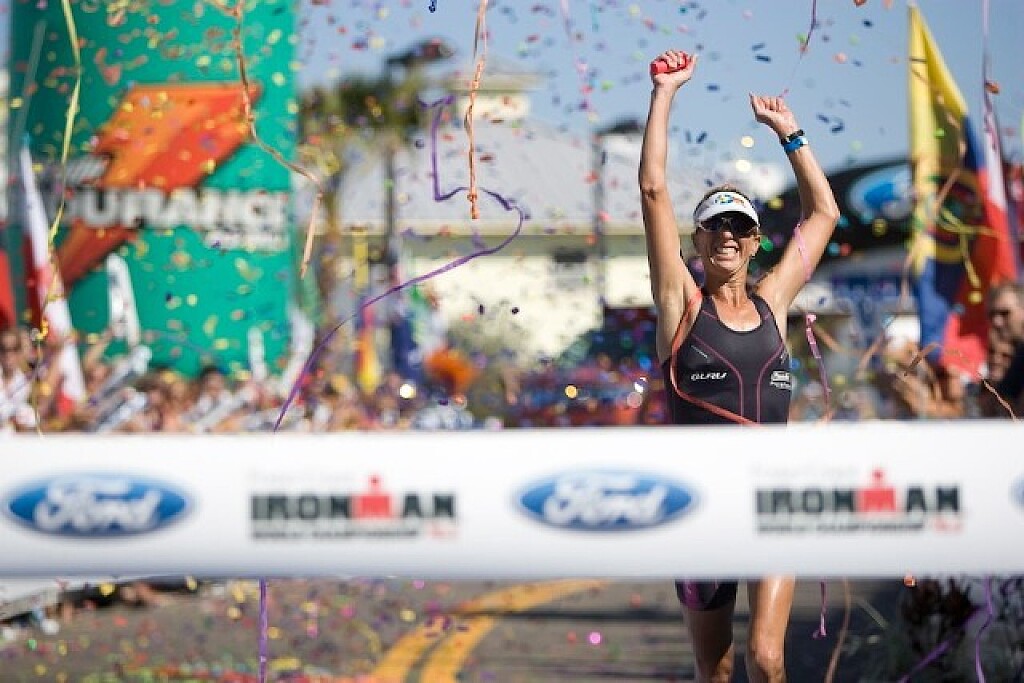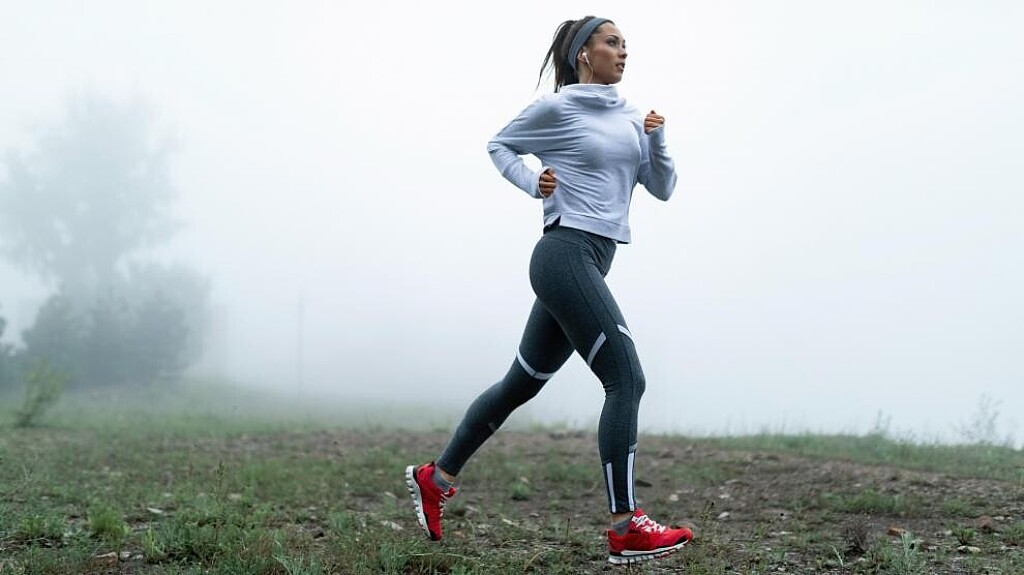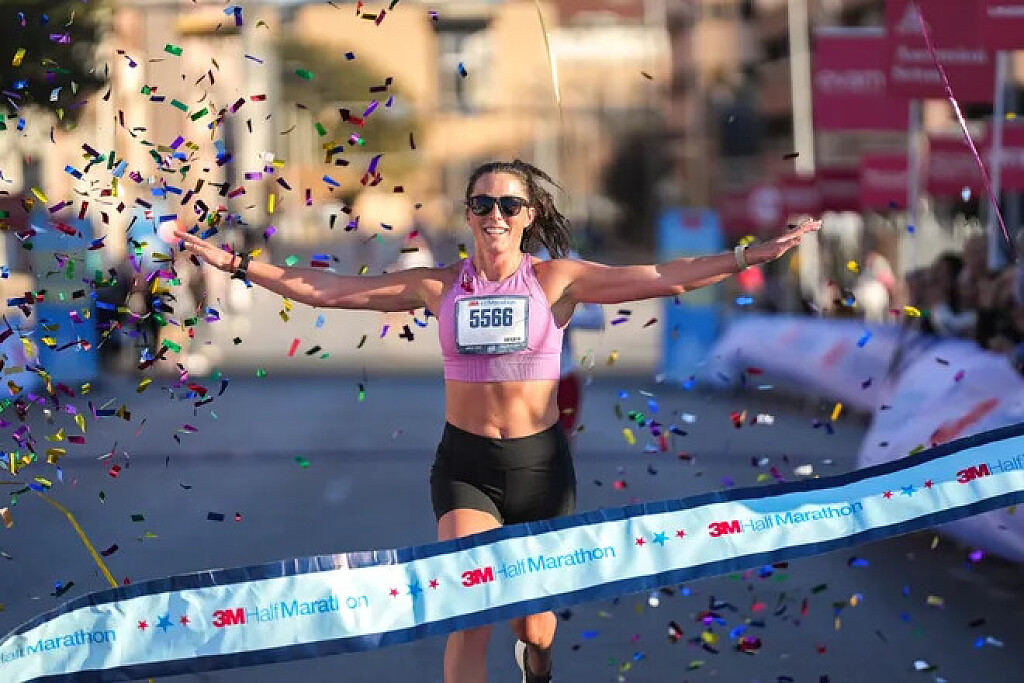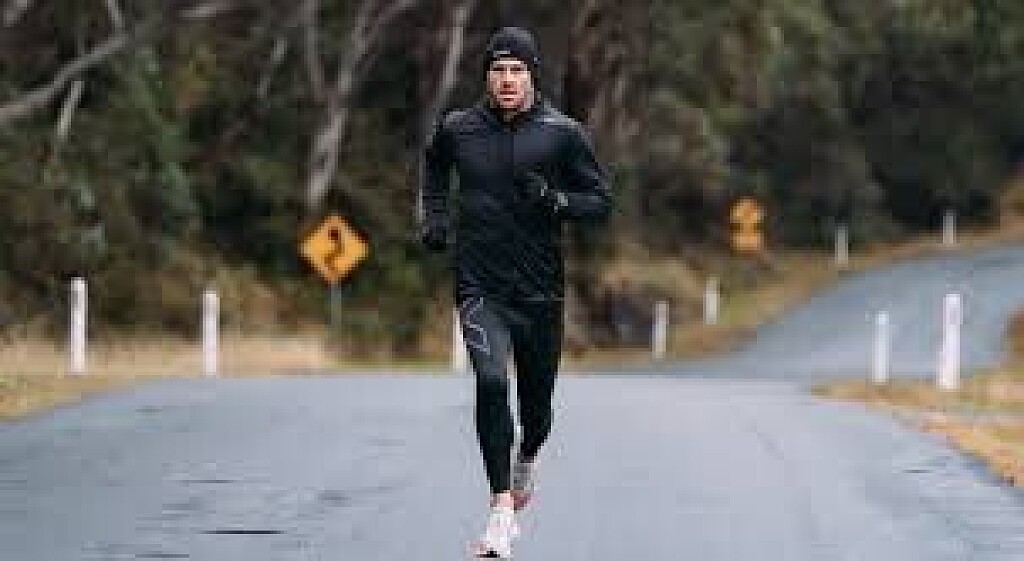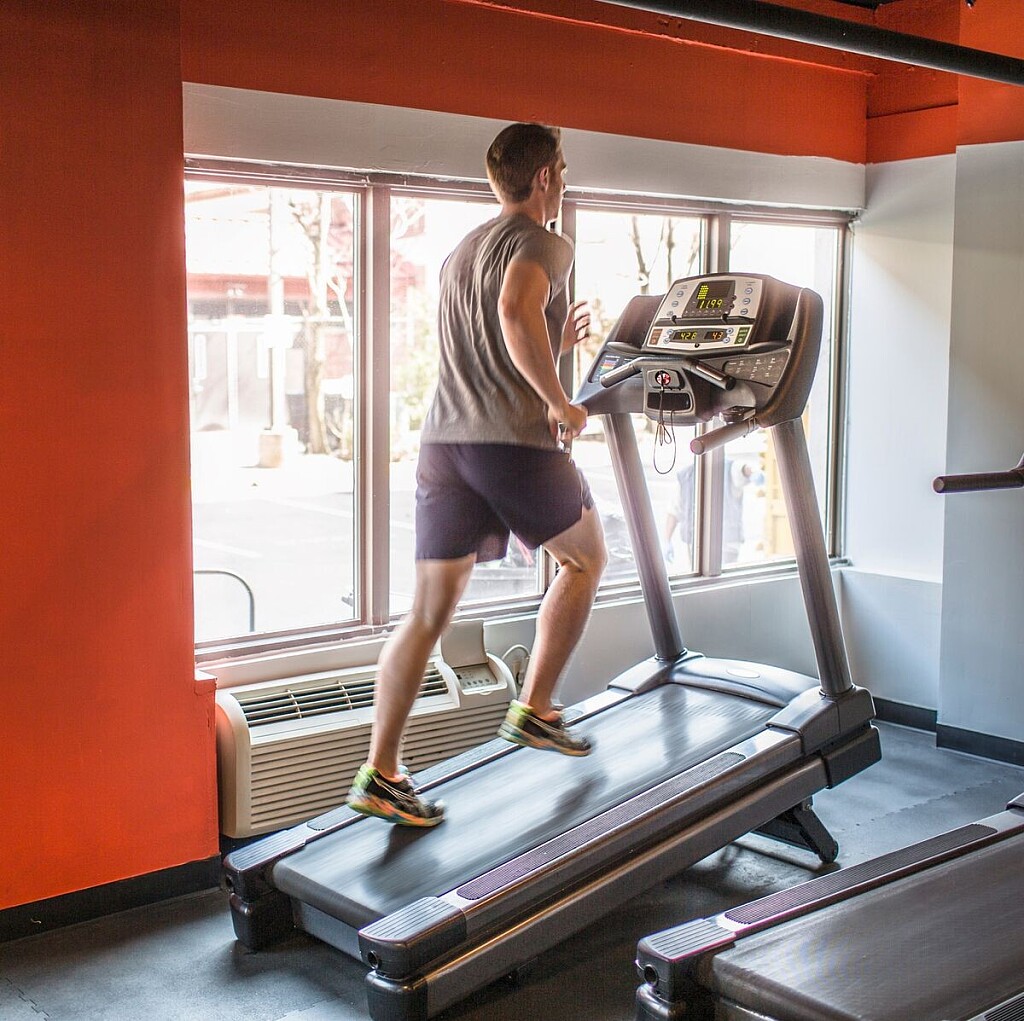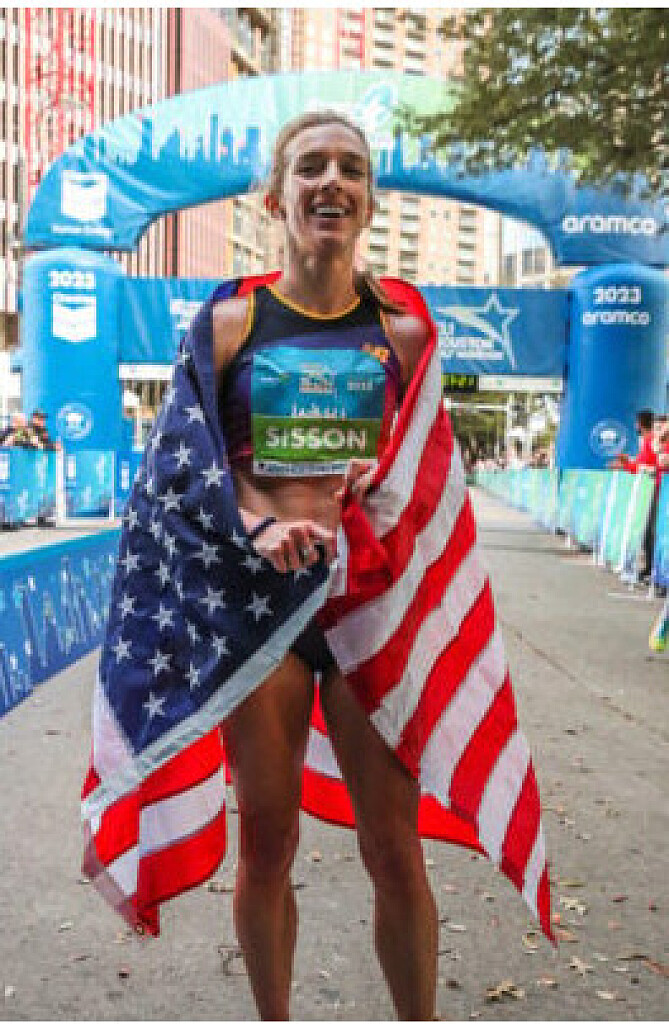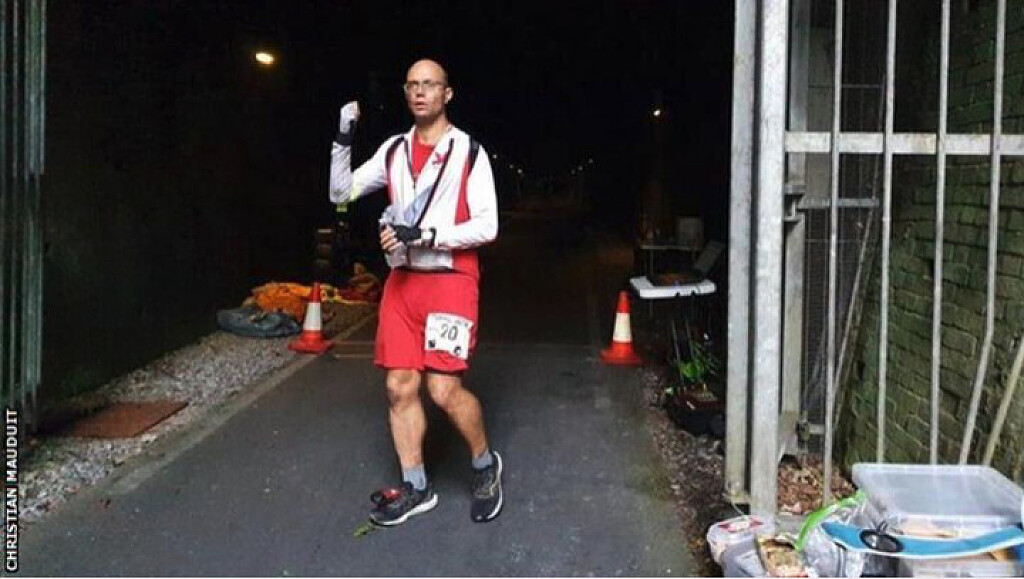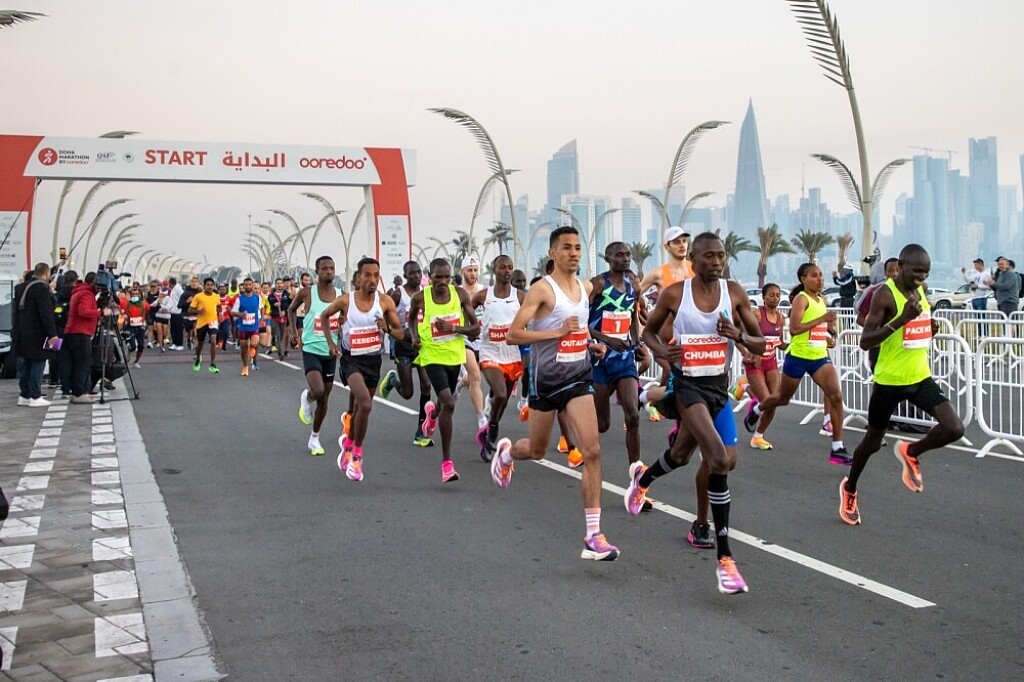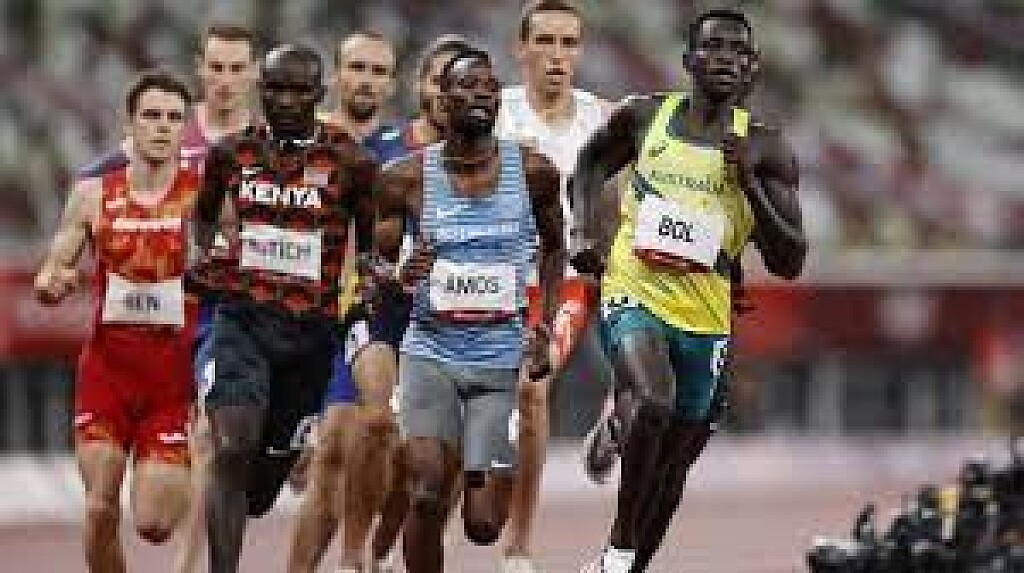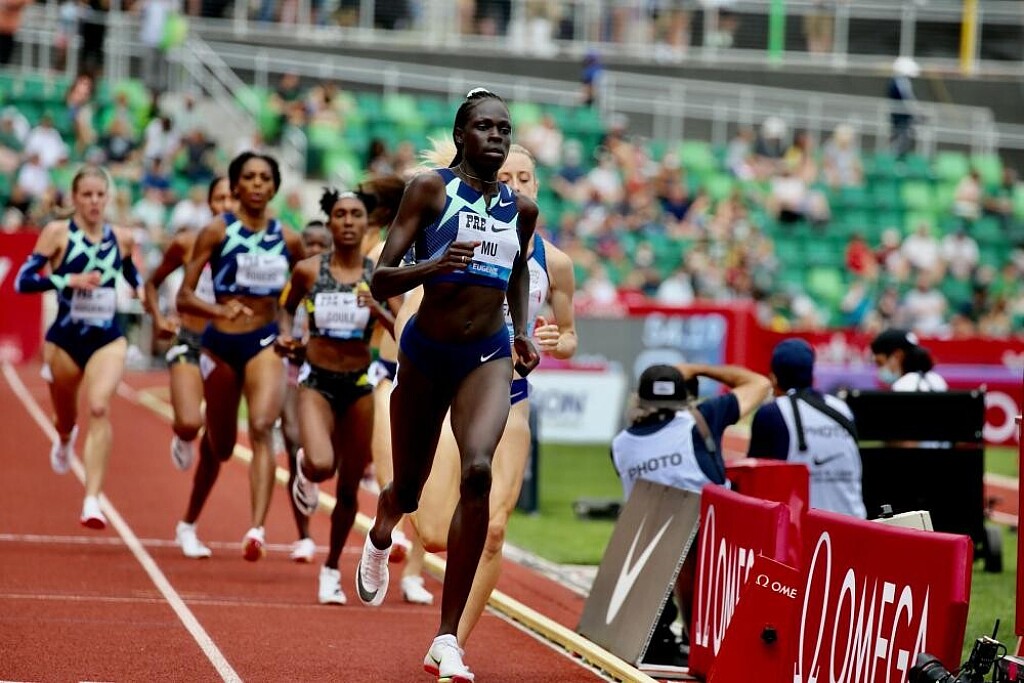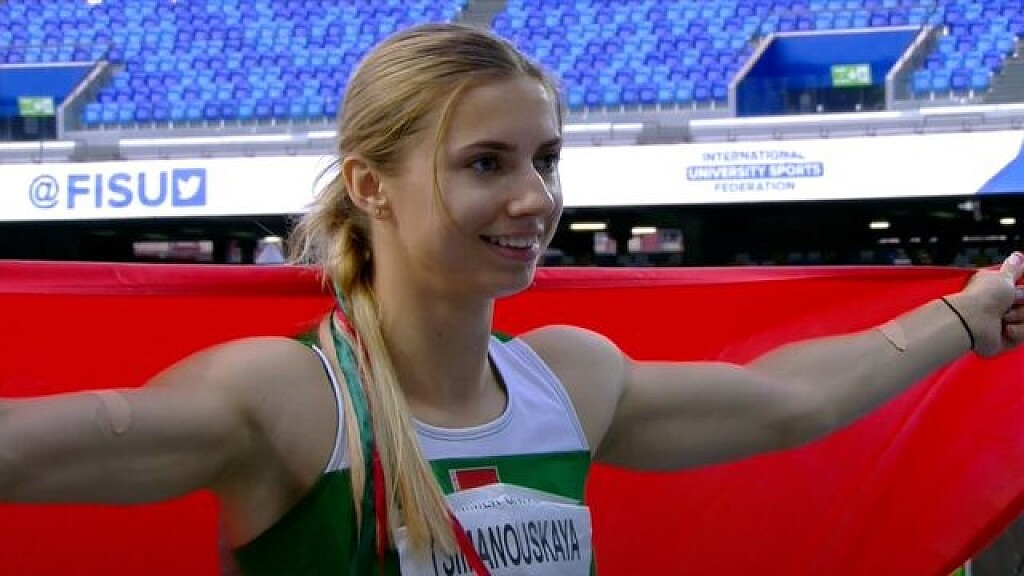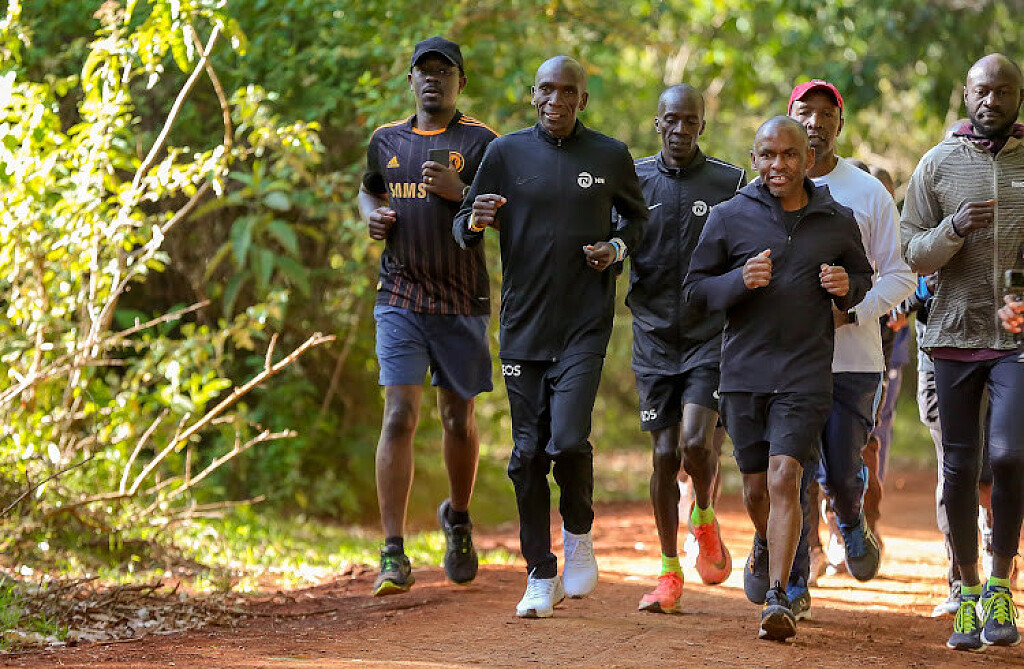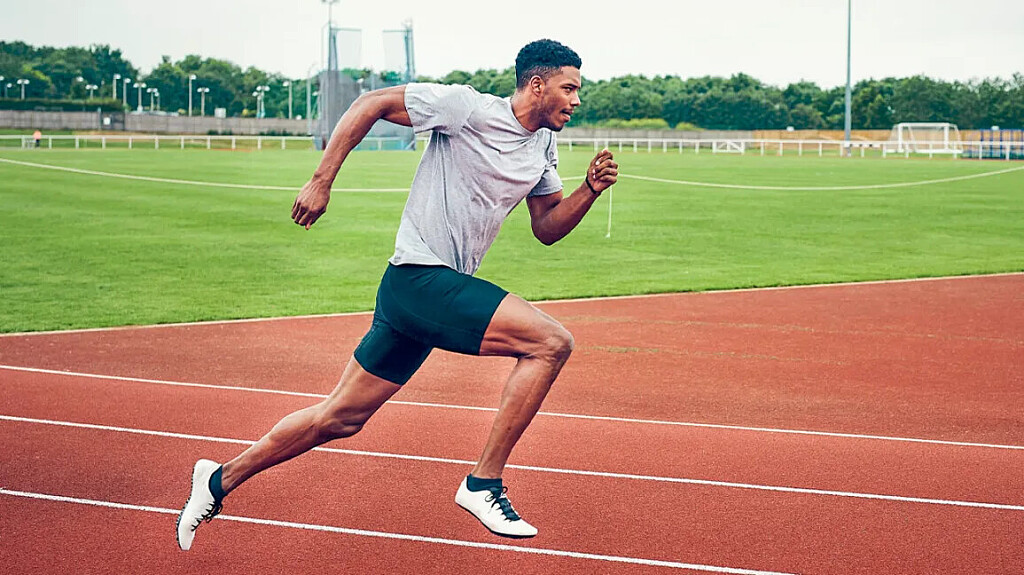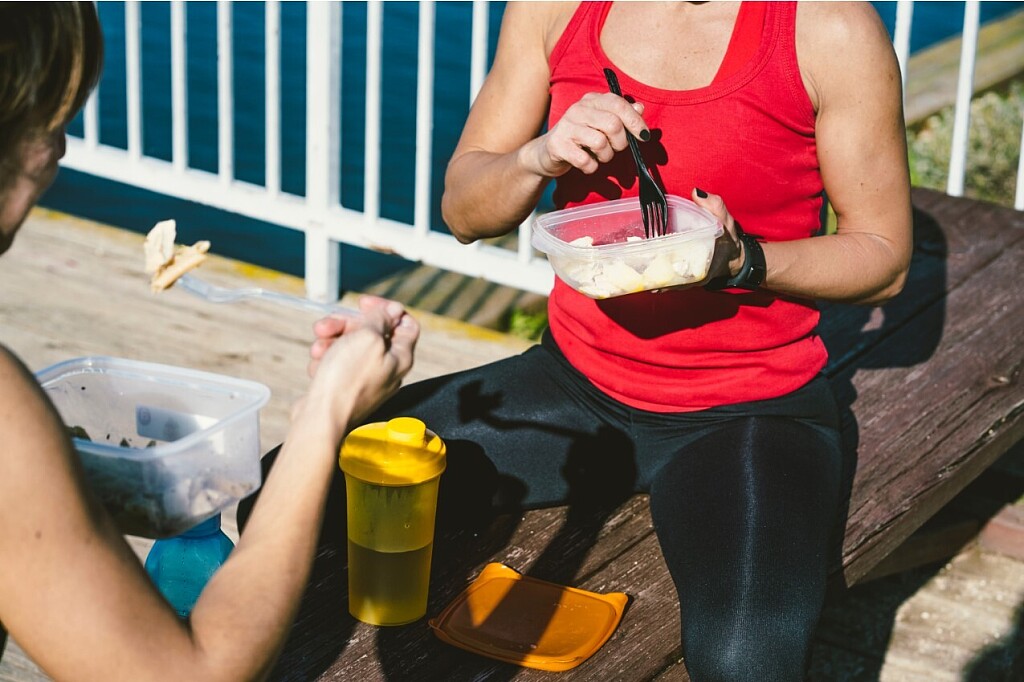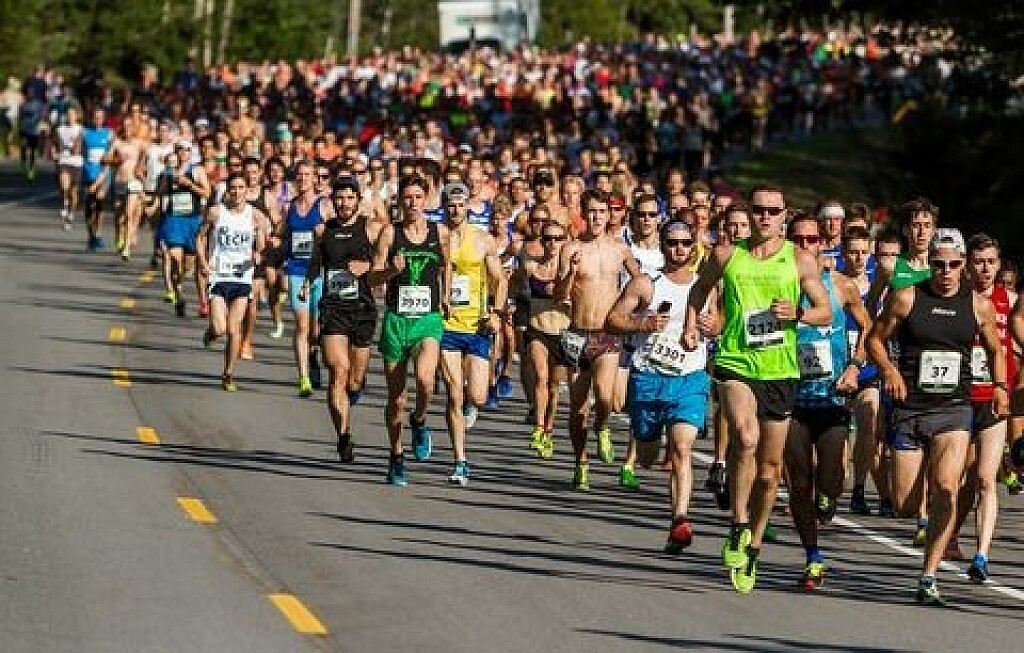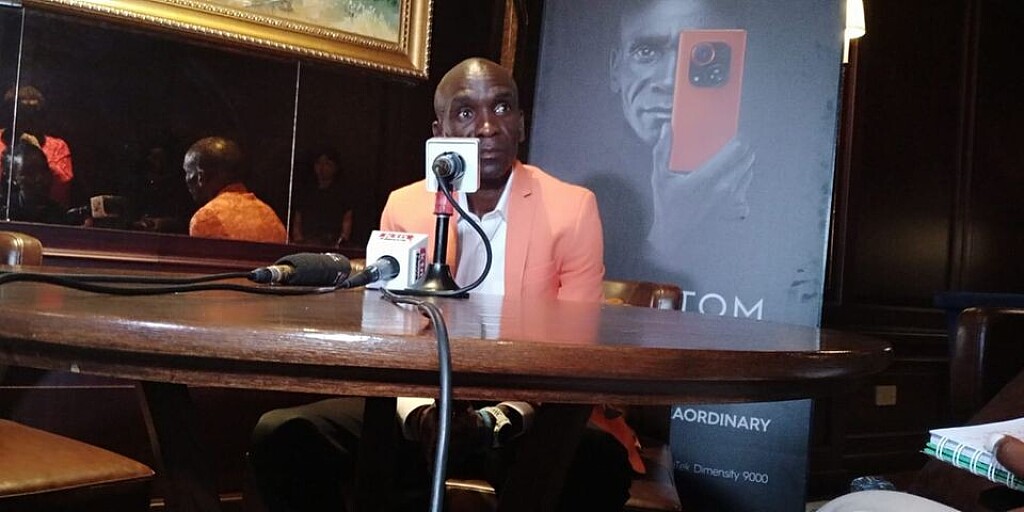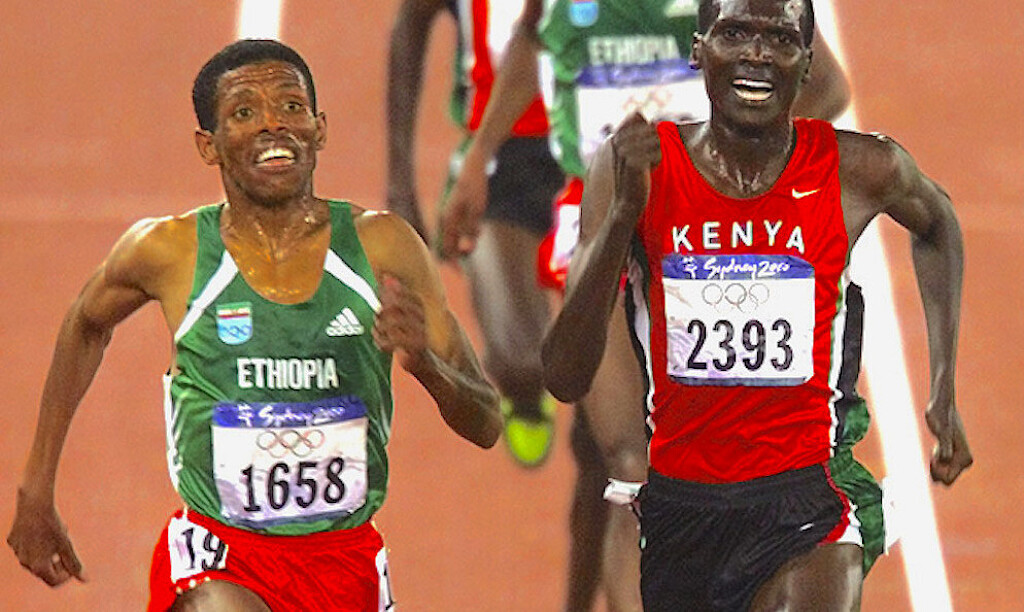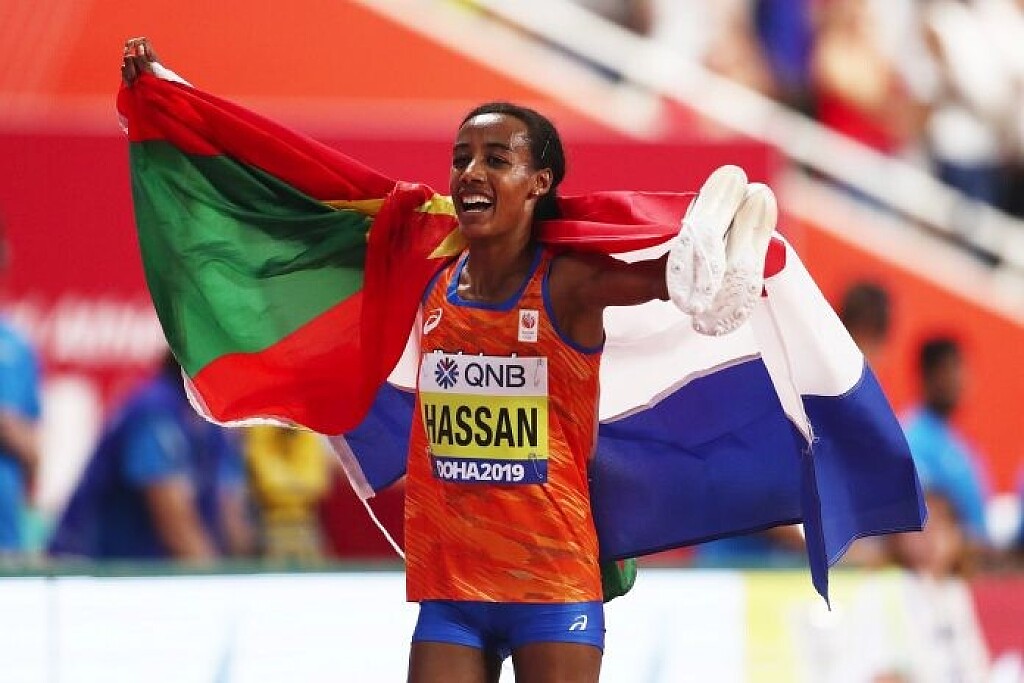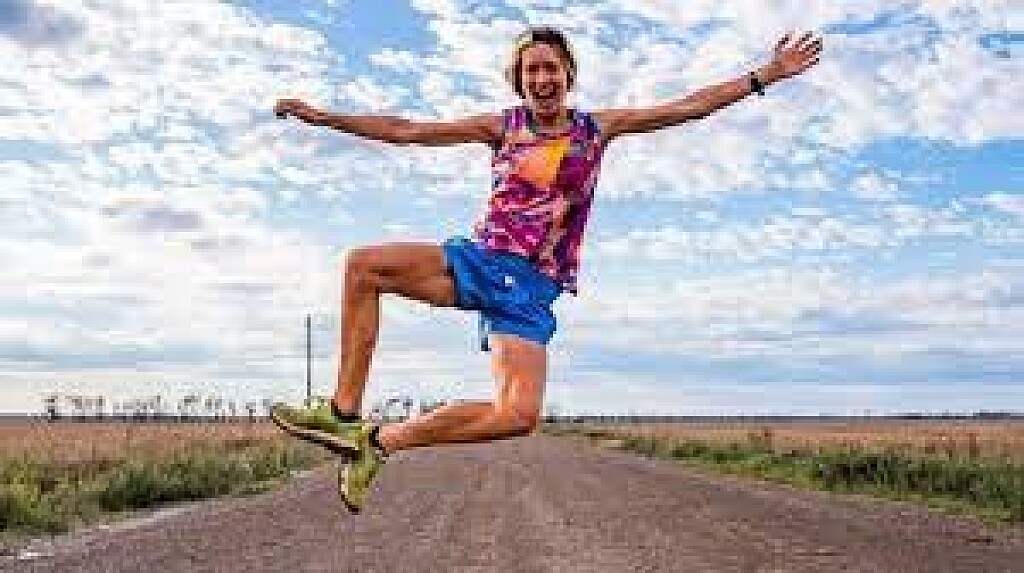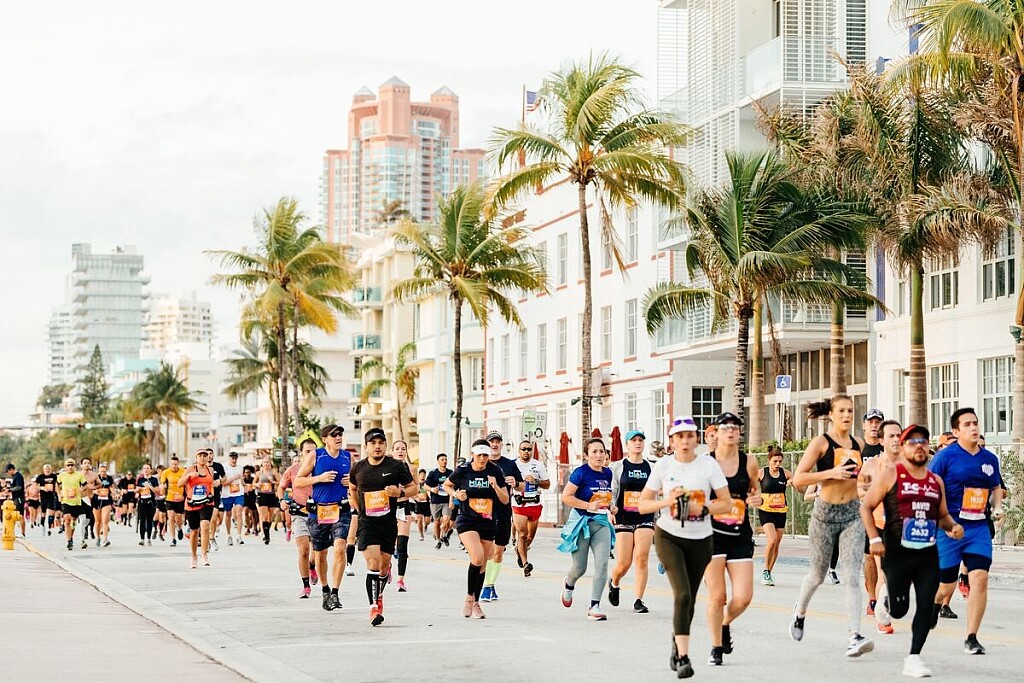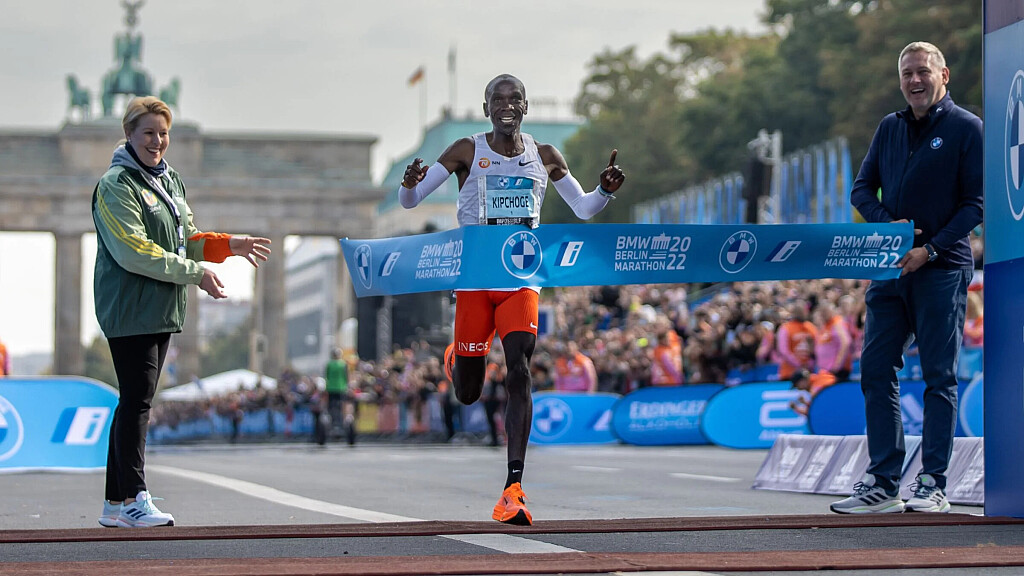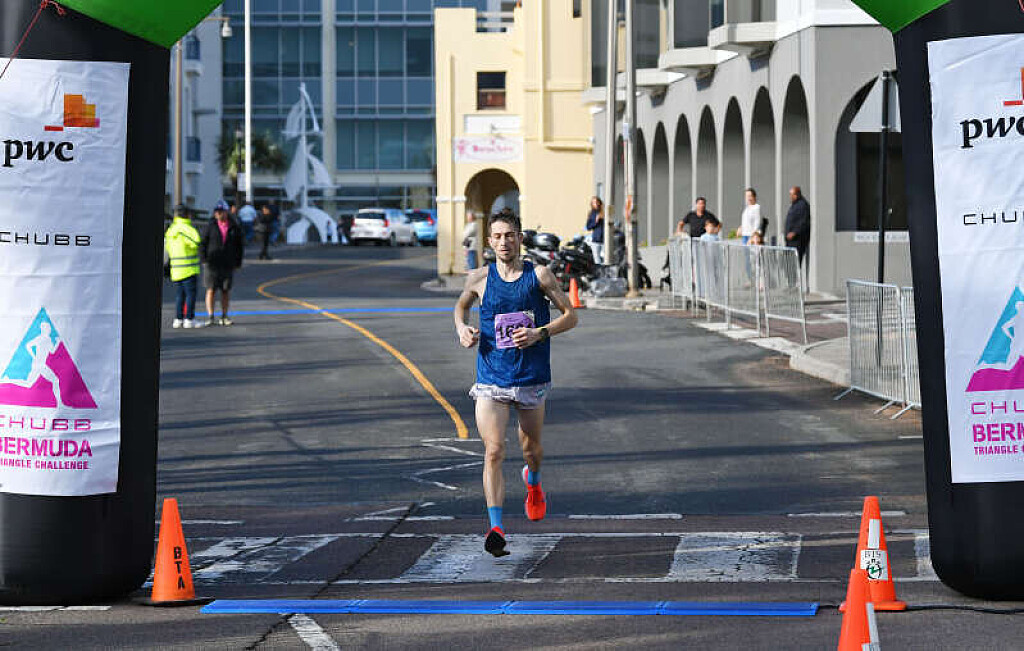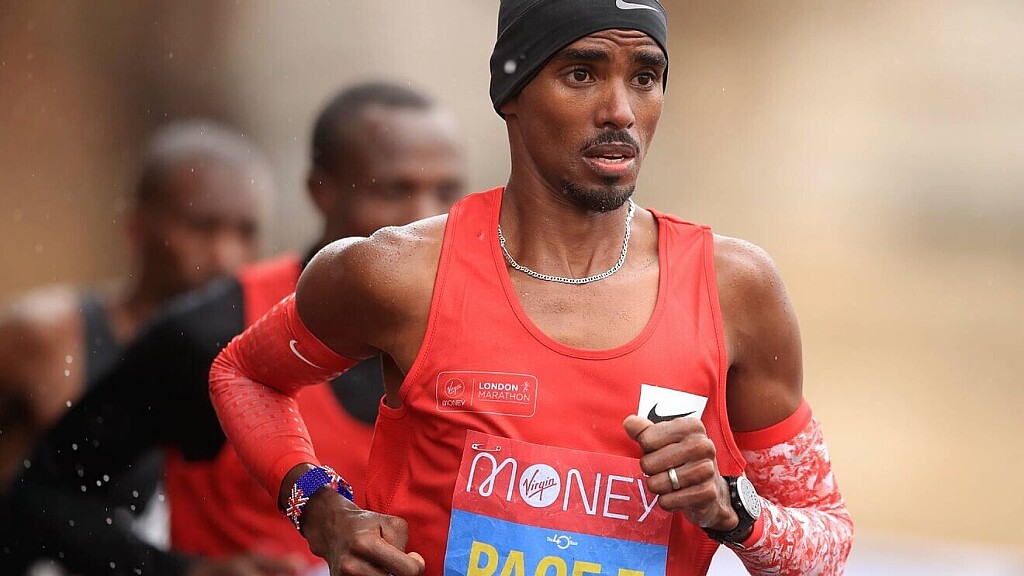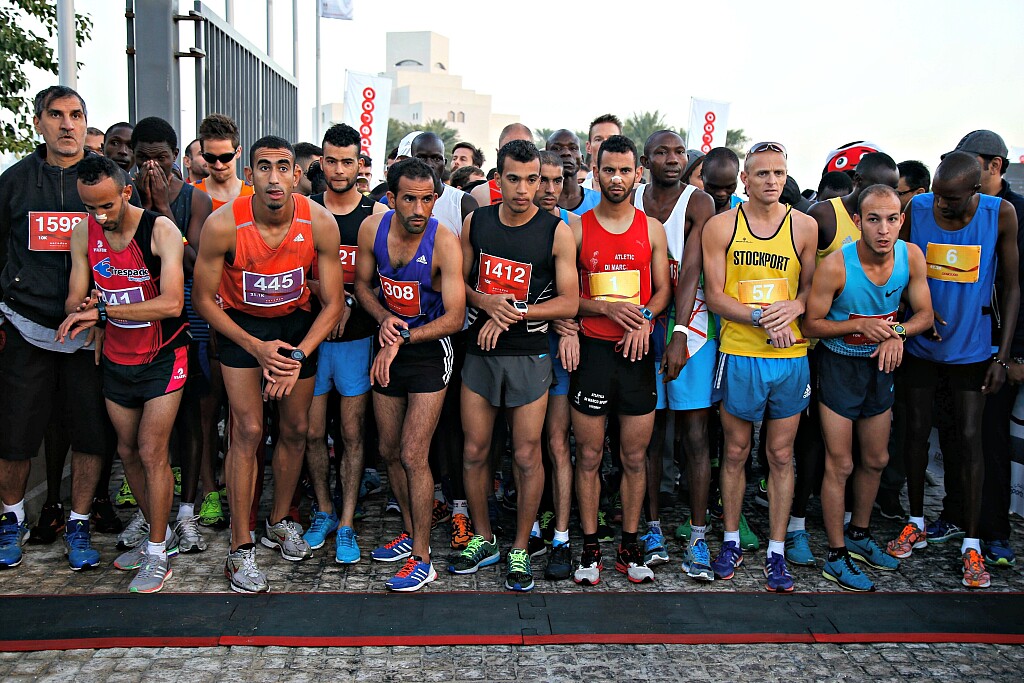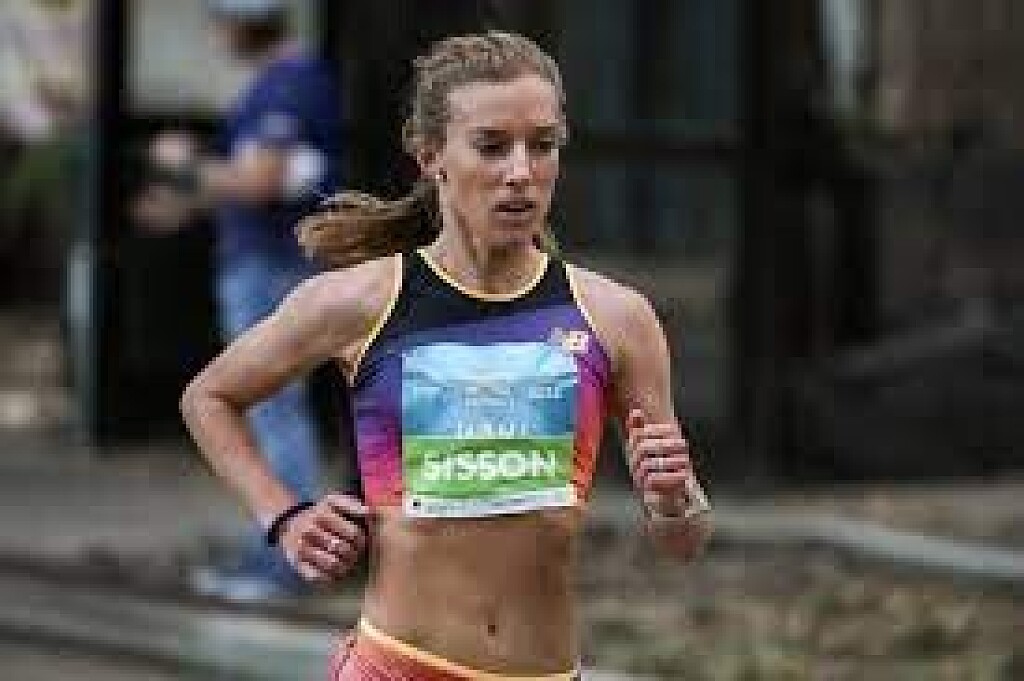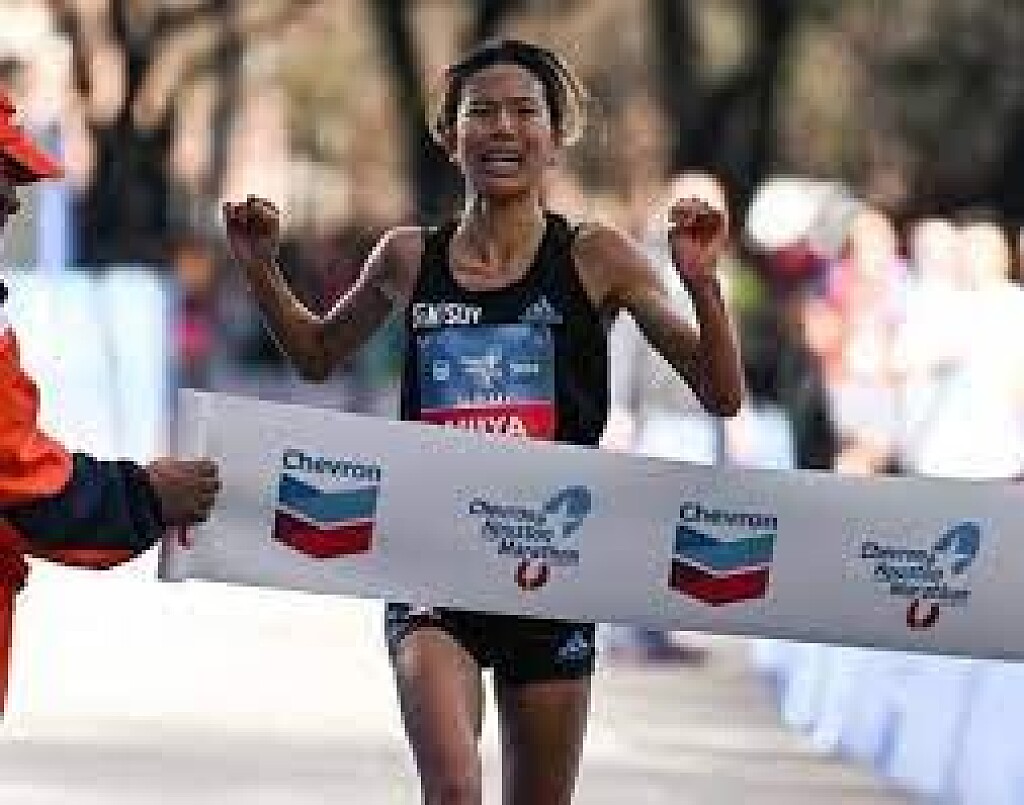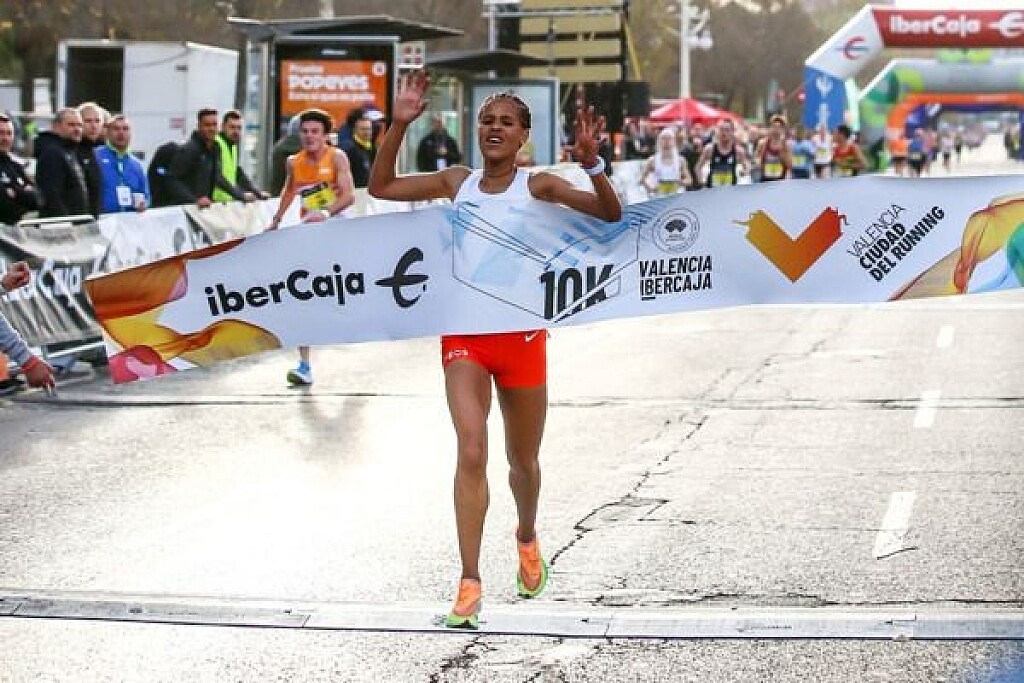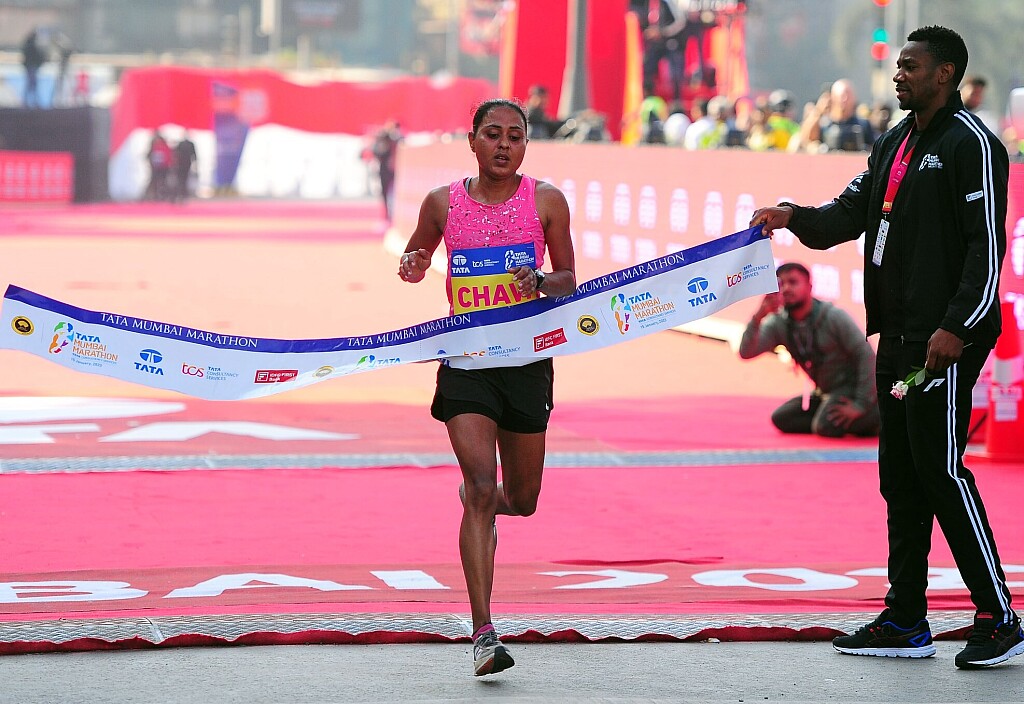Running News Daily
Running News Daily is edited by Bob Anderson in Mountain View, California USA and team in Thika Kenya, La Piedad Mexico, Bend Oregon, Chandler Arizona and Monforte da Beira Portugal. Send your news items to bob@mybestruns.com Advertising opportunities available. Over one million readers and growing. Train the Kenyan Way at KATA Running Retreat Kenya. (Kenyan Athletics Training Academy) in Thika Kenya. Opening in june 2024 KATA Running retreat Portugal. Learn more about Bob Anderson, MBR publisher and KATA director/owner, take a look at A Long Run the movie covering Bob's 50 race challenge.
Index to Daily Posts · Sign Up For Updates · Run The World Feed
How to get the most out of your low running mileage
Are you wanting to get faster for an upcoming race, but everything you read is only telling you to run more? Although many of the pros run hundreds of kilometres per week, high mileage for the everyday recreational runner who has work, family and other commitments is unrealistic. Increasing the distance you run is bound to help your body become more familiar with faster paces and distances, but not every runner has time to do that.
If you don’t have time to increase your mileage, here’s how to get the most out of the mileage you’re currently running.
What is low mileage?

A low-mileage training plan has no set distance, and it can vary depending on the race distance you are training for. If you are training for a marathon, 60 to 80 kilometres per week would be seen as relatively low; a 5K or 10K runner can typically get away with 30 to 50 kilometres a week, with high-quality speed sessions.
Prioritize speed workouts

Whatever your training goal may be, your training schedule should be designed around two quality speed workouts each week. These days will be the most important sessions of the week to get the most out of your low mileage.
If your goal is to break 20 minutes in the 5K, the bulk of your speed workouts should equal up to the distance you’re training for and match the paces needed to reach your goal. (Example: For a 20-minute 5K, 12x400m @ one minute and 35 seconds per lap, which is equal to 18-20 minutes of running).
Keep easy runs short
Studies have shown that anything between 10 and 40 minutes of running can be beneficial when recovering from a tough run or workout. Easy runs are done to get your heart pumping and stimulate blood flow to your legs, but at an intensity that won’t fatigue you.
They are also an opportunity to teach your body how to run in a fatigued state, which can be crucial when you’re entering the final few kilometres of your goal race.
Ideally, you should do your easy run within 24 hours of your last hard workout or long run to keep your legs moving, but keep the time and distance between 15 and 45 minutes depending on what you are training for.
Make strength training essential
The lower your mileage, the more important it is to use strength training as a tool to power your aerobic engine. Cross-training exercises like biking, swimming, HIIT or elliptical training can help someone on lower mileage maintain their aerobic fitness, despite cutting out longer runs. Doing a short 20 to 30-minute low-impact strength session on your rest days can only help you become a stronger runner.
Structure your rest days
Runners on a low-mileage plan should generally take two rest days per week. These rest days should be planned around your harder workouts and long run, on opposite ends of the week (see below).
Example: Monday (workout), Tuesday (easy run), Wednesday (rest), Thursday (workout), Friday (easy run), Saturday (long run), Sunday (rest)
Strategically planning your rest days will be key to getting the most out of your low mileage and having your body rested heading into your speed workouts.
(01/26/2023) ⚡AMPby Marley Dickinson
AIU hands Kenyan Betty Wilson Lempus five-year ban
Betty Wilson Lempus was Thursday handed a five-year ban by Athletics Integrity Unit (AIU), for violations of the World Athletics Anti-Doping Rules (ADR).
Her period of ineligibility begins on October 14, 2022, the date on which she was provisionally suspended. Her results on and since September 5, 2021 (the date on which she tested positive) have been disqualified.
In October 2022, the Kenyan was first charged with Tampering or Attempted Tampering with any part of Doping Control (Rule 2.5 ADR), including obstructing or delaying the AIU’s investigation through the provision of false information or documentation.

Then, last month, Lempus was further charged with the presence of a Prohibited Substance or its metabolites or markers (Rule 2.1 ADR; Triamcinolone Acetonide).
Lempus, who finished third at 2018 Shanghai International Marathon, tested positive for prohibited substance triamcinolone acetonide following her win at the 2021 Harmonie Mutuelle semi de Paris half marathon having posted a time of 1:05:46.

Lempus, 31, alongside the 2021 Boston Marathon champion, Diana Kipyokei had provisionally been suspended for using banned substances last year in October.
Both have also been charged with obstructing the AIU’s investigation by providing false information or documentation.
Lempus finished fifth at the Prague Marathon in 2:24:16 last year, and won the Paris Half Marathon in 1:05:46 the same year.
In 2016, the country was placed in category 'A' of the World Anti-Doping Agency’s (WADA) compliance watch list.
(01/26/2023) ⚡AMPby Agnes Makhandia
Why conversations surrounding eating disorders so often fall short
As an avid trail ultra-runner, I used to believe that working on my self-esteem and self-confidence, fixing my relationship with eating and divesting from diet (a.k.a. “wellness”) culture was enough for me to stay on the path toward healing. For context: I struggled with an eating disorder (undiagnosed bulimia) for about three years, starting my recovery five years ago. Today, I can confidently say, I have finally arrived at a place where I feel at home in my body, but I must stress that the path to getting here was winding and convoluted.
You see, one of the challenges of struggling with an eating disorder in the running community, especially if you’re a Black woman, is that most of the runners talking about their struggle are thin, white, elite women runners. This was true seven years ago, and it is still true today.

Eating disorders are thus seen as a predominantly white affliction, and the ways in which they are talked about have the effect of “centering” whiteness–i.e., it assumes everyone in the conversation is white. As a result, when it comes to questions about the causes of eating disorders, most discussions lack nuance, focusing on body image, why eating enough or eating “healthy” is important for recovery, the “runner’s body” and the ideal of thinness—surface discussions about how striving for a certain body esthetic is problematic, with an emphasis on what is now framed in the running world as the “any body is a runner’s body” narrative.
This discourse offers an incomplete picture. Non-white and Black folks like myself end up feeling disconnected and excluded from the narrative, and other complex layers around development, diagnosis and recovery are ignored. If you’re someone who lives with multiple marginalized identities (I’m an immigrant who identifies as a Black Kenyan-Somali Muslim woman), many of these factors are rooted in systemic issues. Of course, for folks who identify as queer, or trans, it’s even harder to feel seen. The stories we read, by default, have a tendency to distance eating disorders from the larger framework of oppression, thus allowing these systems to go unchecked and further complicating recovery for some (or rather, the majority, since studies have shown that eating disorders are highest in trans communities).
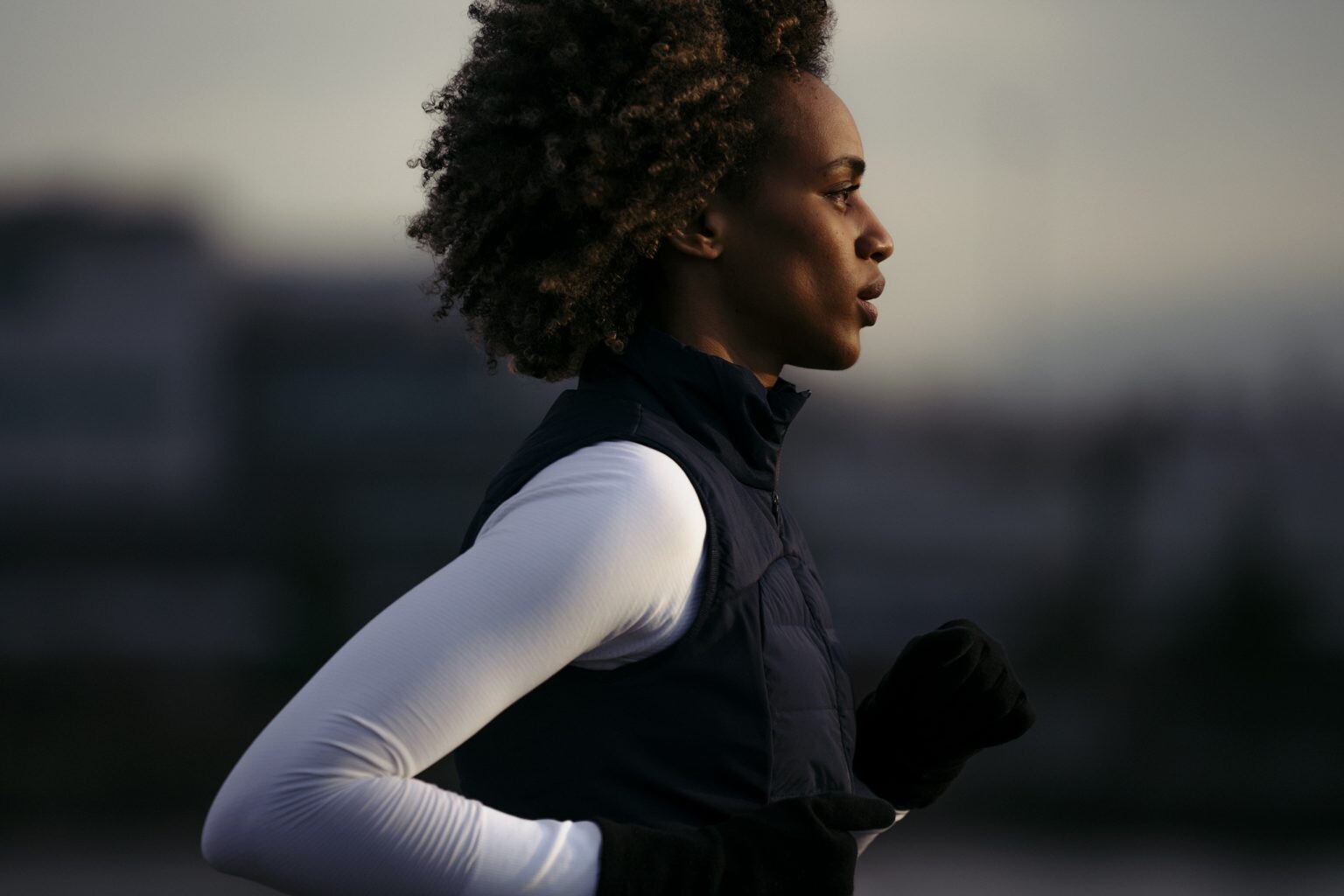
I offer up this piece as part of my attempt to broaden the discussion established by the current wave of writing and thinking on eating disorders in the running world. When we rarely address the politics of what it is like to run and live in a marginalized body struggling with an eating disorder, we cause further harm. Most Black and non-white folks end up struggling alone in silence, like I did. In addition, the running world furthers this harm when they choose to center body image and/or behavioral factors when talking about the causes of eating disorders. Framing eating disorders as a struggle with body image alone turns it into an issue about one’s individual relationship with their body and excuses institutionalized oppression.
As a Black woman who struggled with body dysmorphia and focused on healing my body image for the first few years of my recovery, I can honestly say that that was only one piece of the puzzle. During this time, I also turned to the Body Positive movement, which is heavily adopted in the running world, but I still felt like something was missing.
The way Body Positivity is currently viewed in the running world, there is an emphasis on loving and accepting your body as it is. There is little to no attempt to understand the systemic reasons that it’s more complicated than that in our world. This can partly be explained by the faces behind the Body Positive movement–again, mostly small bodied, white women. For this reason, Body Positivity does little to nothing to fight against anti-fat bias and other systems of oppression, and this is why for me it wasn’t enough.
Learning from fat activists about how the Body Positive movement had its roots in fat activism and fat liberation and then deviated from this politic once it became popularized, helped me reach the place I am today. So did learning about how systems of oppression operate within the running spaces I’m in, and how these continue to complicate not only my relationship with my body, but also my eating.
Although I say I feel at home in my body today, this work is multifaceted and non-linear and forever ongoing, because we live in a toxic world where anti-fat bias has been normalized, and, just like the stories we see about eating disorders in the running world, it is the thin, white experience that gets centered.
We need to do better. We can start by de-centring the experience of white women and featuring more diverse stories of marginalized folks.
We can decouple health and running and stop talking about health alongside weight loss in our running communities. This promotes fatphobic messaging and causes harm.
We can find or create running communities that do not promote diet culture and/or normalize disordered behaviors. For me, this happened organically through the Project Love Run collective/initiative.
(01/25/2023) ⚡AMPby Filsan Abdiaman
Rak Half Marathon
The Ras Al Khaimah Half Marathon is the 'world's fastest half marathon' because if you take the top 10 fastest times recorded in RAK for men (and the same for women) and find the average (for each) and then do the same with the top ten fastest recorded times across all races (you can reference the IAAF for this), the...
more...B.A.A. announces pregnancy deferral accommodations for all B.A.A. events, including Boston Marathon
The Boston Athletic Association (B.A.A.) announced today accommodation enhancements pertaining to runners who are expecting or have recently welcomed a child into their families. Pregnancy and postpartum deferrals of entries will now be available for registered participants at all B.A.A. events, including the Boston Marathon (April), B.A.A. 5K (April), B.A.A. 10K (June), and B.A.A. Half Marathon (November).
“In listening to our participants and stakeholders, the desire from mothers and expecting mothers to participate in our races –particularly the Boston Marathon—while also focusing on building a family was clear,” said Jack Fleming, President and Chief Executive Officer of the B.A.A. “Women who are entered in a B.A.A. race and want to expand their family will be able to do just that without giving up a chance to participate at a future B.A.A. event.”

Any athlete who is a registered entrant in a B.A.A. event and is or becomes pregnant prior to race day and chooses not to participate due to such circumstances will be eligible to receive a deferred entry into one of the next two subsequent future races. The new pregnancy and postpartum deferment policy is effective immediately, and includes athletes who are entered in the Boston Marathon by way of qualifying time or invitational entry.
Athletes seeking a pregnancy or postpartum deferral may submit a request in writing to registration@baa.org any time between receiving confirmation of acceptance into the event and up to 14 days before race day. Upon receipt of a pregnancy or postpartum deferment request, the B.A.A.’s Athlete Services team will be in contact with the athlete and will request confirmation of pregnancy from a physician, registered midwife, or other medical professional.
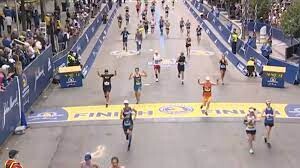
“We at the B.A.A. are always looking for ways to improve the participant experience starting at the point of registration, and have been collaborating to create this policy for many months,” said Susie Cleary, the B.A.A.’s Director of Athlete Services. “This new deferral accommodation has been implemented with the goal of supporting mother runners along their journey at all our events, from the 5K distance through the marathon.”
If an athlete becomes pregnant again during a pregnancy or postpartum deferral period, they may request a second consecutive pregnancy or postpartum deferral. This would permit the athlete to defer their race entry for a subsequent two-year period. The B.A.A. will allow up to two consecutive pregnancy deferral requests per athlete. Policy details will be posted on www.baa.org soon.
The pregnancy deferral opportunity is an accommodation in addition to the registration insurance currently offered to Boston Marathon participants, which covers refunds for a variety of situations, including pregnancy. All other rules and requirements for race entry after a pregnancy or postpartum deferral will apply, including payment for future registration entry fees.
In addition to deferrals, the B.A.A. will be enhancing accommodations for recent mothers on race weekend. For more than a decade, mothers have been provided the opportunity to utilize designated tents at the start and finish of the Boston Marathon for lactation pumping. In response to the overwhelming support of this program and the accompanying medical device transport program (where race officials transport devices such as breast pumps from the start to finish), the B.A.A. plans to share additional accommodations as race day approaches. The B.A.A. is currently consulting a group of mother runners to help facilitate best practices at our events. More information will be shared with participants over the coming months.
ABOUT THE BOSTON ATHLETIC ASSOCIATION (B.A.A.)
Established in 1887, the Boston Athletic Association is a non-profit organization with a mission of promoting a healthy lifestyle through sports, especially running. The B.A.A. manages the Boston Marathon, and supports comprehensive charity, youth, and year-round programming. The Boston Marathon is part of the Abbott World Marathon Majors, along with international marathons in Tokyo, London, Berlin, Chicago, and New York City. Since 1986, the principal sponsor of the Boston Marathon has been John Hancock. The 127th Boston Marathon is scheduled to take place on Monday, April 17, 2023. For more information on the B.A.A., please visit www.baa.org.
(01/25/2023) ⚡AMPby Boston Athletic Association
Boston Marathon
Among the nation’s oldest athletic clubs, the B.A.A. was established in 1887, and, in 1896, more than half of the U.S. Olympic Team at the first modern games was composed of B.A.A. club members. The Olympic Games provided the inspiration for the first Boston Marathon, which culminated the B.A.A. Games on April 19, 1897. John J. McDermott emerged from a...
more...Try a cut-down tempo workout to prime your legs for race day
Tired of running the same intervals or hill repeats on speedwork days? A cut-down tempo run will add some zest to your routine while setting your body up to run hard on race day. In a cut-down run, the longer, mentally tough sections of the workout are done first, with intervals getting shorter and faster as you continue.
This can be a great way to increase intensity in your speed workouts without adding risk of injury–your body is very warmed up and ready to roll by the time you hit the faster sections.
How do I run it?
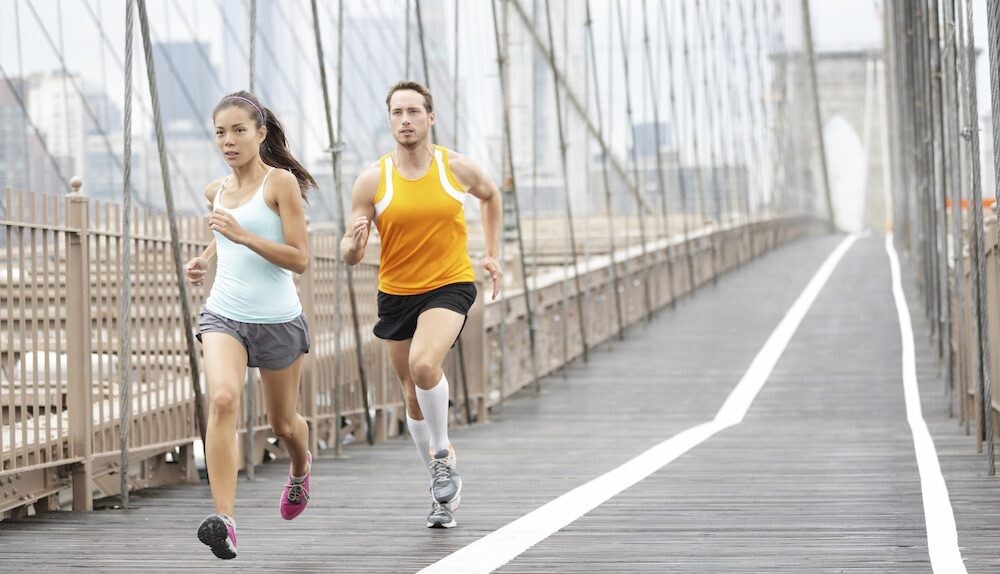
The cut-down tempo run using distance or time, with the goal of increasing your speed as the intervals get shorter. It’s a great way to prime your legs and lungs to work hard when fatigued, helping you master that finishing kick on race day.
Rest is short in a cut-down run, so maintaining a smooth pace in the early intervals is important so that you’ll still be able to increase your speed at the end. In both these workouts, begin at around your half-marathon pace, picking up speed with each interval until you’re running at 5K race pace for the final push.

Cut-down workout by distance
Warm up with 2–3 kilometers of easy running
Run 1 km harder followed by 200m easy running for recovery, 800m hard followed by 200m easy, 400m, 200m, 100m (maintaining the 200m light jog in between each interval).
Cool down with 2–3 kilometers of easy running
Cut-down workout by time
Warm up with 10–15 minutes of easy running.
Run 5:00 minutes at goal pace, one minute of easy running for recovery, 4:00 minutes at goal pace (maintaining the minute of recovery in between each interval), 3:00, 2:00, 1:00.
Cool down with 10–15 minutes easy running
Make sure to follow your speedwork sessions with a recovery day or a day of easy running.
(01/25/2023) ⚡AMPby Keeley Milne
Jamaica’s Yohan Blake to retire after Paris Olympics
Former 100m world champion Yohan Blake, who is also the third fastest man in history over 100m, will hang up his spikes after the 2024 Olympics in Paris.
The 33-year-old Jamaican sprinter revealed to insidethegames that the Paris Olympics will be his “last dance.” The four-time Olympic medalist will be 34 at the start of Paris 2024.

“Doing the 200, 100 and relays simply takes a lot out of you, so these are the events I want to focus on for 2024,” Blake said.
In 2011, at only 21, Blake became the youngest sprinter in history to win the 100m at a World Championships when he claimed gold in Daegu, South Korea.

A year later, Blake went on to win two silver medals at the London 2012 Olympics in the 100m and 200m behind his training partner Usain Bolt, who had been disqualified in Daegu for a false start.
His time of 9.69 seconds over 100m is the third fastest in history, behind only Bolt and Tyson Gay of the U.S.A. He also has the fastest 100m and 200m in Olympic history among athletes who did not win an individual gold medal.
Blake still won two Olympic golds as part of Jamaica’s 4x100m relay teams in London and Rio 2016. He will always be known for his nickname, “The Beast,” which represents his eccentric personality, his impressive physique and aggressive sprinting style.
At the 2022 World Championships in Eugene, Ore., Blake bowed out of the semi-finals in the 100m and 200m, and it was the first time since 2000 that Team Jamaica did not reach the podium in the 4x100m relay.
(01/25/2023) ⚡AMPby Marley Dickinson
Paris 2024 Olympic Games
For this historic event, the City of Light is thinking big! Visitors will be able to watch events at top sporting venues in Paris and the Paris region, as well as at emblematic monuments in the capital visited by several millions of tourists each year. The promise of exceptional moments to experience in an exceptional setting! A great way to...
more...Judith Korir and Hellen Obiri among elite runners to compete in RAK Half Marathon
With only a few weeks to go, Ras Al Khaimah Tourism Development Authority (RAKTDA) on Monday revealed an initial line-up of four world-class runners set to take part in the 16th edition of the Ras Al Khaimah Half Marathon on February 18, 2023.
The elite female category in the highly anticipated race will see the Women’s Marathon silver medalist at the World Athletic Championships Oregon 2022, Judith Jeptum Korir of Kenya, return to the nature-based Emirate in a bid to claim the title.

With a fourth-place finish in last year’s Ras Al Khaimah Half Marathon, Korir will be looking to beat her personal best time of 65:28 as she takes to the start line for the 2023 edition.
Korir will face competition from Hellen Obiri of Kenya, a two-time 5,000-metre Olympic silver medalist, who finished runner up in Rio de Janeiro 2016, and Tokyo 2020, and holds a personal best half marathon time of 64:22.

She also entered the Ras Al Khaimah Half Marathon 2022, placing second in a competitive field.
The male elite runners include Ethiopian star Seifu Tura, who recently claimed second place in the Chicago Marathon 2022, and Kenyan Daniel Mateiko, who holds a personal best time of 58:26 and recently finished third in the Valencia Half Marathon 2023.
Additionally, race organizers have unveiled a first look at the medal which will be awarded to all finalists once they cross the finish line at the much-awaited race.
The colors of the medals have been carefully selected to represent Ras Al Khaimah’s three key natural elements and core values: the sea with its perpetual swelling and subsiding waves, the desert with its undulating dunes, and the mountains with their staggering elevations.
A landmark event on the Ras Al Khaimah calendar, the half marathon will return to Marjan Island, the Emirate’s spectacular coral-shaped destination home to majestic white sandy beaches and a plethora of world-class hotels and resorts.
(01/24/2023) ⚡AMPby Gulf Today
Rak Half Marathon
The Ras Al Khaimah Half Marathon is the 'world's fastest half marathon' because if you take the top 10 fastest times recorded in RAK for men (and the same for women) and find the average (for each) and then do the same with the top ten fastest recorded times across all races (you can reference the IAAF for this), the...
more...The oldest marathon in Europe is enjoying great interest in its upcoming 100th year, 6,000 already registered
Europe’s oldest marathon celebrates centenary.

The oldest marathon in Europe is enjoying great interest in its upcoming 100th year.

In the first 50 days from the opening of registration, more than 6,000 runners have already signed up, which is about 50% of the entire planned capacity. There are still more than eight months left before the start, so it will be interesting to see how the numbers continue to develop.
Naturally, domestic runners play first fiddle, while on the other rungs, under the flags of dozens of countries, are mainly runners from Poland, the Czech Republic, France, Hungary, the UK and Germany.
In the meantime, the organisers have confirmed that all the main disciplines of the programme, i.e. the Marathon, Half Marathon and Relay, will take place together on Sunday, 1 October. One day earlier, on Saturday, 30 September, the programme will be dominated by the U.S. Steel Family Run.
(01/24/2023) ⚡AMPby AIMS
kosice Peace Marathon
The Kosice Peace Marathon is the oldest European marathon.This year for the organizers of Kosice Peace Marathon is also about memories and flashbacks. One of the fastest marathon courses has been created in Košice 20 years ago on that occasion it was the 1997 IAAF World Half Marathon Champioships. Tegla Loroupe and Shem Kororia were awarded from the hands of...
more...Why runners should consider consulting with a chiropractor
Running is an excellent form of exercise. You only need a good-quality pair of running shoes, and you’re good to go. But running can also harm your body, especially when you overdo it.
You put a lot of strain on your knees, hips, and ankles when you run. As a result, joint pain and other injuries can develop over time.
If you wish to keep running, you may need to consult a professional chiropractor. Only a few people know, even runners, that there are injury prevention methods with chiropractic work. These apply to injuries common among runners.

But why a chiropractor? These licensed healthcare professionals specialize in treating neuromuscular disorders, primarily by manipulating the spine and performing manual adjustments. Chiropractic treatment aims to heal the body and improve overall health.
With proper chiropractic care, you can avoid potential injuries associated with running, and you can continue living an active and healthy lifestyle.

Not convinced yet? Here’s a list of reasons why you should consider consulting a chiropractor.
It Can Help Prevent Injuries
As the saying goes, ‘prevention is better than cure.’ Not all bodies are the same, and not all body parts are symmetrical. You’d be surprised to know that the length of your legs may not be the same, which can cause injuries in the long run.
It’s essential to know your body well to prevent injuries. And one way to do that is to check your body alignment. When the spine is out of alignment, other body parts are weaker and more prone to injury. Running injuries often result from one part of the body compensating for another that is off.
A chiropractor will examine your posture, movements, hips, knees, and foot arch to determine how you stand and move. The benefits of chiropractic treatment can extend to the rest of the body because it helps align the spine.
Moreover, regular chiropractic care and adjustments will lessen the damaging effects of running’s jarring motion on your body and help you avoid running-related ailments.
It Can Help Manage Injuries
Runners will likely sustain an injury at some point, and you shouldn’t take it lightly. It’s not advisable to keep running with an injury because it could severely harm your joints and nerves.
Chiropractic treatment can help with more than just misalignments and tight tendons; it can also speed up the healing process and restore strength to the affected areas.
Another advantage of visiting a chiropractor is that recovering from injuries will go faster with the proper care. It won’t take months to recover if you put in the necessary effort and work with your chiropractor to treat your injury. You’ll be able to return to your routine most quickly and safely.
It Can Help Increase The Range Of Motion
According to a study published in the Journal of Chiropractic Medicine, chiropractic treatment can increase hip mobility over time.
Visiting a chiropractor regularly can help loosen your joints, improve your flexibility, and allow you to move more comfortably. Flexible and relaxed joints allow for more movement, which is good for a runner’s stride and performance.
Though an increased range of motion does not guarantee you’ll get better and faster at running, it can enhance your overall performance and well-being as a runner.
It Can Help Improve Nervous System Functions
When your joints are out of alignment, they can exert pressure on nearby nerves. There’s often discomfort, tingling, numbness, exhaustion, and slowed reflexes.
The realignment of joints and relief of nerve pressure are among the benefits of chiropractic therapy for improving nerve function. Nerve dysfunction can make your body appear older and worn out than it actually is.
Furthermore, chiropractic care can help address neuro-musculoskeletal system abnormalities and revitalize the whole body.
It Can Help You Feel Relaxed
Getting chiropractic care is not only for when you have an injury. It’s also a perfect way to let loose mentally and physically.
You can relax and unwind as your chiropractor works to loosen up your joints and muscles. After a session, you’ll feel refreshed and revitalized, just like after getting a relaxing full-body massage.
Final Takeaway
Anyone who engages in strenuous physical activity knows how important it is to recover and take care of their body. Running is an activity that requires a lot of physical effort, so finding a chiropractor you can trust is something you should consider. If you enjoy running and wish to continue doing so without issues, you may find many benefits from seeing a chiropractor. They can help you prevent and manage injuries, improve your range of motion and nervous system functions, and help you feel relaxed. And that’s more than any runner could ask for.
(01/24/2023) ⚡AMPby Colorado Runner
Five things to master for your next race, shared by Olympian and coach Joanna Zeiger
Races are always tricky–it can be tempting to run hard, fly past aid stations and ignore the enjoyment of the process entirely in pursuit of a PB.
Mastering these five tenets of racing, shared by Olympian and coach Joanna Zeiger in her book The Champion Mindset: An Athlete’s Guide to Mental Toughness will help you sail smoothly through your next race. “If you learn these, you can eliminate at least some potential problems,” she says.
1.- What feels easy at the start feels hard at the end
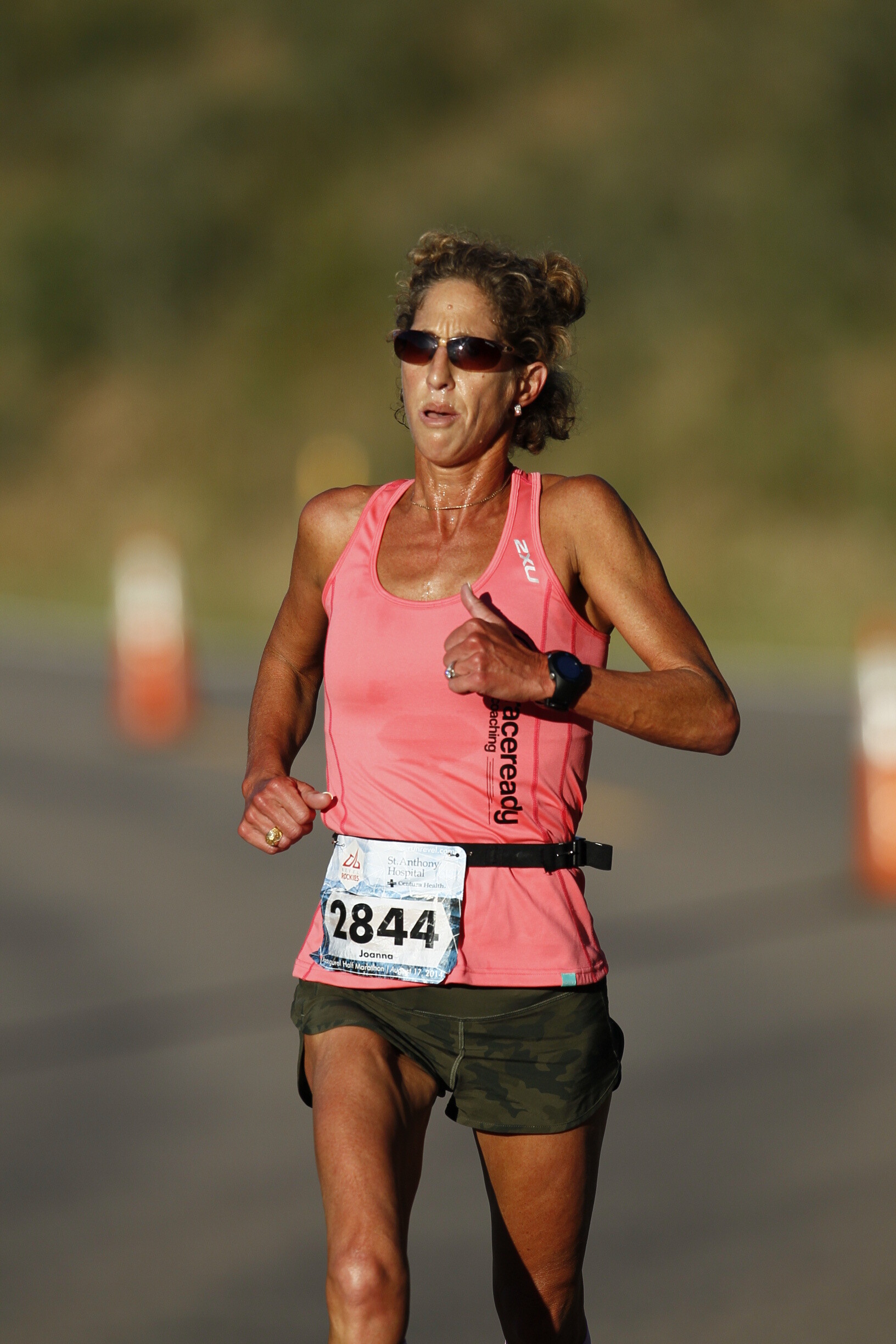
Proper pacing is a skill and a worthy one to work on. No matter how easy and effortless those first few kilometers feel, the last few are going to feel harder. “Do not be deceived by the relative ease at the beginning,” says Zeiger.
What feels like jogging at the start of a longer race may take all your focus and strength to maintain near the end. Remind yourself of this pre-race, and keep it in mind as we move on to rule number two.

2.- Don’t go out too hard
That same feeling of ease at the beginning of a race “lures people into a false sense of what they can achieve,” Zeiger says. “Going out too hard is not necessarily a subjective measure–you cannot rely on how you feel, because you should feel good.”
Zeiger says she has never heard someone say that they wish they’d gone out harder in the first half. It can be helpful to set a pace or HR guideline for yourself or follow a pace bunny if you’re in a longer race.
3.- It’s hard to imagine things going wrong
Races often have beautiful beginnings. The weather is glorious (or at least decent), you feel fantastic and well-trained, and the enthusiasm of the group lifts your spirits. So many things out of your control can go wrong in the later stages though–unexpected GI distress, cramping, or a wild wind blows in.
Recognizing that this happens and maintaining a sense of humor about it while you troubleshoot, or, worst case scenario, drop out, is essential. Sometimes you are as prepared as you can possibly be and things still go awry.
4.- Nutrition matters
Race day nutrition is important. Even if you’re running a short race and don’t need to consume calories mid-run, your pre-race meal should be something you also eat on training days and are used to digesting.
If you’re in a longer race and do need to stop at aid stations, Zeiger says athletes should know beforehand what they are going to grab–water, a gel, Gatorade? Knowing in advance prevents any indecision and time-wasting when you arrive, and also helps you keep track of what you have consumed.
5.- Have fun
Zeiger says this is by far the most important tenet of racing. “Success in sport is difficult and requires time, patience, perseverance and [occasionally] heartache,” she explains. “Ultimately, there must be an element of enjoyment to make it all worth it.
When things line up right and you find yourself really enjoying a race, notice and be present in the moment. “Racing is a privilege and we are lucky to be able to do something that we enjoy so much.”
(01/24/2023) ⚡AMPby Keeley Milne
Here’s why the rule of 10 will level-out your running consistency
Runners hear it all the time: consistency is key. The rule of 10 (committing to just 10 minutes) can be a perspective shift for those days when putting on your shoes and getting out the door seems like too much, and you’ll still build consistency.
We know that logging the simple workouts and easy runs day after day is what creates strong runners and initiates breakthroughs–but what about when the excuses are coming in fast and furious and you just aren’t feeling it?

10 minutes is an easy commitment (and I have an even smaller one)
Ultrarunner and writer Nicolas Triolo writes about the rule of 10 in trailrunnermag. “10 minutes is the time it takes for me to fold laundry. To take a powernap. To grind, brew, and enjoy a pourover,” he says. “To scroll Instagram and come out the other side wondering if I remembered to breathe. 10 minutes is a blip, a negligible unit, hardly anything at all.”

Guaranteed you’ve probably wasted ten minutes sitting on your couch, staring at your shoes and pondering the weather, your slightly tight calf and whether that taco salad you just ate was a good choice pre-run. I certainly have. I have an even smaller commitment I’ll make to myself–get my running clothes on. In the summer, that’s fairly simple, but in the winter it is a bit more effort–determining how many layers to wear, whether I need a headband or gloves, trail shoes or road.
10 minutes is an easy commitment (and I have an even smaller one)
Ultrarunner and writer Nicolas Triolo writes about the rule of 10 in trailrunnermag. “10 minutes is the time it takes for me to fold laundry. To take a powernap. To grind, brew, and enjoy a pourover,” he says. “To scroll Instagram and come out the other side wondering if I remembered to breathe. 10 minutes is a blip, a negligible unit, hardly anything at all.”
Guaranteed you’ve probably wasted ten minutes sitting on your couch, staring at your shoes and pondering the weather, your slightly tight calf and whether that taco salad you just ate was a good choice pre-run. I certainly have. I have an even smaller commitment I’ll make to myself–get my running clothes on. In the summer, that’s fairly simple, but in the winter it is a bit more effort–determining how many layers to wear, whether I need a headband or gloves, trail shoes or road.
If I get my stuff on and I still don’t want to run, fine–that means a rest day is in order. I sincerely cannot think of a time that actually occurred, though. Once the clothes are on, getting out the door seems much easier. If you can’t commit to 10 minutes, just commit to running clothes.
Even if you stop after 10 minutes you’ll reap benefits
Renowned coaches David and Megan Roche have a phrase they share with athletes: “just give us 10 minutes.” If life throws a curveball at an athlete and they can’t manage to fit in their run, 10 minutes of movement still counts. It still builds consistency and creates physiological adaptations that pay off in the long term.
Roche explains that his running career began with 10-minute runs and he owes those short runs everything, as they initiated the adaptations that enabled him to continue to run longer, harder and faster.
The key to getting better is getting out there, 10 minutes at a time
“Consistent reinforcement is key, and even short runs do the trick. Add some intensity like hill strides, and running economy can go through the roof relatively quickly,” Roche says in trailrunnermag.
Not only do runs as short as 10 minutes pay off, but they help you train your brain to continue your running routine. There should be many runs that you’re enthused to head out the door on, but lacking motivation on occasion is normal. The more you get out the door and log a run, even a short one, the easier it is to continue to do it. One foot in front of the other, 10 minutes at. time.
(01/23/2023) ⚡AMPby Running Magazine
Allie Kieffer makes quick work for her 3M Half Marathon win, while Joseph Gray wins a close one
World-class runner Allie Kieffer keeps a low racing profile here in Austin, but when she does race, she wins.
A last-minute entry in this year's 3M Half Marathon, Kieffer took advantage of ideal running conditions Sunday morning — mid-40s and clear — to add another victory to her Austin racing résumé, while Joseph Gray, a World Mountain Running champion, topped the men’s field.
Even though Kieffer has a perfect record in Austin, Sunday's 3M win was somewhat of a redemption for her. Running in the highly competitive Barron Collier Companies Naples Half Marathon last week in Florida, she went off course, losing her lead and placing fourth.

“I took a wrong turn at the Naples Half, so I couldn’t cross the line first,” Kieffer said. “So today I was thinking, ‘I want to win.' I was feeling pretty competitive.
“I wasn’t intending to race today,” she added. “Initially I was just going to pace it with a friend, but I couldn’t find him at the start.”
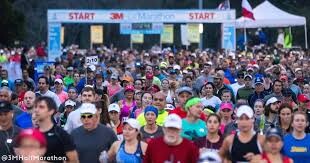
Kieffer took off from the starting line on Stonelake Boulevard in North Austin at a brisk pace of 5 minutes, 52 seconds per mile, with Karen Bertasso-Hughes and Shannon Gaden about 50 yards back. Kieffer hit the 5-kilometer split in 18:14, with Bertasso-Hughes just nine seconds behind.
The 3M race is known for its “downhill to downtown” course, and Kieffer worked every downhill. By the 10K mark (36:31) on Great Northern Boulevard, she had a 23-second lead on Bertasso-Hughes.
“When I took the lead around 3 miles, I just didn’t look back,” Kieffer said.
She stepped on the gas after the 15K mark (9.3 miles) on Shoal Creek Boulevard, dropping the pace to 5:50 a mile, gaining more than a minute ahead of Bertasso-Hughes in the process. Kieffer crossed the finish line on San Jacinto Boulevard in 1:16:24, leaving Bertasso-Hughes and Gaden to battle for second. Gaden prevailed 1:17:00 to 1:17:49. Caroline Brooks came in fourth in 1:17:53, with Elizabeth Laseter rounding out the top five in 1:18:04.
“Allie was so far ahead that we were just racing for second place,” said Gaden, a newcomer to Austin by way of Denver. “I was able to catch her (Bertasso-Hughes) around 10 miles.”
“I’m really happy. … I felt surprisingly good. I needed to win this race,” said Kieffer, who plans to run the Ascension Seton Austin Half Marathon next month and is looking to run an Olympic Marathon Trials qualifying time next fall at the BMW Berlin Marathon.
The men’s race featured a stirring duel between Colorado Springs’ Gray and Austin’s Mitch Ammons, a 2024 Olympic Marathon Trials qualifier.
Gray, Ammons and University of Texas ace Kobe Yepez formed the lead pack in the early miles, passing through the 5K mark together in 15:17. But after that it was a two-man race as Gray and Ammons pulled away. Ammons took the lead at 10K, passing the mark in 30:33, just six seconds ahead of Gray. But by 15K (45:52) they were stride for stride, with 2019 3M champ Michael Morris moving into third place ahead of Yepez.
In a sprint to the finish line, Gray edged Ammons 1:04:23 to 1:04:27. Morris, the track and cross-country head coach at San Marcos High School, took third in 1:06:07, with Al Maeder fourth in 1:06:31 and Yepez fifth in 1:06:51.
“This was my first race of the year. Actually my first race in a while, so I wanted to be smart and run a progressive effort,” said Gray, a dominant figure in Colorado’s mountain running scene. “Mitch is a strong runner and made it an honest effort.”
Approximately 4,500 runners finished the race, the fifth in the Austin Distance Challenge. The sixth and final event is the Austin Marathon on Feb. 19.
“I found out two minutes before the race that there was a champion mountain runner entered, who’d gone 1:03 for the half-marathon," Ammons said. "We were yo-yoing back and forth the whole way. He’d pull ahead on the uphills, and I’d lead on the downhills. It was a lot of fun. My time was a personal best for me by more than a minute, and I wouldn’t have run this fast if it weren’t for Joe. He pushed me a lot. I really, really tried to catch him on the final straight. I gave it everything I had.”
(01/23/2023) ⚡AMPby Brom Hoban
3M Half Marathon
Welcome to the 3M Half Marathon! This year join over 7,000 fellow runners in Austin, Texas to run a personal best at the 3M Half Marathon. 3M Half is a fun and fast stand-alone half marathon boasting one of the fastest half marathon courses in the country. You’ll enjoy a point-to-point course with mostly downhill running that takes you past...
more...Six ips for running your best 5k
5k (or 3.11 miles) races are some of the most popular running events in the country. Every weekend parkruns are available in over 1,600 locations globally, and there are plenty of great 5k events up and down the country, which make an ideal starting point in your running journey. If you’re nervous about training for a 5k or you’re looking to run one in 20 minutes or less, then these tips and best-practices will give you the perfect platform for success.
1. WARM-UP & WARM-DOWN
Whether you’re a running beginner, or you’re pushing for a new PB, 5k runs pose a high injury risk due to people not respecting the distance or by pushing too hard. Before every run, you should do a gentle warm-up jog and then do some dynamic stretches, including lunges, heel-kicks, high knees, jumping jacks, and sideways skips. This will make sure that all the little muscles are ready for the challenge ahead.
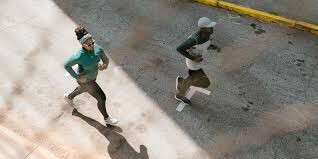
Warming down is just as important, and easy to skip when you’re tired after a run. But stretching out your calves, hamstrings, and glutes properly after a 5k run will make a massive difference in preventing injuries, and will help in recovery so you can head out for another training run sooner. Alternatively, you could try out a quick and easy pre-run yoga or post-run yoga routine.
2. BUILD UP THE DISTANCE

Although you’re not training towards a marathon, it’s not necessary to run the full 5k on your first training run. The reason ‘Couch to 5k’ has been so successful recently is because it doesn’t demand too much too soon. If you are building fitness, a couple of shorter 1-2k runs will get your heart pumping and wake up your leg muscles. You can even alternate between running for 5 minutes and walking for 2 minutes, and then work towards a continuous 5k run. If you need a helping hand here, than you can download our free 6-week 5k training plan here, which will take you through your 5k training, step-by-step. There are a number of options within the plan from how to run 5k in 20 minutes or less to circuit pattern ideas and motivational quotes for race day.
3. TECHNIQUE
5k races tend to be high intensity runs, as opposed to long-distance events which require steady jogging. Rather than just pushing yourself flat out, though, there are some technique tweaks that can be made, which will help keep you springing forwards, improve posture, and prevent against injury:
make sure to engage your core and keep your upper body straight
pump your arms
push your hips forward, and try to land your feet beneath your hips rather than too far ahead
visualize the road coming up to meet and support your feet rather than your feet hitting down into the road
4. INTERVAL TRAINING
Once you’ve built up the distance to the full 5k, and you’re confident with your technique, you can start improving your speed. Interval training is really useful for this, and it can often be a good idea to head to your local running track. Sessions might look like one of the following:
500m warm up; 3x400m sprints with 2 min rest in between; 1x800m push; 500m warm down. Total distance: 3,000m
400m warm up; 5x200m push alternating with 5x200m gentle jog; 400m warm down. Total distance: 2,800m
300m warm up; 1km race pace, 2km gentle pace, 1km race pace; 300m warm down. Total distance: 4,600m
These distances can change as you get fitter, and you might also choose to work according to time instead of distance.
5. SUSTAINABLE PACE
It’s important that you know what your standard pace is. Settle into a good rhythm, where your heart-rate and breath are sustainable. It is unlikely that you’ll be able to push for the entire 5k, so you’ll need to pace your race. Don’t come speeding out of the blocks and waste all of your energy early on. Use your training to discover what a manageable pace is, and stay there for the first 3km or so of the race, and then push for the final 2km. Like all professional runners, you should aim to be running negative splits i.e. your final kilometers should be faster than your first couple.
6. NUTRITION
An energy bar or banana 40 minutes or so before a race will give you time to digest and for the energy still to be there. You want to avoid anything too high in fibre close to the race, because this might give you stomach cramps. Work out what works for you well ahead of race day. It’s also important to stay hydrated with water or energy drinks before, during and after a race. You also want to focus on recovery: have something high in protein within 20 minutes of exercise to repair your muscles, and replenish your blood sugar with a treat. You’ve earned it.
(01/23/2023) ⚡AMPby Aidan Thomson
Two treadmill hill workouts to boost power, strength and confidence
Sure, runners love to hate the treadmill. It can be an invaluable tool, though, especially when icy conditions prevent you from fitting in a hard workout.
Even if your goal race is on the road or relatively flat, hill workouts build power, running efficiency, and will have you running faster on flat ground–being able to run smoothly up a hill that used to leave you gasping for air can be a pretty big confidence booster, too.
Bonus–you can fit either of these workouts in your lunch hour, with both coming in under 45 minutes including warmup and cooldown. Tweak either workout if you need to according to your experience level by adjusting the pace and incline settings on the treadmill to make the sessions challenging for you.
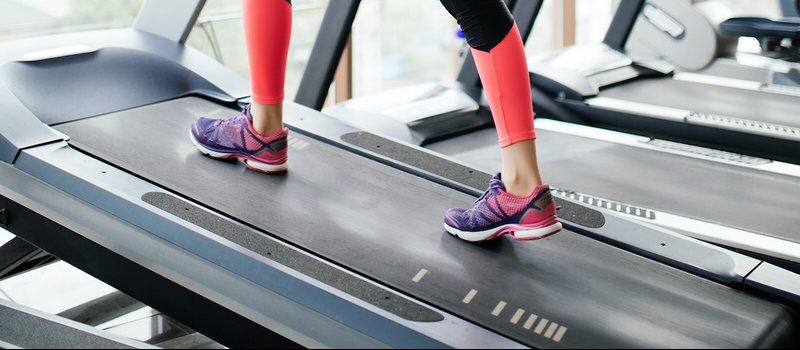
Hilly tempo (effort-based) workout
This workout, a combo between a tempo session and a hilly run, helps you learn how to run hills by feel, something many runners, both beginners and seasoned athletes, struggle to do. Don’t worry about your pace–focus entirely on the effort of each interval.

The workout
Warm up with 10 minutes of very easy running.
Run 5 minutes at a 1 percent incline and at a pace that elevates your effort level to what feels like a medium-hard effort (you have to stay focused and can only speed in short sentences); recover with 2 minutes easy running.
Run 5 minutes at a 2 per cent incline and at a pace that brings your effort level back to where it was on the previous rep; recover with 2 minutes easy running.
Run 5 minutes at a 3 per cent incline and at a pace that elevates your effort level to where it was on the previous rep; recover with 2 minutes easy running.
Run 5 minutes at a 4 per cent incline and at a pace that brings your effort level back to where it was on the previous rep; recover with 2 minutes easy running.
Cool down with 5 minutes easy running.
Powerful hill workout
This workout doubles as a high-intensity interval session and builds power, strengthening different muscles than you would while running hard on flat ground. The end result of workouts like this one–you’ll be faster on the flats, and you’ll ramp up injury resistance.
The workout
Warm up with 5 minutes of easy running.
Repeat 8x: run for 90 seconds at a 4 to 5 per cent incline at a pace that you can only maintain for a short time (hard effort, breathing vigorously, can’t talk); recover between each hard interval with 3 minutes of very easy running.
Cool down with 5 minutes easy running.
Make sure to take the day following a speed, hill or long session as a recovery or easy running day.
(01/23/2023) ⚡AMPby Keeley Milne
Emily Sisson After Her American Record: “I’d like to medal and I’d like to try to win a Major”
Last Sunday, Emily Sisson ran 66:52 to become the first American woman to go sub 67 minutes on a record-eligible course.
"The two really big goals I still have left are I'd like to medal and I'd like to try to win a Major"
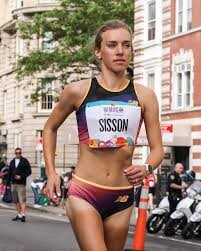
"The two really big goals I still have left are I'd like to medal and I'd like to try to win a Major"
LetsRun.com: Our guest is an NCAA and US champion on the track, a US Olympian and the American record holder in the half marathon and marathon. She already held the American record in the half marathon before last weekend, but on Sunday in Houston, she ran 66:52 to take 19 seconds off her American record and become the first American woman under 67 minutes on a record-eligible course.
We're very pleased to be joined by Emily Sisson. Welcome to the Letsrun.com Track Talk podcast Emily.

Emily Sisson: Hi, thank you for having me.
LetsRun.com: We're joining you on Tuesday, two days out from the record. Are the quad's feeling good? Are you fully recovered from the effort yet?
Sisson: Yea, actually I do feel fully recovered and, I do think the shoes helped with that. Lately, the last few races, I feel like I've bounced back from them pretty fast. And I felt that way after Chicago too, which I was just shocked by. That was just so different from my last two marathon experiences. So, yeah I feel good and feel excited to get training for my next marathon now.
LetsRun.com: I feel like you're clockwork at this point. You got an American record, you just bounce back and then you hit another American record, bounce back, hit another American record, and now you've got a spring marathon coming up later this spring, which you can't announce yet.
I'm sure in due time we'll learn about that. Let's start with the race in Houston on Sunday, did everything go pretty typically before the race in terms of your pre-race routine? Did anything out of the ordinary stand out to you?
Sisson: No. Nothing too exciting. It was pretty standard. Nothing pre-race anyway.
Starting off Running Under 5 Minutes a Mile
LetsRun.com: So the race begins and Hiwot Gebremaryam who ended up winning the race, she takes it out very hard. I think it was about 15:14 through 5k and you and just Jessica Warner-Judd who you're running with get gapped. Did you expect to be running with her or were you surprised how quickly she took out?
Sisson: Yeah, I wasn't surprised. I had a feeling her and maybe Dibaba, we didn't know how fit she would be, that they could take off and start running really fast. And I talked to [coach] Ray [Treacy] before the race and he told me, just run about like 5:06s. But that if there wasn't a group to run with, that it'd be better me running, like 5:03, 5:04 minute miles and having a group [to run with] and doing that versus 5:06s solo. And we were definitely going faster [laughs] than that. But I remember we started off and the first mile was under five minutes and Ray told me that would probably happen, so not a big deal. But then we didn't really slow down that much. And I kept looking behind me and there wasn't really anyone there. So I kind of was just like, "I either have to commit to this pace and hope I don't die too much, or slow down too much. Eventually, I'll have to correct."
But either do that, or run a half marathon solo and I really didn't want to do 13 miles solo. So I was like, "You know what, I'll try this. This feels okay. I'll slow down eventually at some point, and get into a rhythm, but for right now I want to run with a group of men." And Jess Judd was right there, and she was there for a while. She had a great, great race. I think she can run a lot faster if she gets into a more evenly-paced half marathon. So I think she'll see a lot of success on the roads too.
But yeah, I definitely started off faster than we were hoping, but I don't regret going with them.
LetsRun.com: In Chicago you famously weren't aware of your pace during a lot of the race. Were you aware how quick you were going in Houston?
Sisson: Yeah, I was aware how quick I was going and I was looking at my watch every mile to see what I was hitting. I didn't look at my watch in Chicago, but, sometimes I do this thing where I say something, and in my head it makes perfect sense and then afterwards I get a lot of follow-up questions. In Chicago I did have two pacers so I didn't really have to worry so much, I'm like, "Well, that's their job." And they did a great job with that Brian [Harvey] and Jonny [Mellor]. And my job was just to see if that pace felt right. If I needed to go a little faster, slower, adjust from there and then I intentionally didn't want to look at my watch the first half in Chicago, but then I unintentionally shut it off, [laughs] like halfway through the race. So didn't really have a choice. It worked out fine. I saw the halfway split in Chicago and it really helped me kind of dial in and focus on how I was feeling in that race. But this one's different when you don't have pacers. You kind of do have to pay attention to that.
LetsRun.com: Our guest is an NCAA and US champion on the track, a US Olympian and the American record holder in the half marathon and marathon. She already held the American record in the half marathon before last weekend, but on Sunday in Houston, she ran 66:52 to take 19 seconds off her American record and become the first American woman under 67 minutes on a record-eligible course.
We're very pleased to be joined by Emily Sisson. Welcome to the Letsrun.com Track Talk podcast Emily.
Emily Sisson: Hi, thank you for having me.
LetsRun.com: We're joining you on Tuesday, two days out from the record. Are the quad's feeling good? Are you fully recovered from the effort yet?
Sisson: Yea, actually I do feel fully recovered and, I do think the shoes helped with that. Lately, the last few races, I feel like I've bounced back from them pretty fast. And I felt that way after Chicago too, which I was just shocked by. That was just so different from my last two marathon experiences. So, yeah I feel good and feel excited to get training for my next marathon now.
LetsRun.com: I feel like you're clockwork at this point. You got an American record, you just bounce back and then you hit another American record, bounce back, hit another American record, and now you've got a spring marathon coming up later this spring, which you can't announce yet.
I'm sure in due time we'll learn about that. Let's start with the race in Houston on Sunday, did everything go pretty typically before the race in terms of your pre-race routine? Did anything out of the ordinary stand out to you?
The 66:52 was her third American record in less than a year. Last May, she ran 67:11 for her first AR in the half marathon, then in October ran a 2:18:29 marathon AR in Chicago.
(01/22/2023) ⚡AMPby Let’s Run
Strava Lays Off Employees
Last year, the social networking app for endurance athletes and fitness enthusiasts hit a milestone 100 million users.
Strava, the most popular social networking app for endurance athletes and fitness enthusiasts, laid off 38 employees in December 2022. Multiple former Strava employees confirmed the news on LinkedIn. According to a post from an unaffected Strava employee, the layoff equated to 14 percent of the company’s workforce.

The layoffs predated the reported uptick in price for premium features. The previous $7.99 monthly rate will increase to $11.99 on February 6—a significant 50 percent increase.
Runner’s World reached out to Strava for a comment, but the company has not responded.
Strava was founded in 2009 by Mark Gainey and Michael Horvath. According to Crunchbase, Strava has raised a total of $151.9 million from seven rounds of funding. The company raised $110 million during its most recent round, which took place in November 2020. The app has 95 million users according to Business of Apps.
(01/22/2023) ⚡AMP
by Runner’s World
Yoga for cold days: the best moves to warm up and reduce tension
With many weeks of cold, wintry weather ahead, it’s time to turn to yoga to generate some internal fire and warm up stiff joints and tense muscles.
here comes a time in winter, after weeks of sub-zero temperatures or at the very least a constant chill, when I feel like my actual core is frozen and my shoulders have taken up permanent residence around my ears. I know I’m not the only one.

But before you crank up the thermostat another degree or two (ooh, look at you with money to burn!) there is a much better (and cheaper) way to generate some warmth. Time to roll out the yoga mat and get acquainted with tapas (no… not those tapas).
“The practice of building heat in yoga is called ‘tapas’,” explains Laura Pearce, senior yoga and breathwork teacher and the founder of Yoga Collective London. “In yogic philosophy, tapas not only denotes physical heat, but also the burning off of negative energies, helping us persist when things get tough – this is useful during the winter months when everything seems a bit tougher and the body is sluggish and tired.”
This heat physically warms our bodies but it also helps motivate and energise us. To harness it, Pearce recommends a dynamic yoga practice to get the blood pumping and help mobilise stiff ‘hunched’ shoulders.
SUN SALUTATIONS HELP GENERATE HEAT
“The ultimate heat building-sequence in yoga is the classic sun salutation. The name ‘sun salutation’ comes from the idea that these movements heat up and awaken our internal ‘sun’, warming and preparing the body for other poses. It’s a particularly dynamic part of most western yoga practices and the simple repetitive nature makes it an easy sequence to learn,” she says.
Pearce recommends adapting your sequence by holding a strong downward dog a little longer to wake up the shoulders, adding more asanas on each round, or accompanying it with ujjayi pranayama (also known as victorious or ocean breath) to really heat things up.
How to do sun salutation A (surya namaskara A)
You can modify sun salutations any way you wish but this classic sequence, recommended by Jaime Hepburn, is a must-try on a frosty morning.
Inhale or exhale with each move, starting with an inhale as you raise your arms up.
Start by standing tall in tadasana (mountain pose)
Raise your arms up and gaze up
Fold forward
Lift halfway, hands to shins, look forward
Plant the hands and step back through chatarunga (low plank – or modify through knees-chest-chin)
Upward-facing dog (modify through low cobra)
Downward-facing dog – take three to five full breaths here
Look forward to prepare for the next steps
Step to the top of the mat
Lift halfway, hands to shins, look forward
Forward fold again
Lift the arms as you rise up, gaze up
Finish in tadasana (mountain pose)
Repeat five times.
BACKBENDS CAN PROVIDE AN ENERGY BOOST
Another warming move that also opens the shoulders is a backbend. “Any backbend will do – back extensions nearly always cause the heart rate to soar as they put a little tension on the diaphragm, heart and aorta,” says Pearce.
“Try locust (salabhasana) or bow pose (dhanurasana), holding for five breaths then repeating. More advanced yogis can go for a full-wheel pose (urdhva dhanurasana). Stop to notice that high energy rush after a big backbend. I think of them as natural coffee shots and a great way to wake us, energise us and warm us in the winter.”
Jaime Hepburn, founder of The Yoga Library, is also a fan of incorporating ujjayi pranayama (ocean breath) into her practice during colder weather.
“The winter months tend to bring a bit of tightness to our bodies. A dynamic practice that utilises ujjayi pranayama is incredibly efficient at warming the body to help reduce any stiffness or tension in the muscles and joints. Simply breathing this way when performing any asana will help stoke our internal fire,” she explains.
How to do victorious or ocean breath (ujjayi pranayama)
“This breath involves a slight constriction of the throat as you breathe in and out of the nose,” says Hepburn. “Don’t be deterred if you find this quite challenging. It certainly takes a bit of practice to get it.”
Try it first with your mouth open. Take a regular inhale.
Exhale and imagine you’re trying to fog up glass. A soft sound should accompany the breath.
Now try the same thing breathing inward, remembering to constrict the throat slightly to direct the breath inwards at a steady pace. The same sound should be heard.
Repeat the exhale but with your mouth closed. Again, there is a soft hissing sound, a bit like the ocean.
Inhale again, with that slight constriction, but with your mouth closed.
PRACTISE LION’S BREATH (SIMHASANA)
Another breathwork exercise to get things warmed up is lion’s breath. Mara Cimatoribus, yoga instructor on the fitness app WeGLOW, likes to start with some neck massages while in a kneeling position before moving on to lion’s breath.
“With your right hand, massage the left side of your neck – from your back to your chest. Repeat this a few times before moving to the other side. Start with connecting with your natural breathing first, then do a round of 10 lion breaths,” says Cimatoribus.
“Inhale through the nose and exhale forcefully through the mouth, sticking the tongue out. You should feel the abdomen contracting. Come back to natural breathing, soaking in the heating effects of this breathing technique.”
Cimatoribus is also a big fan of a sun salutations to generate heat, and she recommends making time for a short cat/cow beforehand to help warm up the spine.
BE DYNAMIC AND STRONG WITH A WARRIOR SEQUENCE
Yogi Eloise Skinner believes a sequence involving any warrior variation (virabhadrasana) – warrior I, II, III, plus reverse and humble warrior – is a wonderful way to counteract the effects of cold weather.
"Warrior sequences engage the biggest muscle groups of the body – glutes, quads and back muscles – and help to reduce shoulder and neck tension. Flowing between warrior poses, or even holding poses for a few breaths before transitioning, can be a simple way to sequence a home practice in the colder months,” she advises.
(01/22/2023) ⚡AMPTunnel Ultra: The mind-bending 200-mile ultra-marathon in the dark
How do you like to spend your weekend off?
Do you put your feet up in front of the TV? Maybe shopping is your way to unwind? Perhaps you're a bit more adventurous and enjoy a stroll in the countryside?
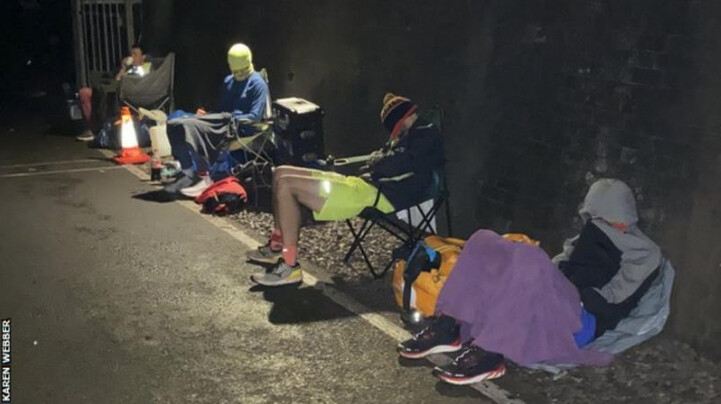

That doesn't quite cut it for some people, who choose to run a 200-mile ultra-marathon in a disused railway tunnel instead.
The Tunnel Ultra is a race like no other. It's easy to find longer events. Some even involve repeating the same loop for days on end. But nowhere else can you take part in a race so twisted that you spend more than two days in darkness doing a one-mile shuttle run 200 times, or so punishing that one runner went temporarily blind - then thanked the race organiser for the privilege.
No outside support is permitted, headphones are banned and runners are not allowed to run side by side. Oh, and there is a strict time limit of 55 hours.
The Tunnel website describes it as "a mind-bending test of extreme endurance and sensory deprivation". It is more health warning than marketing slogan.
"I could be sat on the sofa watching Strictly with the wife and kids. Or do I want to be in a dripping tunnel, tired and miserable, knowing I've got work on Monday?" Guy Bettinson, a 45-year-old programme manager from Cumbria who won the Tunnel in 2020, wonders out loud. "I'd rather waste my weekend putting myself through misery."
"It's so pointless. You're not getting from A to B, which makes it such a massive mental challenge," says Andy Persson, another finisher that year. "If you can push your mind further than you think is possible, it's quite empowering."
Christian Mauduit, a French software engineer who won the 2021 edition, says: "I'm chasing that internal adventure - that meeting with myself. It's like a little kid - they want to see how close they can come to the fire. I'm still that little kid."
Bettinson describes every ultra-marathon start line as a "mid-life crisis anonymous meeting". "We've all got issues," he says. "It's clearly some kind of therapy."
The race takes place in Combe Down Tunnel, a mile south of Bath city centre, and starts at 4pm on a Friday in March. No more than 40 runners make it that far, partly because of a strict - and deliberately opaque - qualification process and largely because the tunnel is not big enough to accommodate many more. "Even the start line is weird," says Mauduit. "You have to stand one behind another in a queue."
Combe Down was restored as a cycle path in 2013 after 47 years under weeds. It is the UK's longest foot tunnel - and the obvious setting for an ultra-marathon if your name is Mark Cockbain.
"I like things that have got an X-factor," says Cockbain, a prolific former ultra-runner who set up the Tunnel in 2019 to add to his brilliant yet brutal portfolio of events as a race organiser. "As soon as I got permission to use the tunnel, it was a no-brainer."
The race is low key in the extreme. A fold-up table outside one end of the tunnel serves as race HQ. There is no shelter or rest area to speak of unless runners have the foresight to bring a camping chair. They must all share a portable toilet which, by the end of the weekend, would not look out of place at a music festival. Refreshments are limited to water and tea, while the most luxurious snacks are Pot Noodles. If you're lucky, they might not be out of date.
"I cut back on delicacies," says Cockbain in the matter-of-fact style for which he has become famous in the ultra-running community. "You can get through any of these races with a bit of water and food. I wanted to make it all about the running."
For Mike Raffan, a 43-year-old IT manager from Aberdeen who finished second in 2021, that's part of the appeal. "It's nice that there isn't any nonsense," he says. "The Tunnel is pure, unadulterated running. You run from one end to the other in a straight line, turn around a traffic cone, come back again, and just keep going. That's it." Persson agrees. "There's no fanfare. If you're looking to be pampered, you've come to the wrong place."
All of which adds up to a notoriously low finish rate. Of the 31 runners who started the inaugural Tunnel, only two completed it, and 13 in total in the three years it has been in existence.
"I don't want there to be no finishers," says Cockbain. "But I do want them to go through hell to get there."
So how exactly do you survive a race that is deliberately designed to break you physically, mentally and emotionally?
In one sense, it is simple. "The only things you have to think about are moving, eating, drinking, sleeping and going to the toilet. That's the limit of your universe," says Max Newton, a fundraising manager from Sheffield who was among the seven finishers in 2020. "All that jazz in real life is nonsense."
"One tactic for me is 100% commitment," says Raffan. Those words carry added weight from someone who ran 182 miles in 42 hours around his back garden three months after open-heart surgery in 2020. During another Cockbain race he continued running in conditions so bleak that his eyeball froze. "I never thought about not finishing the Tunnel. Before the race I told them, 'Do not let me stop unless there's a medical reason for it'."
Mauduit's approach is similar. "I'm asking myself all the complex questions - 'Why am I doing this? Should I go there?' - before the race, in training. During the race I just finish the lap - there's no question."
"You have to be all in. If doubt creeps in, you're gone," says Cockbain. A 50-year-old electronics engineer by trade, he completed 199 marathons and 106 ultras - including some of the toughest in the world, notably five Spartathlons, three Badwaters, a double Badwater and a 300-mile race in the Arctic - before knee problems forced him to stop running in 2011. "I could sit in a corner and hit my head with a spoon for three days if that's what I decided to do."
Bettinson admits the "possibility of failure was a big thing" when he stood on the start line, yet he went on to finish in a scarcely believable 43 hours nine minutes. It remains a Tunnel record by more than six hours and is "up there with some of the all-time greatest ultra achievements", according to Cockbain, not a man given to hyperbole.
Repeatedly running along the same stretch of tarmac throws up a mental challenge rarely found in races of any distance, let alone 200 miles (the total distance is actually 208 because the tunnel is slightly longer than a mile).
"The difficult thing with doing 100 laps is there are 100 chances to stop," says 49-year-old Newton, who also ran a 300-mile lapped ultra last summer. Even if runners quit mid-lap, they must make their way back to the start line. Mauduit agrees that the turnaround point at race HQ is often the most difficult. "Once you're on the course it's easy - everyone can do two miles," he says.
"When you reach the start line again you're facing two choices. One is calling it a day. You will still suffer, your legs will hurt, the pain will follow you for hours, and you have to deal with the fact you gave up. Or you can beat your own personal record in the tunnel and write history. You only have to be motivated for five seconds - just enough time to pick your butt up and get into the tunnel. During the Tunnel I don't do 200 miles; I do two miles 100 times."
A positive mindset is universal - some would argue essential - among those who have completed the race.
"When it's really hurting and I'd rather be in bed, I say to myself, 'I love this tunnel and I can't believe I've got this opportunity'," says Persson, a 57-year-old counsellor from Bristol who once ran 900 miles from Land's End to John O'Groats in 17 days.
"You've got to embrace it - there's no point fighting it or being grumpy. You have to find the bits that make it good," says Newton. Alan Cormack, who finished second in the inaugural Tunnel, adds: "You don't have to worry about weather, mud, navigation. And you don't have to carry a pack."
With no scenery, music or conversation, surely it must be boring? "On these runs you're often very busy," says Mandy Foyster, who staggered over the finish line five minutes inside the time limit in 2021 to become the only female runner to have completed the race. "You don't have time to get bored - you're doing maths in your head and you're so focused on keeping going."
Persson says "my personality likes routine", while Mauduit positively loves it. He once ran 238 miles in 48 hours on a treadmill, but says his favourite events are six-day races. His record is 541 miles.
For Raffan, ultras are his meditation. "People ask what I think about when I'm running. Absolutely nothing. At the best points your mind is empty. When you're in that proper trance state you're not thinking about anything."
Running 200 lengths of the tunnel means running 200 times past a speaker built into the wall at the midway point that resembles a giant eyeball and pumps out classical music on loop all day and night. "There are these little submarine-style windows which glow different colours," says Newton. "It's like super stereo."
Cormack describes it as a screeching violin, which Bettinson claims "adds to the weirdness and psychological torture". Mauduit is more direct: "It drives you nuts."
More psychological torture comes in the form of darkness. There is only dim lighting in the tunnel - which is shared with cyclists and walkers during the day - and even these are switched off between 11pm and 5am.
"Not only are you in the darkness, but you are alone and you have no headphones. It's like a giant meeting with you and your feet," says 47-year-old Mauduit. "All human bodies are conditioned by daylight. In a standard race, when the sun rises you feel great. In the tunnel you have no reference - it's always night."
"It became a very big battle to stay awake," says Foyster, a seasoned ultra-distance athlete whose idea of celebrating her 50th birthday was to cycle between Ben Nevis, Scafell Pike and Snowdon and sleep on the summits of each. "When I got to the end of the tunnel I'd step out in the daylight and just stand there for 10-15 seconds."
Foyster put more thought than most into keeping the so-called sleep monsters at bay - "I had perfume to spray and a Vicks to stick up my nose - anything to stimulate your senses" - but her most valuable tool was a small spray bottle. "When I felt myself falling asleep I sprayed myself in the face with water. That was absolutely fantastic."
Some runners might grab a power nap outside the tunnel - and pray it doesn't rain. Others treat sleep as an inconvenience in a race with an already demanding time limit. A rare few don't even afford themselves the luxury of sitting down.
"If you stop you've got to start again. If you don't stop you don't have to start again. I just kept going," says Bettinson, whose 17 years in the Army have proven an excellent grounding for ultra-running. "I did end up lying down a couple of times, but you're in so much pain by the second night that you can't sleep anyway. And you're just wasting time by not moving."
Raffan pulled out of the 2019 Tunnel after 100 miles to join his wife and daughter at the zoo. It remains his only DNF from more than 50 ultras. When he returned in 2021 he deliberately did not bring a chair. "I ended up sitting on somebody else's, but that was good because whenever they needed it, it forced me to get out."
"I don't trust myself to set an alarm and wake up, so I didn't take the risk," says Mauduit. "The only time I stopped was at the refreshment table or to go to the bathroom."
If sleeping is optional in the Tunnel, hallucinations are all but guaranteed.
"I saw a family of abominable snowmen, a massive slug and I thought I was on the edge of a cliff," says Karl Baxter, who failed to finish the race in 2020 but conquered it with less than an hour to spare the following year.
"Orange blobby monsters kept floating at me out of the darkness," says Foyster, who blames her good friend Baxter for convincing her to sign up for the race. "I wasn't in a tunnel a lot of the time - I was running through Egyptian tombs or over a suspension bridge with deep ravines."
Mauduit recalls: "On the last day it got insanely bad. I was seeing stairs; I was walking on a glass floor. I couldn't escape from it. The hallucinations were an order of magnitude stronger than anything I've ever had before. It was mind-blowing."
Cockbain has seen it countless times. "It's just total carnage," he says. "People are losing their marbles. If they stop for a rest, they can't remember which way they're going."
The effects lasted beyond the race for Persson. "I saw ticker tape, carvings in the wall, and I was convinced there was a glass conservatory with flowers. My wife and daughter picked me up and I was still hallucinating by the time I got home. I've never had that level of it before - it was so extreme."
Training for the race varies wildly between competitors. Bettinson's longest run in the build-up to his victory was a mere 12 miles; Foyster "did a lot of fast walking"; Cormack, who was scared of the dark as a child, favoured night-time runs; and Baxter attempted to simulate the boredom with lengthy treadmill sessions or by running up and down a one-mile stretch of road. He managed 48 of them one day.
Eating and drinking strategies are equally individual, but, given that runners burn about 20,000 calories during the course of the race, hunger triumphs over health. Dentists and doctors, look away now.
Pizzas, chocolate, cake and flat cola fuelled Foyster for nigh on 55 hours. Baxter polished off tube after tube of salt and vinegar crisps, all eaten on the move to save time. Jam sandwiches, flapjacks and Pot Noodles - "they really hit the spot" - kept Newton going. Raffan tucked into supermarket meal deals and butteries - a "really dense, stodgy" Scottish pastry - but describes cold custard as his "secret weapon". Persson's menu of quiche, sausage rolls and overnight oats seems positively gourmet by comparison.
Bettinson is powered by a concoction of Lucozade, pineapple juice and beetroot juice. He also liquifies food and puts it in baby pouches "so it's easy to get down". Because it is impossible to replace the energy you are burning, his plan is "fuel early and then cling on".
As the saying goes, what goes in must come out, although most runners visibly wince when they remember a toilet situation that Newton laughingly describes as "a disgrace".
Bettinson says: "The first time I did the Tunnel it was a little chemical kiddy loo that you'd take camping. It was in a half-collapsed tent with a broken zip. Mark deliberately put it in a puddle, so you had to get your feet wet just to get inside it, and after the first 50 miles it was like a festival loo - you had to hover over the top."
Even if runners can cope with the boredom, darkness and sleep deprivation, pounding tarmac for longer than some weekend breaks last takes an immense physical toll.
"Of course your legs will hurt - you're running 200 miles. What did you think was going to happen?" says Mauduit, a man whose CV also features winning a Deca Ironman - a triathlon consisting of a 23-mile swim, 1,118-mile bike ride and a 262-mile run.
"Everything after 20 miles involves pain," says Bettinson, who admits that theory was tested when his hips were in "absolute agony" 100 miles in. "Anyone can get round it - you just have to want to."
Newton's approach veers towards the spiritual. "In a weird way, if you run through excruciating pain it doesn't hurt any more," he says, with the caveat that this approach doesn't always translate to his partner Anna. "She's worried I'm going to die. She has seen me in a bad state - sometimes it has been a bit messy."
Cockbain has this advice: "The feeling of wanting to give up doesn't last - if you put something in its place."
Runners know better than to expect sympathy from Cockbain, whose stable of events also includes an unsupported 300-mile run from Hull to the south coast as well as a race where pairs of runners in boiler suits are chained together and have 24 hours to cover as much ground as possible. You can sense the disappointment in his voice when he recalls how The Hill, which involved climbing up and down a hill in the Peak District 55 times - equating to 160 miles - in 48 hours had to be scrapped after the pub which doubled as the checkpoint closed down.
Perhaps Bettinson sums up Cockbain best: "Mark has a motivational speech at the start of his races: 'If you're going too slow, speed up.'"
Baxter, a 51-year-old from Norfolk who spent 12 years in the Army and now drives lorries for a living, turned an ankle during his second attempt at the Tunnel. "It came up like an egg. I sat down for 20 minutes and I was going to quit. Mark said, 'A twisted ankle never killed anyone' and told me to carry on. It taught me a lot. Once I got to 150 miles I knew I was going to finish."
Individual motivation comes in different forms, but a common thread among finishers is the time, energy and money they have invested in a race that often few people outside their close circle of family and friends know about. Nobody gets into ultra-running for the glory, least of all those taking part in Cockbain's events.
"My wife is handling all the family by herself, working and having no fun," says Mauduit, who rode his motorbike from Paris to take part in the Tunnel. "I'm having this five-day vacation so I should do something good with that."
Bettinson flips the question on its head. "My why for being there is I chose to be there. I've paid the money, I've done the training, I've turned up. Why on earth wouldn't I finish?"
Foyster, meanwhile, does it for the sheep. Having grown particularly fond of the animals during endurance adventures such as running the width of the UK or cycling the length of it, she now uses ultra-marathons to help raise funds for a sheep sanctuary in Lincolnshire.
"When I was struggling in the Tunnel, my friend sent me videos of the sheep. I'm thinking of them at the tough times," she says. "Some people ask me if I have a coach. I say my coach is a sheep called Bella."
Foyster, who works at an animal sanctuary near Norwich, has run the London Marathon dressed as a sheep and even had a fancy dress costume lined up for the Tunnel, but never got chance to wear it because she was in such bad shape later in the race. What was the outfit? "A sheep dressed up as Darth Vader."
The gruelling nature of Cockbain's races and the derisory finish rate creates a special sort of camaraderie among runners, evident from the dark humour on the start line to the support they offer each other as they push beyond their limits.
"Everyone feels like they're in it together. It doesn't feel competitive," says Newton. Cormack, who runs a cleaning company in Aberdeen, adds: "Nobody cares if you're first or you're 20th." Bettinson says: "Mark's events feel less like a race and more about the entrants against the event as a collective. You're only ever racing against yourself."
Foyster, 56, says she goes into any event with a "1,000% determination to finish it", but her unwavering drive in the Tunnel took her to a place she had never been before.
"After 100 miles my body started to break down," she recalls. "By 150 miles I had adopted my walk-shuffle approach, and in the last 10 miles I completely lost my mind. I kind of went over to the other side.
"At mile 192 I became completely disorientated and started going the wrong way. I thought I was wandering along a quiet country lane. I didn't know who I was or what I was or what I was doing."
In a rare moment of weakness/graciousness (delete depending on the coldness of your heart), Cockbain allowed Foyster's friend to accompany her as she staggered to beat the time limit. He even turned cheerleader on Foyster's final lap.
"At mile 198 my vision went," says Foyster. "I couldn't see anything. I crashed into the wall a few times. I had a broken tooth. I felt like I just needed to collapse on the floor. It was the first time that I'd felt worried about myself physically.
"Mark appeared behind us on a bicycle shouting 'you've got to go faster'. I was running blind - I was running into a white mist. I felt like I was sprinting flat out. I kept running until Karen the timing lady caught me in her arms." Foyster had finished in 54:55, not even time for another lap.
Because she was "in a complete and utter state", Foyster says she did not get to savour the finish line moment. "That's the only bit I regret."
She didn't miss much. "There are only a handful of people there. You get a bit of a clap, Mark shakes your hand and gives you your medal," says Persson. "It's not like you've got people patting you on the head," says 55-year-old Cormack, who then slept on the back seat of his car because he was too tired to put his tent up.
"Mark said a few words - I was so knackered I can't remember what - and I just picked my box up and went to the train station," says Bettinson. "It was a busy weekend and there were a lot of people ready for a day out. There was me, absolutely stinking, wheeling this box and eating bits of scabby old sandwich."
Foyster was so spent that she had to be carried to her hotel room. Baxter, who did some of the carrying, says: "That was just as hard as the last few miles."
"If you finish one of Mark's races you get respect from him. That means a lot," says Newton. Bettinson agrees. "Most of my medals I chuck in the bin. If it's one I'm bothered about I keep it in a drawer. I've kept the Tunnel one."
Cockbain's goal is simple: "All I want is that someone walks away remembering it for the rest of their life. Ultimately we're going to live and die. How are you going to fill up the middle of that? Achievements last forever."
"Races aren't pretty - that is real life," says Foyster. "The Tunnel is the hardest I've pushed myself. I've never needed help like that, so my overwhelming feeling was I was so grateful."
Mauduit, who describes the Tunnel as an "awesome race", adds: "I thank Mark for putting it together. I discovered something new. It was a blast. It all makes sense because it doesn't make sense. It's worth every penny."
Baxter remembers clearly his feelings in the week after the Tunnel. "I was buzzing. I felt on top of the world. I felt invincible." Newton recalls: "When I was telling people about the Tunnel I was talking with a smile on my face."
But what on earth is next for those who have completed one of the most challenging ultra-marathons invented?
Baxter tells a story typical of a certain breed of ultra-runners. "My girlfriend said, 'Is that it?' I said, 'No way. I want to go further.' Plus, no-one has done it twice." He may have company. "I'll be back one day," says Mauduit. "I'm thinking about it."
Cockbain recognises the signs from his own running days. "It's a drug. It's an addiction. It's a never-ending 'what's next?' You never get satisfied."
Even Bettinson, the record holder, says: "My holy grail is I want to finish an event where I know I've given absolutely everything - even if I don't finish. It could be one mile or it could be a thousand miles.
"I'm still chasing that unicorn."
(01/22/2023) ⚡AMPby BBC
2023 Doha Marathon by Ooredoo a huge success with record-breaking numbers
DOHA: Ooredoo – a longstanding supporter of major sports events in Qatar – has announced that the 13th edition of its annual marathon, this year renamed the Doha Marathon by Ooredoo, was a roaring success.
The event was a complete sell-out, with 8,000 runners taking their places at the start line on the morning of Friday, January 20, 2023. Runners took part in a variety of distance categories, from the 1km kids’ run to the full marathon.
Sheikh Ali Bin Jabor Al Thani, recently appointed CEO at Ooredoo Qatar, said:
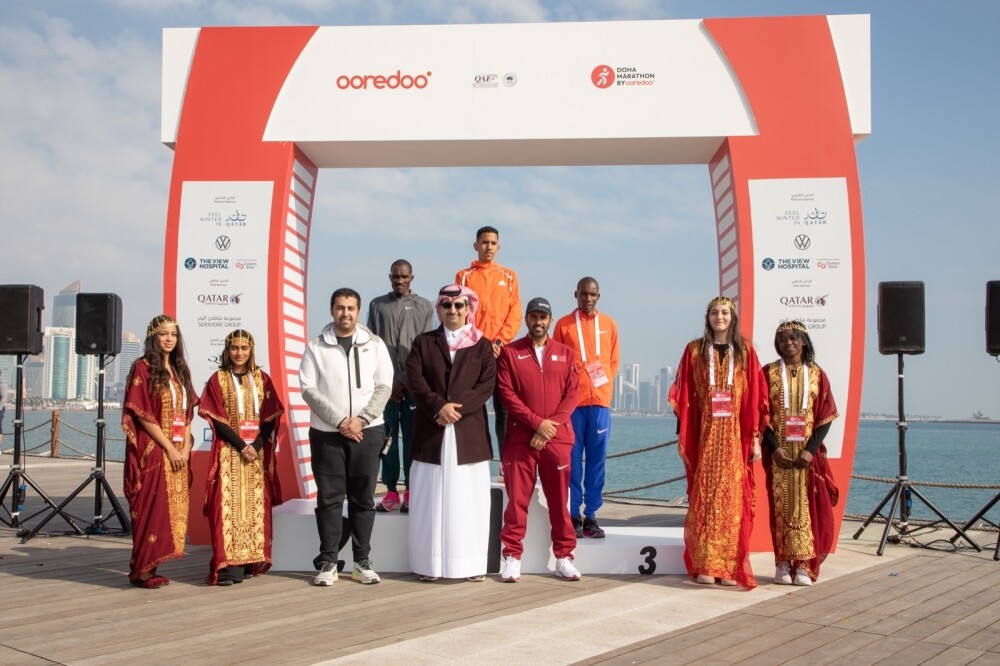
“Once again, we are delighted and proud to announce our annual marathon was a phenomenal success. As always, the event attracted some of the world’s top runners and was a complete sell-out, giving the opportunity for our local running enthusiasts to run alongside such sporting superstars. Thanks to the support of our partners and sponsors, we were able to ensure an incredible and upgraded experience for both runners and spectators alike, in line with Ooredoo’s commitment to promoting the importance of a healthy, active lifestyle as part of our corporate social responsibility strategy.”
A host of top international athletes took part, returning some incredible run times, with some athletes breaking their own personal records.
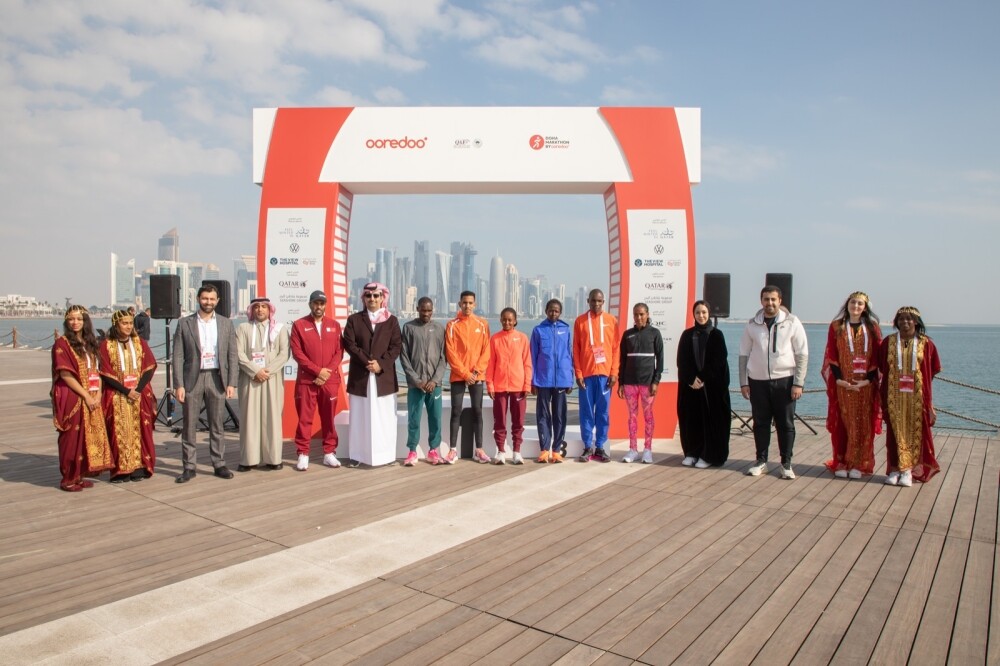
Morocco’s Mohcin Outalha crossed the finish line first in the men’s marathon in a time of 2:06:49, with Kenyan Gevin Kerich taking second place with 2:06:52 on the clock.
Kenyan Victor Kipchirchir and Ethiopian Adane Kebede finished in joint third place, registering a time of 2:06:54.
Ethiopian Meseret Belete took the top spot in the women’s marathon, clocking 2:20:45, with Desi Jisa Mokonin from Brunei finishing in second place with a time of 2:20:47. Kenyan Beatrice Cheptoo placed third with a time of 2:22:28.
In the open marathon category, the men’s race was won by Briton Michael Kallenberger with a time of 2:23:02, while the USA’s Abigail Cember took the top spot in the women’s race, clocking at 3:04:00.
Qatari runners were once again able to enter the AlAdaam category this year. Abdulla Fahad Al Zarra won the men’s marathon with a time of 2:48:21, while Rabaah Al Musleh finished first in the women’s marathon with a time of 3:50:55.
The men’s half marathon was won by Morocco’s Anouar El Ghouz in a time of 1:03:23, with Ukrainian Tetiana Pydoyna winning the women’s half marathon in 1:08:53.
Mohammed Issa Al Fadalah, President of the Qatar Athletics Federation, said:
“We extend our thanks to Ooredoo for once again hosting a phenomenal marathon that is consistently a highlight of Doha’s sporting calendar. Events such as these demonstrate Qatar’s suitability as the ideal venue for major sporting events, and this is only reinforced by the number of top international athletes who travel here to take part. We were delighted to see such an incredible turnout, and congratulate all runners on their sterling performances.”
A total prize fund of QR1 million was on offer across all categories, with event sponsor Q-Auto also offering a Volkswagen T-Roc as a raffle prize to one lucky winner drawn from all those who finished their race in the 5km category and above.
Sheikh Ali Bin Jabor Al Thani fired the starting gun for the Elite category and honored winners with their medals. Sabah Rabiah Al-Kuwari, Director PR at Ooredoo, joined QAF President Mohammed Issa Al Fadalah to present medals to winners in the other categories.
Spectators were able to enjoy the electric atmosphere from the many vantage points along the runner-friendly route, with the race village offering several food and beverage options and plenty of fun to be had by all.
Platinum sponsors for the Doha Marathon by Ooredoo 2023 were confirmed as Qatar Tourism, Q-Auto and Holding Group, with Qatar Airways and Seashore as Gold sponsors. Silver Sponsors are Al Rayyan Water, Aspetar, QIC, and Qommunication.
In line with Ooredoo’s commitment to supporting the community, all funds generated from registration fees for the 2023 Doha Marathon by Ooredoo will be donated to charitable organizations.
(01/21/2023) ⚡AMPOoredoo Doha Marathon
We started the Ooredoo Doha Marathon as a way to bring people together, encourage them to live healthier lifestyles and give back to the community. Funds raised by entry fees to the Ooredoo Doha Marathon will be donated to a range of worthy charities in Qatar. The marathon features four courses for all abilities of runners including a full marathon,...
more...Transgender athletes to be allowed to compete against women in new World Athletics rules
World Athletics is set to leave the door open for transgender athletes to compete against women at the highest level.
Sports chiefs have found themselves with a tough decision to make whether to allow male-born trans women to compete in female categories. Last year the Olympic Committee published statement which stated that 'fairness and scientific evidence' should be taken into account by international federations when devising eligibility criteria for trans athletes.

Triathlon became the first British sport to ban trans women from competing in female events instead changing the name of their men's category to 'open'. English Volleyball followed them while British Cycling banned a trans athlete competing at last year's National Omnium Championships and are completing a review of their policy.
World Athletics are yet to decide their stance in the trans athlete debate but Telegraph Sport reports that the governing body has begun a consultation with its member federations over a proposed rule change.

The change would see a tightening of regulations but fall short of banning trans women from competing in female events at the highest level.
The consultation sent to member federations says: “This preferred option would allow significant (although not full) reduction of anaerobic, aerobic performances and body composition changes, while still providing a path for eligibility of trans women and 46 XY DSD individuals to compete in the female category.”
The Telegraph states that the preferred option also includes a 'full harmonisation of its trans regulations' and those governing athletes with differences of sexual development (DSD), including Caster Semenya.
The “preferred option” would see a halving of the maximum permitted plasma testosterone for trans women from five nanomoles per litre to 2.5 nmol/L. There would also be a doubling of the period athletes must remain below that threshold before being allowed to compete from one to two years.
Athletes currently must remain below a 5nmol/L level for just six months to compete in track events from 400 metres to a mile.
It has been reported that the confidential consultation was sent to member federations amid 'strict secrecy' and presented to the governing body’s council at the end of November. A final decision will be made by the council in March.
(01/21/2023) ⚡AMPby Benjamin Goddard
6 Reasons to add yoga into your training routine
In the world of physical activity, it seems as though there are two kinds of people: those who do cardio, and those who do yoga. The two activities couldn’t be more different, one can involve moderate to big intensity and involve lots of endurance, while the other is slower and gentler (although still a good workout.) Both forms of exercise offer plenty of benefits, and the opposite nature of the two is why endurance athletes can get a lot of value from doing a little downward dog once in a while. If you’re not convinced, check out these reasons why you should add a yoga practice into your training schedule.
1. Yoga is a great form of active recovery

If you’re feeling beat up from training, it’s a good idea to take a day off to allow your body to recover. Instead of doing nothing that day–which is still fine–yoga is a great way to add gentle movement into your day to help you release some tension in your body, stretch out some tight muscles and bring your body into a more relaxed state. This may actually help you recover better than you would have by doing zilch, and you’ll return to training refreshed and ready to go.
2. It helps you get in tune with your body
Most yoga practices emphasize paying attention to and listening to your body. Practising regularly will teach you to be more in tune with your body, not only when you’re doing yoga, but also when you’re out doing a workout. This may allow you to catch signs of injury, over-training and burnout sooner than you would otherwise, because you’re better able to pick up on your body’s subtle cues that something is off.
3. You’ll improve your mental game
Yoga is great for your mind, and can teach you how to focus, tune out unwanted thoughts and remain calm under stress. Anyone who’s ever dealt with race-day jitters will appreciate how valuable these skills are for triathletes, and the ability to control your mind before and during a race can help you perform well, even when the pressure is on.
4. It reduces stress
Long workouts can be be very hard on your body. According to Harvard Health, incorporating a few minutes of yoga into your weekly routine can help slow your body down and reduce that stress. This will help you in a number of ways, including improving your mood, boosting your immune system and helping you sleep.
5. It improves flexibility
While a certain amount of tightness in your muscles is a good thing for triathletes, too much tightness puts you at risk for tears, strains and other injuries. Regular yoga can help to stretch some of those tight muscles back out, and loosen up areas of the body that are holding onto tension. For those of you who are worried about too much stretching, if the amount of swimming, biking and running you’re doing in a week is exceeding the amount of yoga, you’re unlikely to become too flexible.
6. Yoga teaches you how to breathe
Learning to control your breath while you’re training will help you stay relaxed in the middle of a hard workout or race. Since yoga focuses so heavily on matching your breath with your movements, it’s a great way to teach breath control, a lesson you can take with you on the bike.
(01/21/2023) ⚡AMPby Triathlon Magazine
Think you might be injured or sick? Try three days off
Unsure if that extra-tight hamstring is actually a muscle strain? Feeling a little extra-tired and pondering whether you should run anyway? Three days off may be the answer.
David and Megan Roche, coaches and coauthors of The Happy Runner, have a three-days-off rule where they encourage the athletes they coach to freely take three-day rest blocks at any time. Here’s how (and why) you should try it yourself.


Runners want to push through everything
There’s good reason runners joke about this Monty Python skit when discussing injuries–we almost always want to find a way to muscle our way through. Sometimes (often) less is more. “…in an athletic life, holding on too tightly can have negative physical and mental health ramifications,” says Roche.
Recognizing what mental, emotional, and work and family stress you are adding to your training load is valuable. So is knowing that even if you scale back training time, your body is always striving to make adaptations to become better at handling stress, both physical and mental.
Our bodies know stress, not miles. Read that one again. You may have heard it before, but dig in there.
Instead of obsessing about lost mileage, listen to Roche’s wisdom: “Our Strava training logs quantify miles and intensity as stress proxies. Meanwhile, our brains and bodies are constantly integrating and quantifying stress directly through the nervous system. That stress load interpreted by the nervous system is what determines adaptation, not the proxy stress load on training plan bar charts.”
Short-term cycles of inflammation (potentially good) can cause long-term negative feedback cycles (bad)
Roche explains in trailrunnermag that running, or any intense workout, will cause acute inflammation. “Acute inflammation may lead to growth, depending on the context,” he says. “Chronic inflammation may lead to almost every negative health outcome imaginable, from overtraining to life-threatening illnesses.”
While some inflammation may be a result of training, others may be caused by immune responses, nutrition, elevated cortisol responses “and basically everything else you can think of,” says Roche. “Preventing acute inflammation from becoming chronic inflammation sometimes requires stopping the cycle fully with time off.”
72 hours allows your body to perform repairs that will strengthen you
When you combine periods of dedicated training with healthy time off, your body is able to make the adaptations necessary to rebuild and recover.
“The biggest breakthroughs can happen a week or two after these quick breaks, and that’s not just due to recovery, says Roche. “That’s all about rest-induced growth.”
Time off lets you reassess and determine next steps
Roche suggests a branched tree of options after three days off (for any reason). If a runner is itching to go, easing back into running or cross-training can start, paying attention to issues if they crop up.
Alternatively, three days might be the perfect length of time for you to realize that you might need more time off and that it’s time to see a physical or mental health professional. Whatever choice you make, Roche reassures you that knowing when to take time off is an emotional strength that may well make you physically stronger, too.
(01/21/2023) ⚡AMPby Running Magazine
Want to Live Longer? One Study Says to Eat Like This.
It's no surprise that what people eat has an impact on their health, but trying to pinpoint exactly what diet out of the hundreds out there is most optimal for a long, healthy life can be overwhelming. A new study reports that there is no one optimal diet for longevity, but several general eating patterns that can shift life expectancy.
Published in the journal JAMA Internal Medicine, the study found that one can reduce their risk of an early death by nearly 20 percent by eating foods from one of four healthy eating patterns: A Mediterranean diet, a plant-based diet, the Alternative Healthy Eating Index and the Dietary Guidelines for Americans (more on those below). All four eating patterns emphasize whole grains, fruits, vegetables and legumes.
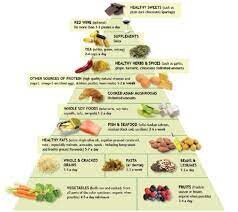
Professor and chair of Harvard's Department of Nutrition, Dr. Frank Hu, said in a statement, "It is critical to examine the associations between DGAs- recommended dietary patterns and long-term health outcomes, especially mortality."
Hu says there is a lot of flexibility when it comes to eating healthy and dietary choices can be tailored to individual preferences as long as they adhere to the basics of any of the four healthy eating styles. This means that even if you get tired of eating one way, you can switch over to another dietary plan. The study followed the eating habits of 75,000 women and 44,000 men over 36 years. Every four years, the participants would fill out questionnaires about what food they ate, and each person was scored based on how much they adhered to one or more of the eating patterns.
Participants who remained consistent with their healthy eating patterns could reduce their risk of dying from respiratory disease by 35 to 46 percent, cardiovascular disease by 6 to 13 percent and dying from cancer by 7 to 18 percent.
Most people are familiar with the Mediterranean diet and a plant-based diet, but what about the other half of the recommended four healthy eating patterns?
Alternative Healthy Eating Index
Developed by Harvard researchers, the Alternative Healthy Eating Index (AHEI) assigns ratings to foods for how well they prevent chronic diseases and illnesses including cancer, diabetes, heart attacks and strokes.
Some AHEI food choices include a variety of vegetables with a focus on leafy greens, four servings of fruit a day, whole grains, nuts, legumes and vegetable proteins like tofu, fish and healthy fats like olive oil. In following this eating pattern, it's suggested one avoids potatoes, refined grains, fruit juices and saturated fats.
Participants of the study who followed the AHEI eating pattern reduced risk of death by 20 percent.
The Dietary Guidelines for Americans (DGA) is a metric designed to measure diet quality by how closely one follows its recommendations: Focus on variety, nutrient density and portions, limit added sugars, saturated fats and sodium and avoid sugary beverages. The guidelines are less specific on what foods to eat, rather an outline on how to customize nutrient-dense meals, meeting dietary needs and staying within calorie limits.
Within this study, participants who followed this eating pattern had a 19 percent lower risk of dying.
(01/21/2023) ⚡AMP
by Trail Runner Magazine
Plant-based runners: speedy grab-and-go meal ideas
Interested in eating plant-based but struggling to find simple, quick meals that are full of nutrition while still easy on the budget? The authors of Plant-Based Sports Nutrition have some tips and tricks for you.
Both registered dietitians, authors Dr. Enette Larson-Meyer and Matt Ruscigno suggest planning in advance as key to maintaining high-performance plant-based nutrition. Reading labels is important–with the many new plant-based alternatives to meat and cheese, it can be tempting to purchase whatever looks appealing. Check iron, protein, fat and calcium content, and look for options that have the equivalent nutritional composition of the products they’re replacing.

Larson-Meyer and Ruscigno also suggest adding a salad to any meal, with fresh and dried fruit tossed in to add both a diverse array of nutrients (calcium, vitamin C, vitamin E, iron, zinc, etc.) as well as carbohydrates. Adding nuts, beans or cheese (provided you’re not strictly vegan) can boost healthy fat and protein, as well.
It can be challenging enough to squeeze in a run alongside all the other things you may do in a day. Eliminate some of the stress by trying some of these quick make-and-take breakfast and lunch options.

Grab-and-go breakfasts
Have some fresh or dried fruit in reusable containers on hand, and grab one of the following to make your morning ridiculously simple.
Homemade muffins made with grapeseed or canola oil and whole grains (try Shalane Flanagan’s recipe here)
Whole-grain toasted English muffin with low-trans-fat margarine or nut butter and jam
Dairy or soy yogurt, fruit and granola parfait (made the night before in a to-go container)
Breakfast cookies (make your favourite oatmeal cookies with half the sugar, orange juice as the liquid, and add dried fruit, nuts and ground flaxseed)
Quick portable lunches
Pack fresh fruit or veggies and/or whole-grain crackers or whole-wheat pretzels along with one of these easy-to-throw-together lunches and some healthy cookies.
Tomato, avocado, and sprouts on a whole-grain bagel
Black beans, lettuce, avocado and salsa in a spinach or whole-wheat roll-up
Black-eyed-peas spread (1 can beans, 1/2 cup parsley, 2 Tbsp olive oil, 2 Tbsp lemon juice, 1/2 tsp tarragon, garlic and pepper to taste) on flatbread or in a whole-wheat wrap
Dark leafy greens in a pita with chickpeas, kidney beans or white beans, and dressing of choice
Peanut butter, sliced banana, raisins and walnuts on whole-wheat bread
Red-pepper bean spread (1 cup white beans, 2 tsp finely chopped roasted sweet peppers, 1 tsp finely chopped scallions) on foccacia or flatbread
If you decide to maintain a plant-based diet for the long haul, keep your menu exciting by trying new foods and learning about nutrition. Once you nail the basics, planning nutritionally-balanced meals will become as much a part of your routine as training, and can be an enjoyable, easy part of your day.
(01/20/2023) ⚡AMPby Keeley Milne
Australian 800m Commonwealth medalist tests positive for EPO
On Friday morning, Athletics Australia announced the provisional suspension of middle-distance runner Peter Bol, who won the silver medal in the men’s 800m at the 2022 Commonwealth Games in Birmingham, U.K.
Bol, who was fourth at the Tokyo Olympics in the men’s 800m, failed an out-of-competition urine test on Oct. 11. The 28-year-old tested positive for the banned drug erythropoietin, known as EPO.
In accordance with Athletics Australia’s anti-doping policy, Bol has been provisionally suspended, effective from Jan. 10.

Bol went on Twitter to plead his innocence, denying that he’s ever purchased or used synthetic EPO, and has requested Sport Integrity Australia and Athletics Australia to take a look at the B sample from the October test.
Under the Australian National Anti-Doping Policy, the suspended athlete is entitled to have their B Sample analyzed. The results from the B sample will be known in February.

“I am innocent and have not taken this substance as I am accused,” Bol said on Twitter.
If his B sample is positive, Bol could face a four-year ban from athletics.
EPO has been on the World Anti-Doping Prohibited List since the 1990s; it is used to improve endurance performance or to speed up recovery.
Bol emigrated to Australia from Sudan with his family when he was eight. He is currently the Oceanic record holder and the fastest Australian ever over 800m, with a personal best of 1:44:00.
He currently trains in Melbourne with “Fast 8 Track Club” under middle-distance coach Justin Rinaldi.
(01/20/2023) ⚡AMPby Running Magazine
Athing Mu stars in Millrose Games 600m
Athing Mu is already the second-fastest women’s indoor 600m runner of all time and the US middle distance star could make another statement when she returns to the Millrose Games, a World Athletics Indoor Tour Gold meeting, in New York on February 11.
It was in 2019, at the age of just 16, that Mu clocked 1:23.57 at the US Indoor Championships to miss the world 600m best by just 0.13.

Since then, she has become an Olympic and world champion in the 800m and has taken her PB in that discipline to 1:55.04, the US record.
The 800m final at the World Athletics Championships Oregon22 on 24 July last year, which Mu won in 1:56.30, was her most recent race and she will now be looking for another strong indoor season in a year that offers her the chance to defend that world title in Budapest.
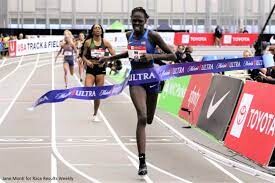
“The women’s 600m will be one of the highlights of this year’s Millrose Games, and we are delighted to welcome Athing back to the track she grew up on,” said Millrose Games director Ray Flynn.
However, Mu will have to contend with athletes including her US compatriot Shamier Little and Jamaica’s Natoya Goule if she is to secure more success.
Hurdles specialist Little, the 2015 world 400m hurdles silver medallist, will look to continue testing herself in the flat event over a slightly longer distance, after opening her season with a world-leading 600m time of 1:24.65 last weekend.
While Goule, who has an indoor 600m best of 1:25.35, was the fourth-place finisher in the 800m at the World Athletics Indoor Championships Belgrade 22 and also finished fifth at the World Athletics Championships in Oregon last year.
They will be joined by Olivia Baker and Sophia Gorriaran in the 600m field.
Also in action in New York will be Chase Ealey, as she returns to compete in front of a home crowd as the world shot put champion.
Recently announced for the opening meeting in the 2023 World Indoor Tour Gold series in Karlsruhe on 27 January, Ealey has now also been confirmed for the Millrose Games, where the world champion and world indoor silver medallist will take on her US compatriots Maggie Ewen and Jessica Woodard, plus Canada’s Commonwealth and NACAC champion Sarah Mitton.
It means fans will be treated to two thrilling shot put showdowns in New York, with Ryan Crouser and Joe Kovacs already announced for the men’s contest.
“I am really excited to have the Millrose Games as my first competition in the US as the world champion,” said Ealey. “I hope that with the success of the male and female competition, people will love our event indoors!”
(01/20/2023) ⚡AMPby World Athletics
NYRR Millrose Games
The NYRR Millrose Games,which began in 1908 as a small event sponsored by a local track club, has grown to become the most prestigious indoor track and field event in the United States. The NYRR Millrose Games meet is held in Manhattan’s Washington Heights at the New Balance Track & Field Center at the Armony, which boasts a state-of-the-art six-lane,...
more...Chinese TikToker earns millions running in high heels
A 41-year-old TikToker and salesman from Sichuan, China, Wu Nan, has found a niche way to sell women’s high heels. The man’s marketing strategy involves sprinting in stilettos–and he has reportedly generated a staggering six million yuan (CAD $1,100,000) in monthly sales.
After years of struggling to sell cakes, and then curtains, Nan found running in heels a great technique to boost his online sales.

In Nan’s videos, he can be seen sprinting aggressively on the treadmill, track or outdoors while wearing big black boots or dazzling stilettos, showcasing how sturdy the heels are. Apparently many women face this trouble with heels and need a durable pair to get around in.
Nan is also very descriptive with his marketing. In one clip, he refers to the softness of the sheepskin and the shoe’s “special feeling” when sprinting in it.

According to the South China Post, Wu began selling women’s shoes in 2008 when he opened his first shop. He began posting videos online in March 2020 and has gained over 1.2 million subscribers on TikTok.
Wu told Chinese news that his expectations were low at first. He thought he’d only sell around 500 pairs a year. After he made his first video, he sold over 100 pairs, raking in $10,000; now he makes more than a million dollars per month.
The prices of his shoes ranges from $40 to $200 CAD (US$150).
His videos have gone viral in China, as locals express their admiration for grown men who can run in high heels.
(01/20/2023) ⚡AMPAllyson Felix receives ultimate honor from her alma mater, USC
Seven-time Olympic champion and the most decorated female track athlete in U.S. history, Allyson Felix, received a special honor on Jan. 18, when the University of Southern California (USC), her alma mater, recognized her achievements by changing the name of the school’s track to Allyson Felix Field.
“For me to be born and raised in Los Angeles and have such a history at USC, I am just completely humbled,” Felix said in a statement released by the university. “It’s such a huge honor to be a part of history on campus, and it’s such a special place for me.”

Felix retired at the end of the 2022 season, competing in five Olympic Games between 2004 and 2020, and winning 11 Olympic medals: seven gold, three silvers and one bronze.
She is also the most decorated athlete in world championship history, with 20 medals between 2005 and 2022, including 14 golds, three silvers and three bronzes (seven from individual events and 13 from team relays).
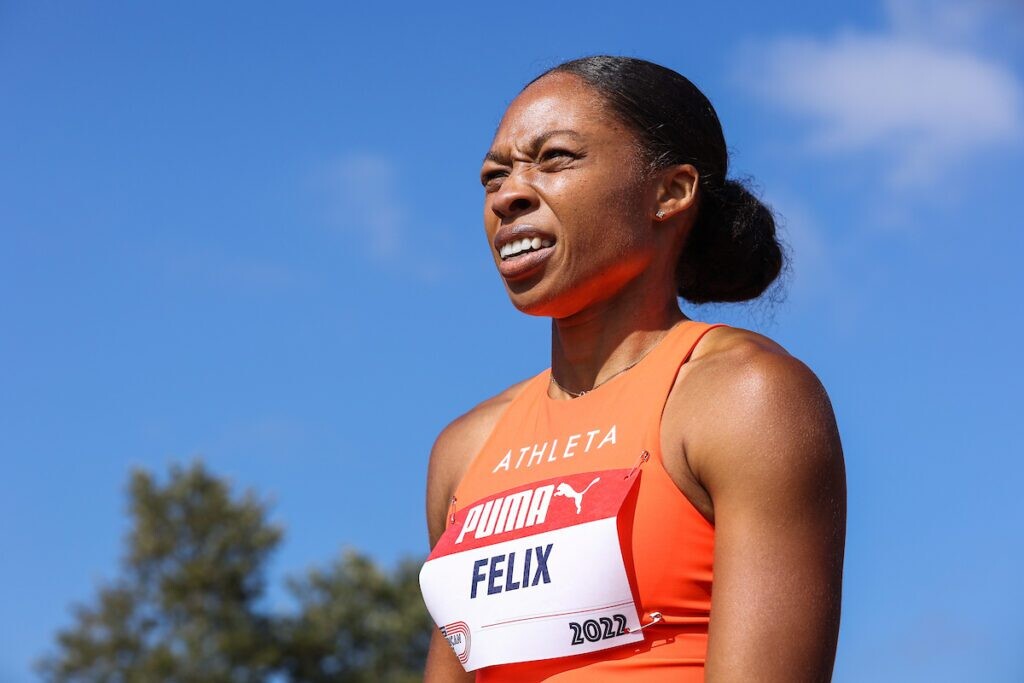
During her career, she has been a prominent advocate for women and women of color in the sport of track and field. In 2018, she broke her contract with Nike after saying publicly that the company declined to provide adequate maternity benefits and salary guarantees as Felix looked to start her family.
The stadium was previously named after American philanthropist Katherine B. Loker. The track will be formally changed to Allyson Felix Field this spring.
“The Allyson Felix Field will recognize her immense achievements as a sports legend and Trojan—while also showing our admiration for her role as an entrepreneur, advocate and champion for women,” said USC President Carol Folt.
(01/20/2023) ⚡AMPby Marley Dickinson
Belarusian coach charged after 2020 Olympics defection scandal
Belarusian coach Yury Maisevich was charged by the AIU for the defection of Belarus sprinter Krystsina Tsimanouskaya during the Tokyo Olympics.
On Thursday morning, the Athletics Integrity Unit (AIU) laid charges against Belarusian coach Yury Maisevich for his treatment of sprinter Krystsina Tsimanouskaya, who defected to Poland during the Tokyo 2020 Olympics.

One day before Tsimanouskaya was due to compete in the women’s 200m at the Tokyo Olympics, she accused officials from the Belarus Olympic Committee of forcing her to compete in the 4x400m relay without her consent. She complained about the situation in a video on social media, which led to criticism by the Belarus media, which claimed she lacked team spirit.
She was forced to miss her 200m race because of the incident. The next day she was taken to Tokyo’s Haneda Airport and sent home, but she refused to board the flight back to Belarus.

The national team coach, Maisevich, and Belarusian Olympic official Artur Shumak both had their accreditation revoked by the International Olympic Committee (IOC) after Tsimanouskaya claimed she was taken to the airport against her will. She sought help from the police in Japan; two weeks later, Tsimanouskaya, 26, received a humanitarian visa to Poland and safe passage to the country, which borders Belarus. She later became a Polish citizen, and is currently studying at the Józef Piłsudski University of Physical Education in Warsaw.
In Sept. 2021, IOC and World Athletics referred the matter to the AIU, charging Maisevich with breaching standards outlined in the Integrity Code of Conduct.
The AIU is an independent body created by World Athletics to manage all integrity issues (both doping-related and non-doping-related) for the sport of athletics.
The head of the AIU, Brett Clothier, explained in a press release: “An important role of the AIU is to safeguard athletes and protect them from harassment.”
The AIU alleges that, with respect to the circumstances of Tsimanouskaya’s removal from the Olympics, “Maisevich did not act with integrity and acted in bad faith; failed to safeguard the athlete’s dignity and his actions constituted verbal and mental harassment; and that he brought athletics generally into disrepute.”
The AIU has not revealed the specifics of the charge and the implications for Maisevich’s future in the sport are not clear.
(01/19/2023) ⚡AMPby Marley Dickinson
Eliud Kipchoge hopes to make history as the only athlete to win all the marathon majors
Speaking over the weekend during the unveiling of his murals in Eldoret, the world record holder said his next stop will be Boston in April before closing the season with the New York Marathon later in the year.
Kipchoge has so far won Tokyo, London, Berlin and Chicago, which are part of the World Marathon Majors.
He said winning Boston and eventually New York City Marathon will be great.

“2022 was a great and very successful year for me. Right now my focus is on the Boston Marathon as I seek to win my fifth World Marathon Majors race,” said the four-time Berlin Marathon champion.
Kipchoge said he wants to consolidate the six-star marathon medals as well as engage in other community-based projects under his Eliud Kipchoge Foundation.

He said he is currently looking at projects anchored around education and tree planting.
The four-time London marathon champion said his target in the education sector is to build at least a library in each of the 47 counties.
“I do not only want to construct a library in each county, but also adopt a forest in each county. This is a big dream but I know there is a need to plant more trees so that humanity can have clean air to breathe as well as conserve the environment,” he said.
Safaricom CEO Peter Ndegwa said the murals are artistic impressions in honour and celebration of Kipchoge’s achievement as one of the greatest marathoners.
The murals were inscribed: ‘No human is Limited' and ‘Wenye nidhamu tu maishani ndio wako huru' meaning 'only the disciplined are free'.
Ndegwa also announced a Sh1m donation towards Eliud Kipchoge Foundation. In addition, the telco will also support Eliud with 5,000 tree seedlings as part of his tree-growing initiative at Kaptagat Forest.
In Boston, Kipchoge will be up against former New York Marathon champion Albert Korir, former Commonwealth 5,000m gold medallist Augustine Choge, Shura Kitata and Ghirmay Ghebreslassie.
Also expected to challenge the streets of Boston are champion Evans Chebet, 2021 winner Benson Kipruto, two-time winner Lelisa Desisa and Tanzanian record-holder Gabriel Geay.
(01/19/2023) ⚡AMPby Emmanuel Sabuni
Boston Marathon
Among the nation’s oldest athletic clubs, the B.A.A. was established in 1887, and, in 1896, more than half of the U.S. Olympic Team at the first modern games was composed of B.A.A. club members. The Olympic Games provided the inspiration for the first Boston Marathon, which culminated the B.A.A. Games on April 19, 1897. John J. McDermott emerged from a...
more...Quickly improve your speed with this 30/30 fartlek workout
Now that the holidays are over and your training for spring races has resumed, jumping back into workouts can be overwhelming. If you are looking to ease back into things and still want a quality speed workout, this session is for you.
The workout is called the 30/30 fartlek, and it can be done as a workout on its own, or thrown into the end of a long run to challenge your fatigued muscles. A fartlek is a unique speed workout (it’s Swedish for “speed play”) designed to get you comfortable with different paces.
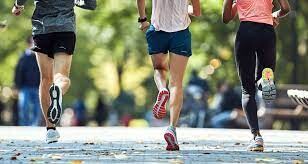
The concept behind the 30/30 fartlek workout is not to destroy you, but to give you a quality session. Most runners will use fartlek training for continuous running to keep their heart rate (HR) at a certain level to improve their aerobic endurance in the quickest way possible. Fartlek running is also one of the best ways to incorporate speedwork into your mileage.
Workout:

10 to 15 reps of 30 seconds fast and 30 seconds slow jog (continuous)
Each 30-second rep should be done at a comfortably fast pace (generally 5K-10K pace or faster), and the 30-second slow jog should be done at a pace slower than your easy runs.
If you need to walk between reps, you might be pushing too hard; try slowing down the pace of your fast 30s a bit.
Although the workout may seem like a lot of reps, it is only five to eight minutes in total. Doing this session once a week will quickly improve your speed and endurance, helping prepare your mind and body for faster efforts to come.
(01/19/2023) ⚡AMPby Marley Dickinson
Should you run early or late? A new study has surprising findings
It’s a common debate among runners–is it better to run in the morning or in the evening? A new study concluded that exercising between noon and midnight could significantly lower insulin resistance compared to activity earlier in the day.
While more research needs to be done, the study raised some interesting points for those looking to manage blood sugar and prevent Type 2 diabetes.
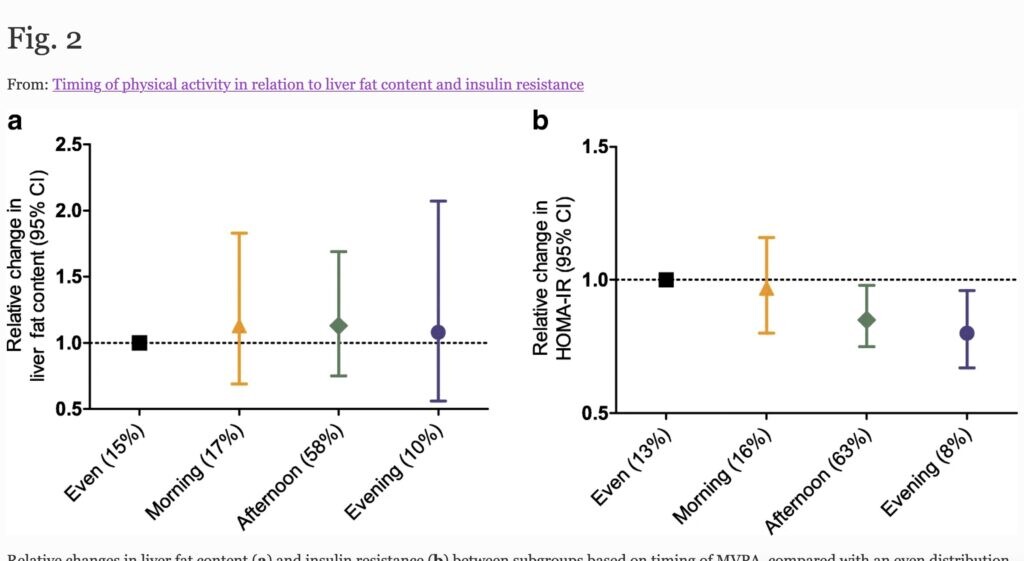
“Our aim was to investigate associations of the timing of physical activity and breaks in sedentary time with liver fat content and insulin resistance in a middle-aged population,” lead study author Jeroen van der Velde of Leiden University Medical Center told Healthline.
What is insulin resistance and why is blood sugar important?

Key to be aware of when it comes to prediabetes and type 2 diabetes, insulin resistance occurs when cells stop responding to insulin.
Food is broken down into blood sugar which then enters the bloodstream, signaling the pancreas to release insulin. Insulin helps blood sugar enter the body’s cells so it can be used for energy, and it signals the liver to store blood sugar for later use.
If a lot of blood sugar floods the bloodstream, the pancreas pumps out more insulin to get blood sugar into cells. Over time, cells stop responding to all that insulin—they’ve become insulin resistant.
The pancreas keeps making more insulin to try to make cells respond, but can’t keep up and blood sugar keeps rising. Prediabetes and type 2 diabetes are often the result of this perfect biological storm, according to the CDC.
High blood sugar is damaging to the body, and can also be a contributor to heart disease, vision loss, and kidney disease.
The study
Researchers analyzed data from a Netherlands Epidemiology of Obesity (NEO) study, which included men and women (between 45–65) who had a body mass index (BMI) of 27 or greater, meaning they were in the category of overweight or obese.
The more than 6,700 participants in the control group underwent a physical exam where blood samples were taken to measure blood glucose and insulin levels when they were fasting and after eating and were questioned about their lifestyles.
A random sample of 955 participants was given an accelerometer/heart rate monitor to use for four days and nights to monitor their movements. The day was divided into three blocks; 6 am to 12 pm, 12 pm to 6 pm, and 6 pm to midnight.
The proportion of total daily moderate-to-vigorous-physical activity (MVPA) that was recorded within each segment revealed the most active period.
The takeaway
The researchers discovered that for the participants in the study, exercising in the afternoon was linked to an 18 per cent reduction in insulin resistance compared to spreading activity throughout the day and exercise in the evening with a 25 per cent reduction.
Researchers also discovered that time spent doing moderate to vigorous physical activity reduced both liver fat content and insulin resistance.
van der Velde acknowledged that more scientific research needs to be done, and emphasized that for this study, he looked at differences in insulin resistance on a group level, among adults all within a certain cohort. Exercise at any time of the day is recommended and can be preventative for a wide variety of health problems.
(01/19/2023) ⚡AMPby Keeley Milne
Quick And Easy Snacks For Runners
Whether planning your snacks for a marathon or trying to upgrade your workout routine, finding the right snacks as a runner is vital to your energy levels. Your body cannot work out efficiently or heal properly if you aren’t providing the right macros.
Snacks are a quick, efficient way to fuel your body for every run, but not all snacks will be the right choice for your body. Take a look at the top quick and easy snacks for runners below.

Why Snacks Matter
The more you exercise, the more calories and nutrients your body needs to thrive. If you don’t have enough energy, you won’t be able to make it through a serious workout, or your body will start to break down muscle as it seeks additional energy sources.

Having easy snacks is essential if you’re building your workout routine, including running. You must provide calories, carbs, and other nutrients to ensure your body is supplied with energy throughout the day. Before running, after running, and even on recovery days: your body needs fuel.
Snacks also ensure you’re giving your body what it needs to grow stronger during runs.
Snacks eaten one to three times a day, depending on your training level, should include carbohydrates, fiber, proteins, and fat.
Carbohydrates give you energy and restore glycogen in the muscles. Fiber keeps you feeling full while boosting digestive processes. Proteins keep your muscles in good condition. Fat ensures your body can absorb vitamins.
#1: Veggies, Pretzels, and Hummus
An easy snack that can be customized to fit your training and diet is a plate of veggies, pretzels, and hummus. Each of these components can be included in specific proportions to add extra protein, carbs, or fiber, depending on your current needs.
Pretzels are a great source of carbohydrates that digest quickly. They also have some salt, which is good for your body’s overall hydration balance. Hummus is a good source of iron, fat, and proteins.
Carrots aren’t high in calories, but they keep you feeling full. Carrots aren’t high in calories, but they keep you feeling full. Eating carrots to prevent overeating is a common tactic.
Many veggies like carrots and celery also have high water content. Water is, of course, another essential part of your nutrition as a runner. Not all fluid intake needs to come directly from water; eating water-rich foods hydrates your body.
#2: Yogurt with Granola or Fruit
Yogurt is a fantastic food for runners. It is low in fat, high in carbs, and contains many valuable nutrients and vitamins. Additionally, many runners benefit from the probiotic effects that yogurt can have.
To make a balanced snack, try supplementing yogurt with blueberry cinnamon granola like this one or fruit. Slightly-sweet granola adds texture to the food while also upping the energy you’ll get out of your snack.
Ideally, using a flavored granola or low-sugar fruit is better than choosing a flavored yogurt. Flavored yogurts contain a lot of added sugars, which isn’t always a good choice.
#3: A Topped Toast
Eating a slice of toast with a protein-rich topping is an excellent snack for pre-running or recovery. Runners tend to use peanut butter as it is very high in healthy fat and protein-rich. Whole-wheat bread is the preferred choice for long-lasting energy, but you can also skip the bread altogether and eat these toppings with a banana or apple. It’s essential to be mindful when choosing your peanut butter. All-natural peanut butters contain less added sugar and limit hydrogenated oils, which can be hard on your body. Opt for the more natural peanut butter and nut butter options when possible.
#4: Energy Bars
Finally, let’s discuss the easiest and quickest choice: energy bars.
Selecting a premade bar instead of making your snack can feel like a cop-out. Still, it’s important to remember that energy bars are often specifically formulated to provide the right blend of nutrients, energy, and enjoyment for runners like you.
Energy bars come in many flavors and varieties. You’re good to go if you select bars that are not overloaded with added sugars. You can find high-carb, low-carb, protein-rich, and other types of bars on the market today. Don’t flounder trying to find the perfect snack if you don’t have time to meal prep. It’s okay; energy bars are a fantastic and easy option for runners.
(01/18/2023) ⚡AMPby Colorado Runner
North American races to see a resurgence in 2023, survey says
Flashback to a year ago, most runners were locked down and working remotely with no races in sight. But within a few months, as restrictions were lifted, most races returned after a two-year hiatus. Race organizers were happy to have runners back, but the registration numbers for most were not what they were before the pandemic.
Athlinks, the largest race results database in the world, surveyed an audience of 400,000 athletes based in North America, identifying their post-pandemic habits to gain an understanding of why numbers did not fully bounce back in 2022.

The survey showed several reasons for lacklustre event participation in 2022, ranging from athlete safety concerns to simply being “not ready” to return to racing. Forty-five per cent of the athletes who did not return to racing last year indicated that they are either registered or plan to register for their first race back in 2023.
Those who have not returned to racing stated the following four things would persuade them to get back to it: Getting into shape, having a running buddy to commit to the race with, fun themes, and more affordable registration fees.

Forty-eight per cent of athletes who returned to racing indicated that social media and word of mouth were how they found races. These results emphasize the importance of overall digital marketing efforts for events. Athletes are actively searching for new races to get involved in, and it is more important than ever for events to put their best foot forward digitally.
Athlinks revealed another promising indicator that late-fall races saw the strongest racing volume, nearing numbers from 2019. “We are starting to see event numbers close to 2019 once again–people are ready to race,” states Nick Wiegand, Athlinks product manager.
While the resurgence of the racing industry has progressed slower than many race directors hoped, there is a strong indication of a continued trend of steady growth for 2023. The survey shows it is key to focus on catering to athletes who have not yet returned to racing to help them get back into the habit.
(01/18/2023) ⚡AMPby Marley Dickinson
Eliud Kipchoge urges athletes to shun doping
Eliud Kipchoge has shared his concerns over the increase in number of doping cases among Kenyan athletes.
The 38-year-old, who is considered among the best long-distance athletes of all time, also warned his compatriots that using drugs to enhance their performances on the track and field will also negatively impact their health.

Kipchoge, the reigning Olympic and World marathon champion, spoke on Tuesday night at the launch of the Tecno Phantom X2 series phone in Nairobi.
The athlete was recently announced as Tecno's brand ambassador.

"Let each and every athlete make it a personal decision to protect their career and health," explained Kipchoge. "When you consistently use drugs, your health deteriorates. This affects your sporting career and personal life."
A total of 55 athletes were banned for doping, eight of them provisionally in 2022, a statistic that places the spotlight on Kenya as a sporting powerhouse amid threats of a ban on the country from competing at international meets.
Sports Cabinet Secretary Ababu Namwamba has described the doping menace as a 'crisis' and warned that efforts are underway to criminalise the vice.
"Kenya is in the midst of a doping crisis which is threatening to shatter the very fine glitter of Kenya as a sporting nation. We have rogue agents who do not seem to pay any regard to the laws of the land. We will catch them. We have the plan to end this mess."
(01/18/2023) ⚡AMPby Eliud Kipchoge
Paul Tergat named ambassador for World Athletics Cross Country Championships Bathurst 23
Paul Tergat has been announced as ambassador of the World Athletics Cross Country Championships Bathurst 23, with one month to go until the 44th edition of the global showpiece in Australia.
Kenya’s multiple world cross country gold medallist will be in Bathurst for the competition on 18 February, when some of the world’s current best athletes will descend on Mount Panorama looking to emulate him as a world cross country champion.

Tergat is one of the greats of long-distance running and it was in cross country that his success story really began. The first of his five individual world cross country crowns was claimed in Durham in 1995 and he would go on to gain gold at the next four editions – in Stellenbosch in 1996, Turin in 1997, Marrakech in 1998 and Belfast in 1999.
Cross country running paved the way for his achievements on the road and track, which included multiple world records, two world half marathon titles, two Olympic 10,000m silver medals, and three 10,000m medals – two silvers and a bronze – at the World Championships.
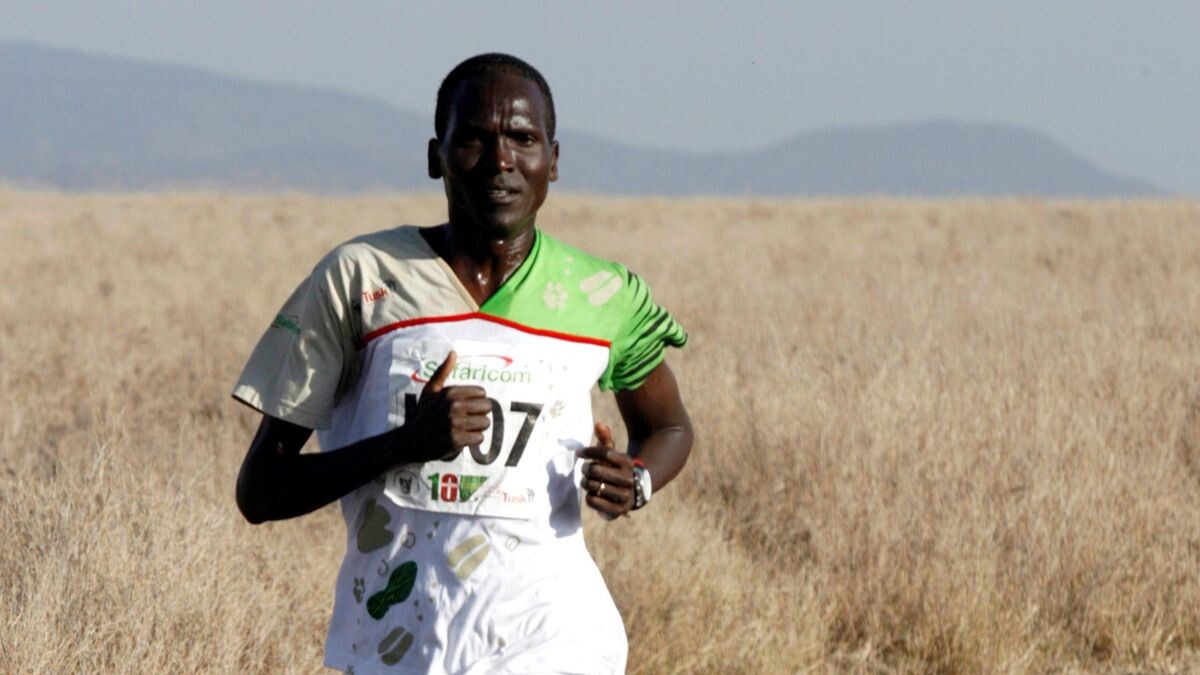
The singlet he wore when winning in Turin in 1997 is on display in the Museum of World Athletics.
“Cross country will always be a special event in my athletics career,” said Tergat. “It evokes very nostalgic and fond memories, because this is really where my long athletics career was birthed, developed and blossomed, with the crowning of five straight World Cross Country Championships titles between 1995 and 1999."
“In cross country running, I picked up lifelong lessons after conquering diverse conditions, twists and turns, terrains, wetlands and barriers that define the athletics event.”
Tergat has experience of racing in Australia; the 10,000m final at the 2000 Sydney Olympic Games – where he pushed Haile Gebrselassie all the way before ultimately ending up with silver – was perhaps the most iconic race of Tergat's career.
As current world-class and mass runners prepare to take on the challenging Bathurst course, Tergat – who won individual and team titles for Kenya at each of those five editions of the World Cross Country Championships – reflected on the event in 1999 as his own competitive standout.
“Belfast remains an iconic race for its challenging, muddy course,” he explained, “but, most importantly, as the race in which I attained my historic fifth consecutive senior men’s title and a 14th successive team title for my country. This is the reason I have declared that race as ‘the toughest yet, but the best’.
“For these and many other reasons, I never hesitate to make any contribution towards raising the profile of cross country as a central event for every athlete, from track to road running.”
(01/18/2023) ⚡AMPby World Athletics
World Athletics Cross Country
Athletes from across the globe will descend on Australia for the World Athletics Cross Country Championships Bathurst 2021. Mount Panorama is better known as the home of Australia’s premier endurance motor race, but in one year from now, it will welcome the world’s best endurance runners for what will be Australia’s first World Athletics Series event in...
more...How Conservative Pacing Can also Be Aggressive Pacing
Matt Fitzgerald is an acclaimed endurance sports coach, nutritionist, and author. His many books include On Pace, The Endurance Diet, 80/20 Running, and How Bad Do You Want It?
On June 6, 2021, Sifan Hassan of The Netherlands smashed the women’s 10,000-meter world record in the Dutch town of Hengelo, besting Ethiopian Almaz Ayana’s mark of 29:17.45 by more than 10 seconds. Two days later, the Ethiopian Olympic Trials Women’s 10,000m was held on the same track. Nobody expected the record to go down again, least of all because the fastest runner in the race, Letesenbet Gidey, had a PB of 30:21—a full 75 seconds slower than Hassan’s time. Nevertheless, those fancy blue Wavelight LED’s that show world-record pace were activated, just in case.
Gidey started fast, but not that fast, reaching 2000 meters in 5:54, about 5 seconds behind the lights. Her next kilometer was a mite quicker, though still slower than record tempo, leaving her another second off the mark after 7.5 laps. She held that pace through the halfway mark, hitting 5000 meters in 14:42, on pace to finish in 29:24, a virtual straightway behind the specter of Hassan. But she looked really good—about as relaxed and comfortable as she had during her earlier warm-up jog.
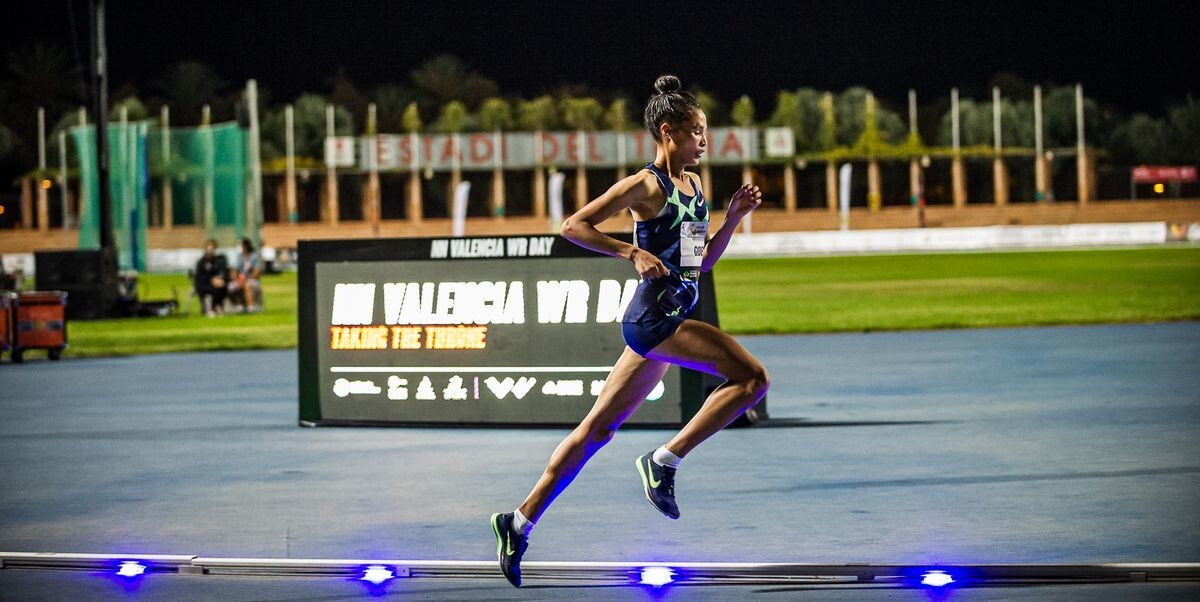
Gidey’s next two kilometers were her swiftest yet—each completed in 2:55—yet even this pace was fractionally slower than Hassan’s standard, leaving her fully 10 seconds behind the lights at 7K. That’s when Gidey began to accelerate, running each remaining lap faster than the one before. She covered the final 1600 meters in an astonishing 4:26, the bell lap in a brain-melting 63 seconds, and finished with a new world record of 29:01.03. Her time for the second half of the race—14:18—was the eighth fastest women’s 5000-meter time ever run!
What do we make of this performance? For me, it teaches an important lesson about pacing. Specifically, it shows that a conservative pacing strategy can also be an aggressive pacing strategy in the sense that running the first part of a race at a relatively slow pace can position an athlete to achieve a breakthrough performance for the full race distance. The reason has to do with the psychological nature of pacing and human performance limits.
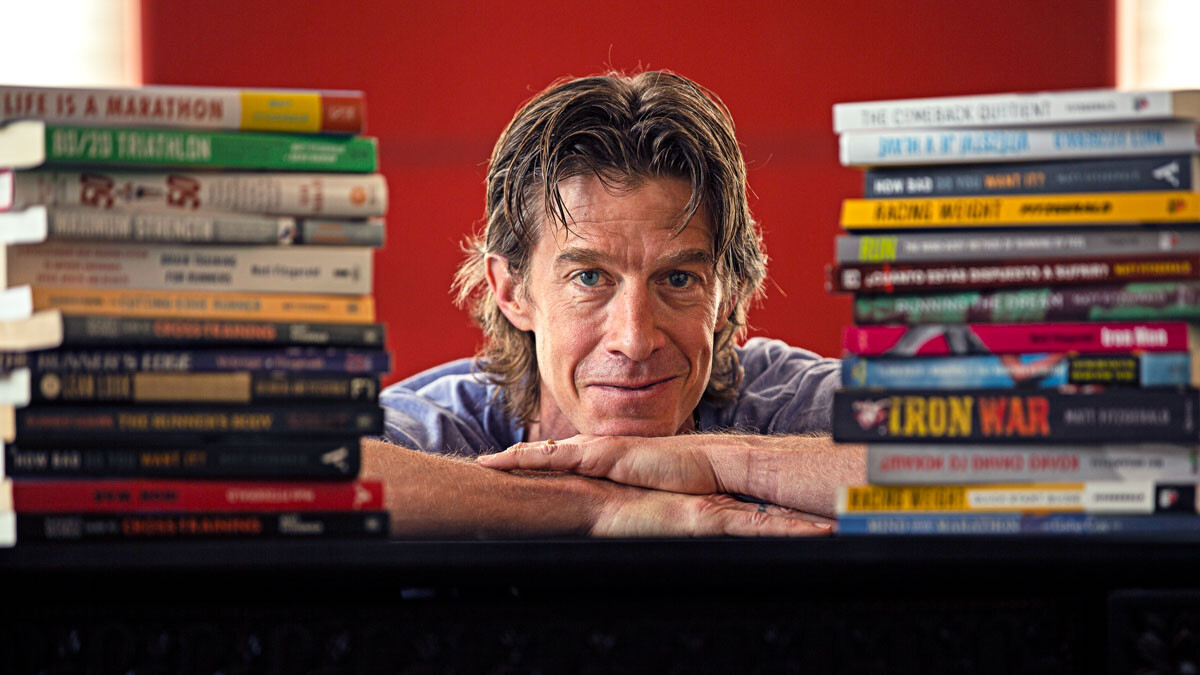
You see, in sprint races, performance is directly limited by physiology (specifically, leg turnover and force application). But in middle- and long-distance running events, performance is merely constrained by physiology and is directly limited by psychology. In a properly-paced middle- or long-distance race, the runner does not encounter any kind of hard physiological limit until they are within about 30 seconds of finishing, as it is humanly impossible to sustain a maximal effort longer than half a minute, give or take. Prior to that time, the runner is deliberately running slower than she could, aiming for the fastest pace she can sustain without hitting her bodily limit before she’s within 30 seconds of crossing the finish line.
This calculated parceling of effort is done mainly by feel. Hence, a degree of uncertainty is involved in pacing. How can a runner be certain she’s riding the line, on track to complete the race in the exact least time possible for her on that day? She can’t. However, uncertainty does tend to decrease as the race unfolds. The closer the runner gets to finishing, the more confident she becomes in her pacing judgments. Shorter races are easier to pace than longer ones, after all, and longer races effectively become shorter ones as runners move through them.
Pacing is really all about belief. When a runner is certain her current effort is sustainable for the remaining distance of a race, she’s usually right, and when she’s certain it’s not, she’s also right, not for some hippie-dippy mystical reason but because such beliefs have a solid basis in perceived effort, conscious knowledge of the situation, and past experience. But because belief is not strictly tied to physiology, runners can manipulate belief independent of physiology in ways that enable them to race faster, and that’s exactly what Letesenbet Gidey did in her record-breaking 10,000 meters.
In particular, Gidey ran the first 7K of the race at a pace that was slow enough to leave her feeling relatively good but not so slow as to put the world record out of reach. At that point, confident she could speed up, she did, but only a little, such that, after completing another lap, Gidey felt confident she could speed up a little more, which she did, and so on. The materialists in the room are rolling their eyes at this, but is my theory really so far-fetched? We have all kinds of experimental evidence that purely psychological factors affect pacing and performance. Endurance athletes are known to race faster when they are in a group, when they have a higher level of motivation before the race, and when they set a goal they believe is achievable, but just barely. The Gidey method of pacing is just one more way of improving performance through psychological self-manipulation.
I’m not suggesting that the Gidey method is the optimal pacing strategy for every runner in every race, though I push back hard against the claim that Gidey achieved what she did despite her pacing, not because of it. Folks, she covered 10,000 meters 5 seconds faster than any woman in the history of the world! How could that possibly have come about as a result of screwing up? I humbly ask you to consider experimenting with an aggressively conservative pacing strategy in an upcoming race. Here’s an example of a Gidey-style pacing plan for a runner hoping to squeak under 40:00 in a flat road 10K:
1K – 4:062K – 4:05 (8:11)3K – 4:05 (12:16)4K – 4:04 (16:20)5K – 4:02 (20:22)6K – 3:59 (24:21)7K – 3:58 (28:19)8K – 3:56 (32:15)9K – 3:54 (36:09)10K – 3:50 (39:59)
One of three things will happen if you try this experiment: 1) You will mess it up and decide either to try again or not to, 2) you will execute the plan well but decide you could have gone faster with a more traditional pacing strategy, or 3) you will execute the plan well and achieve a breakthrough performance you’re so proud of, you name your next pet Letesenbet. One thing that I can guarantee will NOT happen if you try this experiment is that you spontaneously combust and never run again. So, try it!
(01/17/2023) ⚡AMP
by Matt Fitzgerald
Marathon runner reaches final finish line after covering the length of Australia
When Erchana Murray-Bartlett first told people about her plan to run 150 consecutive marathons, they had mixed responses.
"The most surprising thing was people actually said, 'oh, of course, if there's anyone that can do it, it would be you,'" she said.
"I'm quite injury resilient, I think that is one of the biggest strengths out here. I definitely have had a lot of people say it's impossible."

The 32-year-old ran her 150th marathon in a row on Monday, finishing a five-month trip with four laps of Melbourne's iconic Tan Track.
Dubbed the Tip to Toe, Ms Murray-Bartlett's run has taken her from the tip of Australia at Cape York in far north Queensland, down to the mainland's "toe" in Melbourne.

Though it is yet to be made official, she has shattered the Guinness World Record for most marathons in a row by a woman, which previously stood at 106.
After crossing the final finish line, Ms Murray-Bartlett said she was "ecstatic".
"It's so good to be here in my home city with a home crowd," she said.
"I didn't know I could do this, I would have been proud of myself if I did two marathons, I was proud of myself when I did 10, 20, 50, broke the record.
"If you just go out and try, who knows what you can achieve."
Raising funds for at-risk species
Ms Murray-Bartlett began her run with the goal of protecting Australia's endangered animals and the regions they live in, raising money for the not-for-profit Wilderness Society.
"If we don't do anything, significant animals like the koala, they'll be extinct," she said.
"Once an animal is extinct you can't bring it back, I mean this isn't Jurassic Park."
She has raised more than $100,000, which far exceeds her initial goal of $62,000.
Adele Chasson from the Wilderness Society said more than 2,000 animal and plant species were on Australia's national threatened species list.
"That makes Australia unfortunately number one in the world for mammal extinction. And extinction is a choice made by governments and corporations, and we want that to change," she said.
"This will make a huge difference, allowing us to power our work for Australia's wildlife across the country."
Challenges included a wild bull, broken-down car and insects
Ms Murray-Bartlett went through 10 pairs of shoes throughout the more than 6,300-kilometre journey.
"I'm surprisingly okay, I've got very callused, swollen feet. My feet are now a size bigger than when I started," she said.
But despite the physical toll, she said logistics were the most challenging element of running through such varied terrain.
"Every single day we're camping 42 kilometres south … that could be a bridge, that could be a river, that could be anywhere that has a little bit of space," she said.
"Battling the heat every single day was definitely challenging, finding food, because you have to do all that normal stuff and lay it on top of running a marathon.
"There's been so many challenges, the car has broken down — luckily I haven't broken down."
Ms Murray-Bartlett and her team were so plagued by bugs during the trip, she said all the insect repellent and sunscreen left her "sticky for months".
She also had a "terrifying" incident when she was chased by a wild bull in Cape York and needed a car to chaperone her safely through the course.
Ms Murray-Bartlett mentioned the possibility of running through Tasmania, but her top priority was taking a break.
"All I want is to put my feet up and to have a chardonnay, I think that's fair," she said.
(01/17/2023) ⚡AMP
by Georgia Lenton-Williams and Leanne Wong
The iconic Miami Marathon And Half is returning to the streets
The Miami Marathon And Half is returning to the streets of downtown Miami, Miami Beach and Coconut Grove beginning at 6:00am ET on Sunday, January 29. A sold-out cap of 18,000 runners representing 50 states and nearly 70 countries will experience the majestic beauty of South Florida stride by stride.
The strong international demand for a spot in the world-renowned race generated the earliest sell-out in the event's 21-year history – a result buoyed by its USTAF-certified, Boston-qualifying, fast and flat course that showcases Miami's unparalleled cityscape and waterways.

"The event presents something for everyone who runs or walks, and they want to experience it every year," said Frankie Ruiz, co-founder of the Life Time Miami Marathon and Chief Running Officer at Life Time. "This race always has been unique because of the energy and vibe that only South Florida can provide. The Life Time Miami Marathon and all of the activities that go along with it truly present an amazing weekend of fun experiences for the entire family."
New elements in 2023 include:

The Life Time Diaper Derby for 25 babies aged 6-12 months will be held at 2:00pm on Friday, January 27, at the Miami Famous Expo at Miami Beach Convention Center. Babies will make their way across a 10-foot mat for the chance to win awards in four different categories: Speed Demon for the fastest baby on-course; Trailblazer for the baby who forges their own path to the finish; Party Pooper for the biggest crybaby on-course; and awards for the top three overall finishers.
An awards category in support of non-binary runners and gender inclusion. Fourteen non-binary runners are registered to participate.
Local artist, Luis Valle's, painted murals adorning the walls of various local shopping centers, including Sunset Place in South Miami, Midtown Shops, Aventura Mall in North Miami Beach and City Place Doral. Valle's work is also on display all over Miami in restaurants, bars, schools and businesses. Additionally, runners will be adorned with Valle's artistry on the finisher medals of both the Marathon and Half Marathon.
A partnership with The Woody Foundation, an organization formed to transform the lives of people living with paralysis, to provide prize money and travel stipends for those attending from outside South Florida and improve the race experience for pushrim and handcycle athletes.
A special Brightline train from West Palm Beach and Fort Lauderdale to reduce emissions from cars driving to downtown Miami – adding to the event's array of green initiatives. At 3:43am on race morning, a Brightline train will depart the West Palm Beach station to take runners to the Marathon start line near FTZ Arena in downtown Miami. (The train also will stop at the Fort Lauderdale station.) Healthy snacks to fuel up for the race are included in the $32 fare from West Palm Beach and $27 fare from Fort Lauderdale. Other environmental measures include sourcing water from fire hydrants to move away from water bottles, installing storm drain filters to prevent waste from polluting waterways, and using increased digital signage to avoid paper waste.
The Life Time Miami Marathon And Half operates with the tremendous support of the Miami Beach Visitor and Convention Authority.
(01/17/2023) ⚡AMPby Life Time
The Miami Marathon
Over the past 16 years of the existence of the current Miami Marathon, there was only just over 90 athletes who had run every single event. Before the inception of the Miami Marathon as we know it now (est. 2003), the race was originally known as the Orange Bowl Marathon which began in the late 1970s. One of our very...
more...Should you be spending more time on recovery?
Don't overwhelm yourself with pace and distance, focus more on R&R... Repetition and recovery.
Learning to run can be intimidating, especially when you are getting advice from everyone and their uncle on what to do and how to reach your goal. The goal for every new runner is to get more comfortable running, but when you are just starting, you are generally more prone to injury by overtraining or increasing distance too quickly.
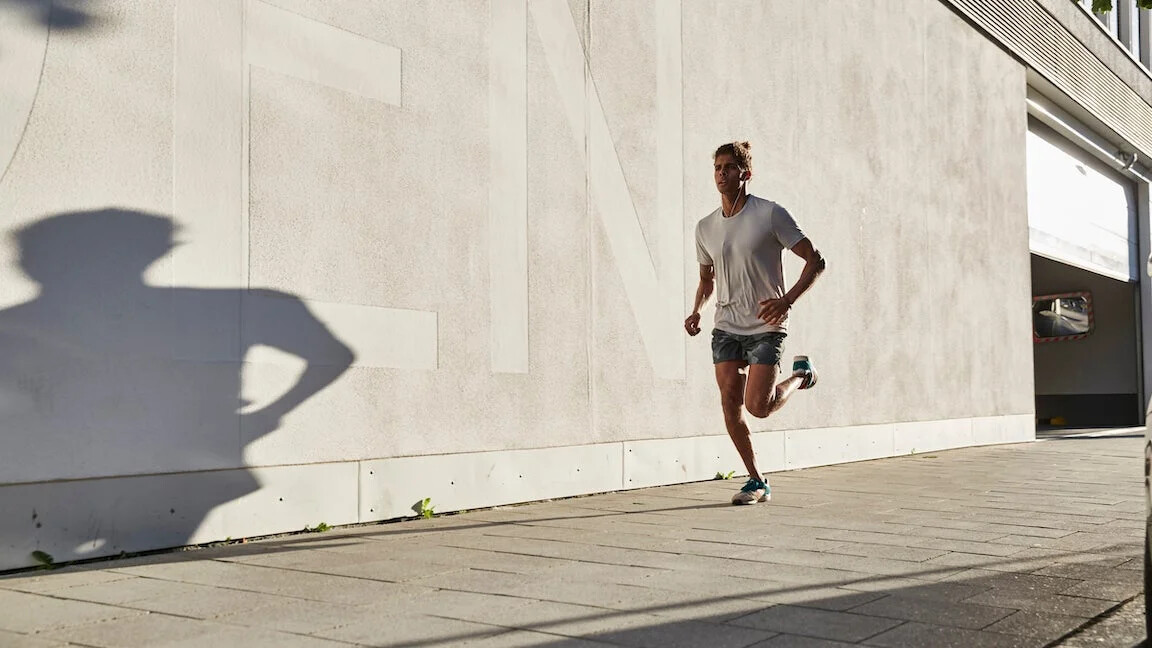
How do you find that proper balance between training and recovery, and what should you prioritize? Oliver Roy-Baillaregon, an ultrarunner and physiotherapist at The Running Clinic in Lac Beauport, Que., says beginners should focus more on how often they run and how good they feel afterward, rather than pace or distance.
“There’s a lot of evidence from clinical research and results that show the importance of consistency for injury prevention and long-term adaptation to training for beginners and elites,” says Roy-Baillargeon. In other words, his approach is to run more but less. “Start small, but try to get out every other day, even if it is five to 10 minutes at a time.”

He also believes that however long you run, beginners should spend the same amount of time on active recovery (i.e., stretching, rolling, cross-training.) “This approach is the safest way to let your body gradually adapt to this new stress on your muscles, tendons, ligaments, joints, etc.,” says Roy-Baillargeon. “The more you focus on recovery, the better your body will become at coping and handling the stress you put on those muscles during a run.”
Training smart and listening to your body sounds simple on paper—like getting better at anything, it takes practice and a routine. “Ensure you are getting in nutritious meals, rest and downtime before or between runs.
“Simple as that,” Roy-Baillargeon laughs.
(01/17/2023) ⚡AMPby Marley Dickinson
World Athletics ratify Kipchoge’s marathon world record
Eliud Kipchoge’s 2:01:09 marathon world record, along with world U20 records set last year by 100m sprinter Letsile Tebogo and Jamaica’s 4x100m team, have been ratified.
Double Olympic champion Kipchoge won the Berlin Marathon last year, taking 30 seconds off the marathon world record he had set in the same city on 16 September 2018.
The 38-year-old Kenyan went out hard, passing through 5km in 14:14 and 10km in 28:22 – not just comfortably inside world record pace, but also well inside a projected two-hour finish.

He maintained that pace through half way, which was reached in 59:50 – identical to his half-way split when he produced a sub-two-hour run in an unofficial orchestrated race in Vienna three years ago. His pace started to drop slightly from then on, but he was still comfortably inside world record pace.
Ethiopia’s Andamlak Belihu had been level with Kipchoge up until that point, but the Kenyan superstar then gradually pulled clear and was out on his own. He passed through 30km in 1:25:40, then reached 35km in 1:40:10.

By the time he passed through 40km in 1:54:53, his lead had grown to move than four minutes. Kipchoge went on to cross the line in 2:01:09, making this the eighth consecutive men’s marathon world record to be set in Berlin.
“I am overjoyed to have broken the world record,” said Kipchoge. “I wanted to run the first half so fast. After 38km I knew I would be capable of breaking the world record. The circumstances were great, and so was the organisation.”
Botswana’s Tebogo successfully defended his 100m title at the World Athletics U20 Championships Cali 22. He had broken the championship record in his heat with 10.00, then won his semifinal in 10.14 before going on to dominate the final in 9.91 (0.8m/s).
His winning time took 0.03 off the world U20 record he had set in Eugene on 15 July in the heats of the World Athletics Championships Oregon22.
“When the gun went off, I had to make sure I made the best start of my life – and it was the best start of my life,” said Tebogo. “As soon as I took my first step, I knew the title was mine. I didn’t worry about the time. I didn’t look.”
Just three days later, another world U20 record fell, this time in the women’s 4x100m. The Jamaican quartet of Serena Cole, Tina Clayton, Kerrica Hill and Tia Clayton teamed up to take the title in 42.59, taking 0.35 off the previous record that the same team had achieved on August 22, 2021 at the previous World U20 Championships in Nairobi.
A similar quartet — but with Brianna Lyston on third leg instead of Hill — had clocked a marginally quicker 42.58 at the Carifta Games earlier in 2022, but it could not be ratified as a record.
Records Ratified
Men’s world marathon record: 2:01:09 Eliud Kipchoge (KEN) Berlin, September 25, 2022
Men’s world U20 100m record: 9.91 (0.8m/s) Letsile Tebogo (BOT) Cali, August 2, 2022
Women’s world U20 4x100m record: 42.59 Jamaica (Serena Cole, Tina Clayton, Kerrica Hill, Tia Clayton) Cali, August 5, 2022
(01/17/2023) ⚡AMPby World Athletics
Workouts to break 20 minutes in the 5K, tips and tricks for improving your 5K time
There are a few benchmark times for runners. On the the road, they’re the sub-three marathon, sub-1:20 for a half and coming in under 20 minutes for a 5K. If runners had initially planned to train for a race that has since been canceled, taking a stab at improving their 5K times is a great alternative to regularly scheduled programming.
This distance can easily be run in loops around your neighborhood if you’re looking for emotional support, or it can be turned into a nice out-and-back route, if that’s what you prefer. Also, mentally, it’s much easier than completing a half- or full marathon solo.
Paddy Birch is a 2:24 marathoner and coach with Pace and Mind in Toronto. Birch says lots of the runners he coaches are currently looking to improve at distances they wouldn’t normally contest. “Lots of runners are taking a step back from the marathon to try some shorter stuff. You don’t have to race virtually, but you can set little targets for yourself along the way.” Here’s some advice on how to snag a 5K personal best.

For the marathoner
Birch says for the marathoner who’s moving down in distance, they’ve got a strong base, but they’ll need to build leg speed. “My ideal speed workout for a marathoner who’s looking to improve their 5K time would be 400m reps. You’re looking to run an uncomfortable pace, but keep it smooth.”

Birch says another simple option if runners don’t have track access is a fartlek workout. “Something super simple like a minute at 5K pace followed by one minute slightly under pace, for example 4:00 and 4:30, can be super effective. You can alternate between paces for up to 30 minutes. It’s a mix of tempo and speed without beating yourself up too much. When runners are coming down in distance, the biggest problem they’ll have is pacing. Don’t hammer too hard to start. You want to be consistent and get comfortable at your race pace.”
For the new runner
If you’re new to running or typically run shorter distances, you’ll want to focus your training on building up strength. Birch says there are a few great workouts for this, including mile repeats, kilometer repeats or working speed into your long run. “For example, mile or kilometer repeats around 4:05 to 4:15 pace would be a great workout. Another option is throwing five to eight 30-second pickups into your long run. This teaches runners how to turn over tired legs.”
For all runners
Birch says consistency is key for everyone. “You can’t hammer everything. It’s always better to make sure that you know the purpose of your run. Your long runs are there for strength and your workouts are there to go fast. If you keep going a similar pace all of the time, you won’t see improvement.”
He also recommends that runners looking to get faster over 5K place an extra emphasis on drills and strides. “When you’re running faster, mechanics become more important. Everyone should be doing more of this stuff, but especially when you’re working on speed.”
(01/16/2023) ⚡AMPby Madeleine Kelly
Bryan Morseman and Stephanie Hodge crowned Triangle Challenge champions
Bryan Morseman and Stephanie Hodge have been crowned the overall winners of the 46th Bermuda Triangle Challenge.
The PwC Bermuda Marathon, Half-Marathon and Half-Marathon Relay yesterday rounded off the competition which featured competitors also tackle the Butterfield Mile and BF&M 10K Run and Walk.

At the end of three races in three days, Morseman, of the United States, sealed the top honour in the male category with an accumulated time of 4hr 22min 25sec after finishing third in the mile and recording back-to-back victories in the 10k and marathon.
Poland’s Wojciech Kopec finished in second place overall with a total time of 3:22:54, while Kieran Morris rounded out the top three after claiming three successive third places for a time of 3:30:07.
Canadian Hodge capped her 17th Triangle Challenge with overall victory in the female category, building on a third-place finish in the mile with successes in the remaining races for a winning time of 4:22:25.
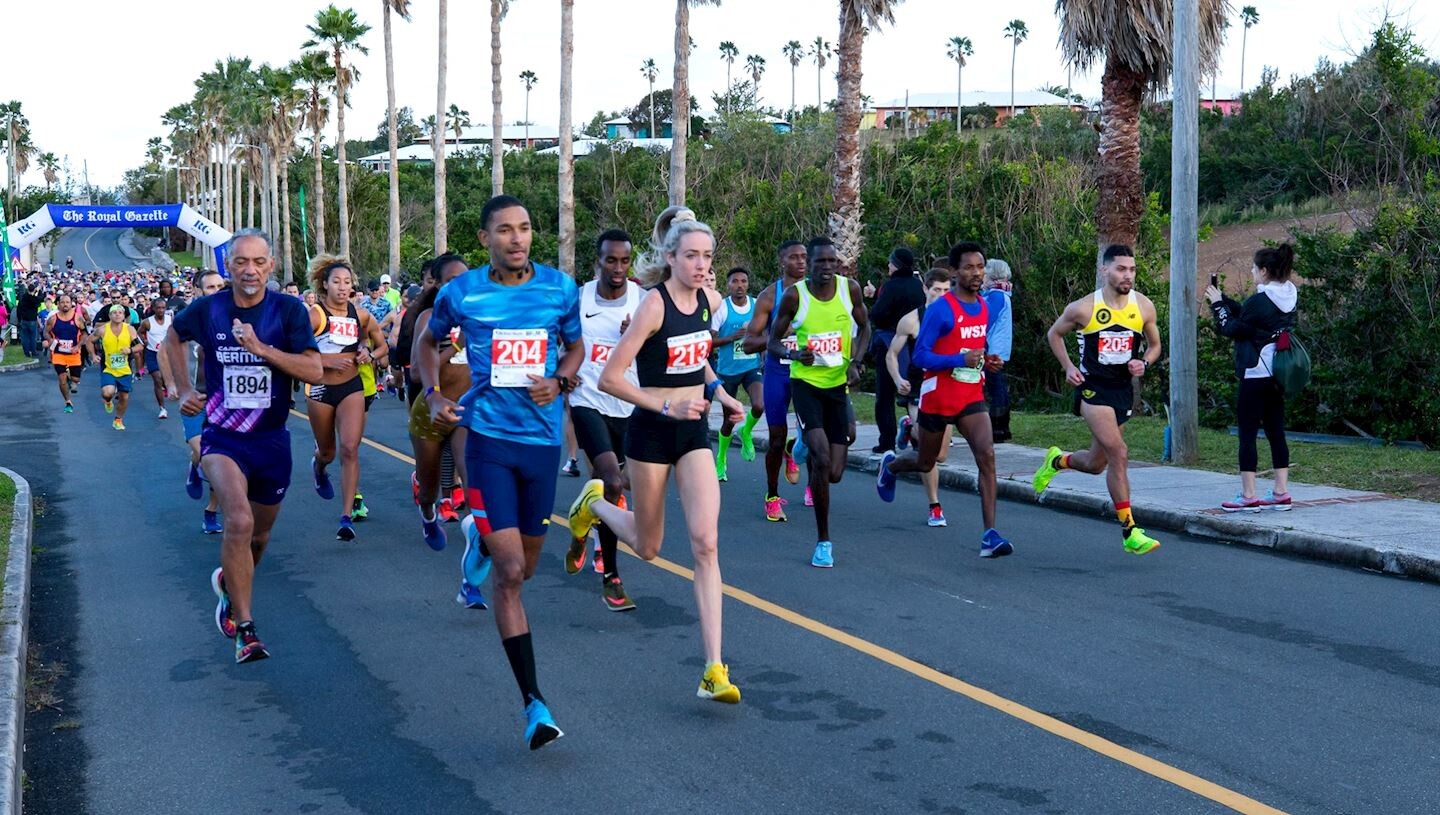
Britain’s Faith Geraghty settled for second place overall, clocking a total time of 4:30:56 after finishing second in all three events, while compatriot Shelley Jones completed the podium places.
There was also success for a host of local competitors across the various age categories.
Paula Barrow was crowned the overall winner of the female 20 to 29 division, while there was also top honours for Leana Coetsee in the 30 to 39 division. Of the male entrants, Ben Train took top spot in the 30 to 39 age category, while James Rawlins did likewise in the 40 to 49 division.
Meanwhile, American Kristin Corapi claimed victory in the female 40 to 49 category, prevailing over Bermuda’s Zoey Roberts, while there was also success for compatriots Karen Hoch in the 50 to 59 group and Gail White in the 60 to 69 division.
American Daniel Zheng was successful in the male 20 to 29 division, while compatriots Sidy Diallo (60-69) and Joe Schlereth (70 and over) proved victorious. Anthony Collins, of Great Britain, took the honours in the remaining 50 to 59 category.
Elite runners Ellie Stevens and JJ Santana rounded off a memorable visit to the island after being crowned Bermuda Triangle Half Challenge champions.
Stevens, of Great Britain, built on the momentum of a second-place finish in the mile, with successive victories in the remaining events to clock a winning total time of 2:06:28.
American Amanada Nurse (2:08:43) claimed second place, while compatriot Christina Vergara Aleshire completed the top three with an overall time of 2:08:58.
Just like Stevens, American Santana built on a second-place finish in the opening event with successive wins in the 10k and half marathon, clocking 1:45:29 overall.
Bermuda’s Tyler Butterfield finished an impressive second overall in a combined time of 1:50:27, with Elias Graca completing the podium places in 1:51:43.
There was also a standout performance from 79-year-old Jean Gardner, the oldest competitor to tackle the Bermuda Triangle Half Challenge, in finishing fourth overall in the Female 70 and Over division in an impressive time of 4:36:40. Notably the division was won by Maria Duffy, mother of Olympic and record four-time world triathlon champion Flora.
(01/16/2023) ⚡AMPby Sam Murley
Bermuda Triangle Challenge
Surrounded by crystal clear waters warmed by the Gulf Stream, Bermuda is the ideal winter time destination for the active minded traveler. With its lush foliage and pastel colored buildings, Bermuda is one of the most beautiful places on earth. A short flight of 2-hours or less from most US East Coast cities and Toronto, Bermuda only feels like it’s...
more...Mo Farah: Nine Running Tips
Mo Farah – Olympic 5000m and 10,000m champion (twice), World 5,000m and 10,000m champion (twice) and 2:05 Marathoner. Someone we could all get a few running tips from.
The Sweat Elite team spent a month training in Sululta, Ethiopia in January 2019, whilst Mo Farah and Mudane Team were training towards the London Marathon 2019.
Here are 9 basic running tips from Mo Farah:

For A Quick Energy Boost… “Chocolate – usually dark chocolate – is good for an energy boost. There are all manner of sports snacks that pretend to do wonderful things, but I mostly like to stick to the basics.”
How to Keep Motivated… “When you’re competing, keep reminding yourself how much work has led to that moment. The training you’ve done means you deserve to perform well. That gives a huge confidence boost.”
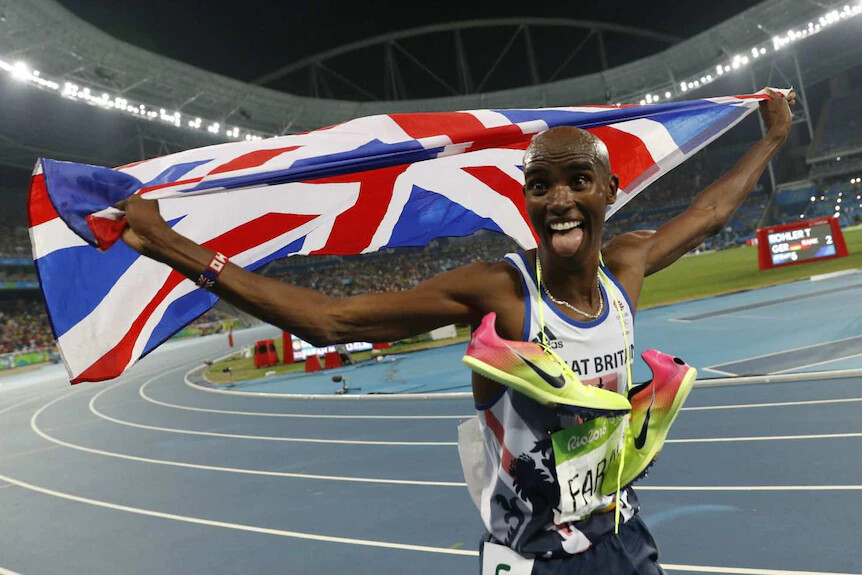
How Important Are Recovery Days? “The day after a tough workout, you never want to push your body again. The most you should do is a comfortable run (or two) and/or cross training. Don’t have your heart rate up high again.”
Should you carry water during a race?“Drink immediately before or after a 5K or 10K run, but not during it. Running with a bottle puts more pressure on whatever side of your body it’s weighing down, and running well is all about balance.”
Keeping Warm Before The Race… “The morning before a race, I always have to wear my leggings to warm up my muscles. It’s weird, but if I don’t wear leggings in the morning, then I can’t compete in the afternoon. It’s a psychological thing. My coach once said: ‘It’s hot, it’s 80 degrees, take the leggings off!’ But I couldn’t.”
Increase Your Mileage Gradually… “Do not increase your weekly mileage by more than 10 per cent every month. No matter how good you feel, be very gradual. You won’t know you’re overdoing it until it’s too late.”
Strengthen Your Whole Body… “Good runners condition their whole bodies. The arms drive the legs. Keep your upper body and core toned with a lot of push-ups, pull-ups, sit-ups, and back raises. Stay away from machine weights and stick to Pilates, climbing, and dynamic flexibility work like yoga.”
Think About Your Posture… “Every motion your body makes should propel you directly forward. If your arms are crossing or you are over-striding, you’re losing force. Your posture should be straight, and your striding foot should land directly underneath you.”
Stay On The Trails If Possible… “Pavement damages joints, tendons, ligaments and muscles. The more you can run on grass, woodchips or dirt, the better off you are. My athletes run 90 percent of their workouts on soft surfaces.”
(01/16/2023) ⚡AMPby Sweat Elite
Around 8,000 runners gear up for Ooredoo Doha Marathon
Over 20,000 runners have taken on the challenge of the Doha Marathon by Ooredoo, and this year, many intent to join them.
Around 8,000 runners are preparing for the much-awaited Ooredoo Marathon, scheduled to start in less than a week’s time.

Qatar’s most popular marathon, held annually since 2013, is finally coming back with yet another exciting challenge for all running enthusiasts in Doha. And as usual, the prize it holds is worth the effort.
“We’re rightfully proud that the Doha Marathon by Ooredoo is consistently one of the most popular events on Doha’s calendar year after year, but this pride must be shared with our invaluable sponsors, without whom we would be unable to present the race,” said Moza Khalid al-Muhannadi, director CSR, Sponsorship and Media at Ooredoo, at a press conference.
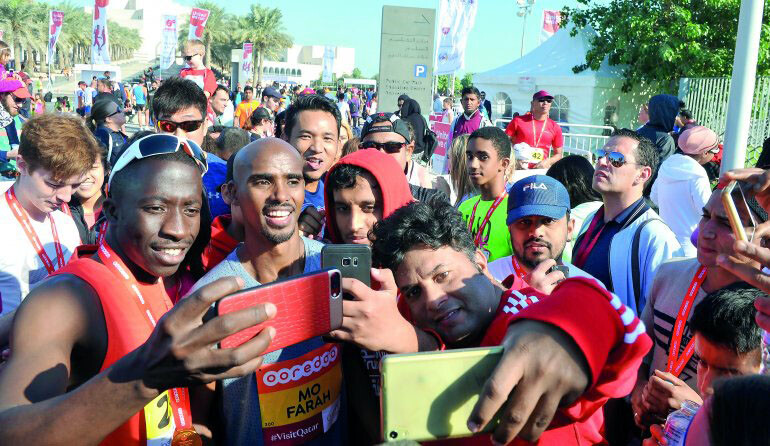
“We look forward to putting on yet another incredible event for Doha and for everyone taking part. Best of luck in the race.”
Some participants have told Doha News that the event, set to kick off on January 20, serves as a great motivation for them to improve their physical abilities and stamina to compete. Every year, it is a stronger challenge to be better.
“I participated two years ago for the first time and since then I always look forward to it. This year I even planned my workouts in a way that would make me faster and stronger to finish the full marathon,” Al Jazi, a two-time participant, said.
“I ran a lot of marathons abroad, but this one is different. You almost know everyone around you and it is such a warm, supportive environment. I can’t wait to reach the finish line.”
Others have praised Qatar’s efforts to organise such events that encourage sports and an active lifestyle. Over the past years, the Gulf state has focused extensively on promoting sports and physical activity as part of its 2030 vision.
World-class facilities have been built, major tournaments have been hosted, and various events have been taking place on an almost monthly basis, with great turnout from the community.
Qatar also holds Sports Day in high regards, declaring it an official national holiday to promote being active. Ooredoo marathon, on the other hand, is one of the most prominent national running event in the country.
“Every year I encourage more people to join me, and despite how hard it is, they all love it and come back. It’s one of those things that make you feel rewarded, and pushes you to achieve more and more,” Mohammed Hanni, a physical fitness instructor, told Doha News.
“I’ve been training a lot, so I’m very excited to hopefully break my own record this year.”
Start, end and timing
For this year, Al Jazi, as well as other runners, will start at Parade Pavilion, The Amir’s Grandstand in Al Corniche, and proceed to Katara, Lusail, and back to Al Corniche after the race.
The full marathon will begin at 6.15am, and the half marathon will follow at 7am. Starting at 8.30am, the 10km category will kick off, while the 5km will start at 9.30am.
Finally, at 10.30am, the 1-kilometer category for children will begin.
The 2023 marathon bags a total price of approximately QAR 1 million for all categories, and everyone who finishes their category will receive a medal to mark the achievement.
Special prizes will be awarded to Qatari entrants in each category.
Al-Muhannadi also disclosed that there would be a raffle with an SUV up for grabs. All competitors in the 5km, 10km, 21km, and 42km categories who cross the finish line will be entered into a raffle to win a Volkswagen T-Roc.
(01/16/2023) ⚡AMPby Menatalla Ibrahim
Ooredoo Doha Marathon
We started the Ooredoo Doha Marathon as a way to bring people together, encourage them to live healthier lifestyles and give back to the community. Funds raised by entry fees to the Ooredoo Doha Marathon will be donated to a range of worthy charities in Qatar. The marathon features four courses for all abilities of runners including a full marathon,...
more...Emily Sisson sets a new half marathon American record in Houston
Emily Sisson shattered her own American record in the half marathon by finishing in 1:06:52. She is now the first American woman to break the 1:07 barrier after placing second behind race winner Hiwot Gebremaryam of Ethiopia, who ran 1:06:28.
Ethiopian Leul Gebresilase Aleme won the men’s half in a sprint finish. He ran 1:00:34—less than a second ahead of runner-up Wesley Kiptoo of Kenya.

Emily Sisson Re-Breaks Her Own American Record
Sisson improved on her record the hard way by going out fast, slowing down slightly through the last sections, and kicking it in towards the finish. After Gebremaryam broke the race open in the first few miles—by 5K, she was already 17 seconds ahead of the chase pack—Sisson ran with Jessica Warner-Judd of Great Britain through 15K. The American record-holder averaged 5-minute mile pace through the first 5K but struggled in the latter half of the course, clocking 5:12 miles around 20K.
“I went out a little too fast the first 5K or so, so the last few miles I was definitely feeling it,” Sisson said on the ABC 13 broadcast.
But Sisson pushed through the discomfort as she neared the finish line to make history once again. “I’m really excited about it. I really wanted to break 67 minutes and I’m happy I did,” she said. “I actually think I could have run a little more evenly so I’m already hoping to run another half and even try to run faster.”
Sisson broke the American record for the first time in May 2022 at the USATF Half Marathon Road Championships in Indianapolis. The Providence College alum won the national title in 1:07:11, four seconds faster than the previous American record set by Sara Hall less than four months earlier at the 2022 Houston Half Marathon.
Prior to the U.S. championships, Sisson came extremely close to the mark on two occasions. When the record was 1:07:25 (held by her former training partner Molly Huddle), she ran 1:07:30 in 2019 and 1:07:26 in 2020.
Last year, the momentum continued in a big way for Sisson when she broke the American record in the marathon. In October, she demolished the time by running 2:18:29 in Chicago—lowering the previous record set by Keira D’Amato at the 2022 Houston Marathon by 43 seconds.
Close Finish in the Men’s Half Marathon
The men’s half marathon featured one of the most exciting finishes of the day. After pulling away from the chase pack together with a few miles remaining, Aleme and Kiptoo battled down to the wire. The East African competitors fought through the homestretch—where Kiptoo kept looking back to assess the distance between himself and his rival—until Aleme sprinted ahead at the last second to claim the victory.
Aleme’s performance follows a breakthrough season, which included a runner-up finish at the 2022 London Marathon in October.
Conner Mantz was the first American to finish after placing sixth in 1:01:12.
Past Greats Return to Racing, While Familiar Faces Make Debuts
In addition to Sisson’s record, there were several other notable performances in the Houston women’s half marathon, including Huddle in her postpartum return to competitive racing. The previous American record-holder finished fifth in 1:10:01 almost nine months after welcoming her daughter. In her 13.1 debut, former 1500-meter specialist and Olympic bronze medalist Jenny Simpson placed ninth in 1:10:35. Also making her debut, Vanessa Fraser finished 13th in 1:11:00. All three had room to spare in achieving the standard to compete at the 2024 U.S. Olympic Marathon Trials.
Three-time Olympic champion Tirunesh Dibaba also made her highly anticipated return. In the Ethiopian's first race in four years, she finished 16th in 1:11:35.
(01/15/2023) ⚡AMPby Runners World
Aramco Houston Half Marathon
The Chevron Houston Marathon offers participants a unique running experience in America's fourth largest city. The fast, flat, scenic single-loop course has been ranked as the "fastest winter marathon" and "second fastest marathon overall" by Ultimate Guide To Marathons. After 30 years of marathon-only competition, Houston added the half-marathon in 2002, with El Paso Energy as the sponsor. Today the...
more...2023 Houston Marathon was one exciting race right up to the finish
Thanks to record-breaking runs and heart-stopping finishes, this year’s races were memorably exiciting.
The Houston Marathon and Half Marathon are two of the fastest races in the U.S., and both occur on one exciting day. The competitive event delivered once again with a record-setting run and several memorable performances on Sunday, January 15.In the closest Houston finish since 1996, the men’s marathon was won by Dominic Ondoro. The Kenyan out-leaned Tsedat Ayana of Ethiopia to claim the victory in 2:10:36.

The women’s race saw another impressive run with Hitomi Niiya of Japan winning in 2:19:24, more than six minutes ahead of the runner-up.
What else might you have missed from the Houston Marathon and Half Marathon? Check out the full list of highlights below.
Another Close Call in the Men's Marathon
In the men’s race, Ondoro became a two-time Houston champion six months after winning the 2022 Grandma’s Marathon in June.
The race also saw Americans achieve three top five finishes. After transferring his allegiance from Ethiopia to the United States last year, Teshome Mekonen has emerged as a rising star among the American ranks. On Sunday, he placed third in 2:11:05. Behind him, Parker Stinson finished fourth in 2:12:11, and Tyler Pennel placed fifth in 2:12:16.
Hitomi Niiya Almost Breaks the Japanese Record
In the women’s marathon, Niiya showed expert tactics by building up her speed through halfway to overtake early leader Muliye Dekeb Haylemariyam of Ethiopia. She continued to hold her position in the second half of the race and extend her lead in the later miles. Niiya was on pace to break the Japanese national record (2:19:12) but fell short by 12 seconds.Haylemariyam finished second in 2:25:35, and fellow Ethiopian competitor Sintayehu Lewetegn placed third in 2:26:33. American Tristin van Ord finished fourth in 2:27:07. Behind her, Maegan Krifchin continued her impressive marathon streak. After running three marathons in one month late last year, the pro runner finished sixth in 2:30:16.
(01/15/2023) ⚡AMP
by Runners World
Chevron Houston Marathon
The Chevron Houston Marathon offers participants a unique running experience in America's fourth largest city. The fast, flat, scenic single-loop course has been ranked as the "fastest winter marathon" and "second fastest marathon overall" by Ultimate Guide To Marathons. Additionally, with more than 200,000 spectators annually, the Chevron Houston Marathon enjoys tremendous crowd support. Established in 1972, the Houston Marathon...
more...Yalemzerf Yehualaw was just five seconds off her 10k world record in Spain
Ethiopia’s Yalemzerf Yehualaw clocked 29:19 at the Valencia 10K Ibercaja to come within five seconds of her own world record, while Kenya’s Weldon Kipkirui Langat won in 26:55 in a thrilling finish against compatriot Charles Langat at the World Athletics Label road race in the Spanish city on Sunday (15).
Paced by her compatriots Genetu Molalign Yehualaw and Tolcha Guta Beyene, Yehualaw opted for a conservative start, unlike last year in Castellón when she set the current world record of 29:14. The opening 2km was covered in 5:56 with Kenya’s Jesca Chelangat still running at Yehualaw’s shoulder.
The pace increased slightly in the third kilometre as they reached 3km in 8:51; shortly afterwards Chelangat began to lose ground on Yehualaw as the Ethiopian passed through 4km alone in 11:52, a strong headwind contributing to the slowest kilometre of the race. The world half marathon bronze medallist went through halfway in 14:47, 19 seconds down on her half-way split from her world record run.
Chelangat was eight seconds behind the leader at half way, but a comfortable nine seconds ahead of Uganda’s Sarah Chelangat. Kenyan duo Esther Borura and Naomi Chpngeno were another five seconds adrift (15:09).

Yehualaw increased her pace during the second half, covering most kilometres in 2:53-2:54 and reaching 8km in 23:29. After another swift 2:53 kilometre, the Ethiopian was unable to maintain that same cadence over the final kilometre but still held on to finish in 29:19, the second-fastest 10km performance in history.
Further back, Jeska Chelangat finished just outside the 30-minute barrier (30:01) with Borura completing a quality podium in 30:15. Sarah Chelangat set a Ugandan record of 30:24 in fourth, 16 seconds ahead of Chepngeno (30:40). Britain’s Samantha Harrison was sixth in 30:51.
The 23-year-old Yehualaw commented she was a bit disappointed for not having broken the world record but satisfied with her brave effort.
The men’s race kicked off at a relatively brisk pace, the opening kilometres covered in 2:38 and 2:39. The pacemaker dropped out just before the 3km (7:57) and the pace decreased slightly, so Lagat and Kenya’s world 5000m silver medallist Jacob Krop moved to the front in a bid to keep the pace alive. By halfway (13:30), nine men were still in contention for victory.
Despite the annoying headwind over the following kilometres, Krop and Langat managed to maintain a swift cadence in the 2:43/2:45 kilometre range, with Charles Langat always tucked behind them. During the long final straight, Charles Langat tried to overtake Weldon Langat but the latter held off his challenge and crossed the line victorious in 26:55 to equal his PB.
Charles Langat set a massive lifetime best of 26:57 while Daniel Kosen took third in 27:01, an 18-second improvement on his career best. Burundi’s Rodrigue Kwizera placed fourth (27:04) and Krop was given the same time for fifth.
“I’m delighted with my win,” said Langat. “I pushed hard throughout, looking for a fast time, and my tactic paid off.”
Langat missed out on making the Kenyan team for the World Cross Country Championships, so his next outing will be at the Ras Al Khaimah Half Marathon on 18 February. He’ll then turn his attention to making the Kenyan 10,000m team for the World Championships in Budapest.
Emeterio Valiente for World Athletics
Leading results
Women1 Yalemzerf Yehualaw (ETH) 29:192 Jesca Chelangat (KEN) 30:013 Esther Borura (KEN) 30:154 Sarah Chelangat (UGA) 30:245 Naomi Chepngeno (KEN) 30:406 Samantha Harrison (GBR) 30:517 Vicoty Chepngeno (KEN) 31:058 Brenda Tuwei (KEN) 31:209 Stella Chesang (UGA) 31:3310 Alemaz Samuel Teshale (ETH) 31:39
Men1 Weldon Langat (KEN) 26:552 Charles Langat (KEN) 26:573 Daniel Kosen (KEN) 27:014 Rodrigue Kwizera (BDI) 27:045 Jacob Krop (KEN) 27:046 Rogers Kibet (UGA) 27:077 Dominic Lokinyomo Lobalu (SSD) 27:098 Laban Kiplimo (KEN) 27:159 Richard Kimunyan Yator (KEN) 27:3210 Isaac Kipkemboi (KEN) 27:34
(01/15/2023) ⚡AMPby World Athletics
10k Valencia Trinidad Alfonso
Around the corner we have one more edition of the 10K Valencia Ibercaja, organized one more year by the C. 10K VALENCIA Athletics premiering the running season in Valencia. It is a massive urban race with more than 3,000 registered annually of 10 kilometers, where the maximum duration of the test will be 1 hour 40 minutes (100 minutes). The...
more...Ethiopia’s Lemi & Haymanot set course records in Tata Mumbai Marathon
Mumbai sprung to life early on a nippy Sunday morning as over 55,000 people took part in the 18th edition of the Tata Mumbai Marathon.
Records tumbled in Asia’s most prestigious race as the Ethiopian duo of Hayle Lemi and Anchalem Haymanot won with new course records to take home USD 45,000 winners prize and a course record bonus of USD 15,000 each.

Lemi took advantage of the slow pace in the first half of the men's race. The 2016 Boson Marathon winner ran alongside the defending champion and countryman Derara Hurisa, Kenyan Philemon Rono and half a dozen other runners as they passed through the iconic Rajiv Gandhi Sea Link towards the halfway mark.
Lemi, Rono and another Ethiopian Hailu Zewdu broke away from the rest of the group at the 26th kilometre. The three athletes climbed the Peddar Road together on their return journey. Lemi increased his pace while coming down to enter Chowpatty beach corner and started running on the Marine Drive well ahead of the other two. His 2:07:32 is an early season lead in the world this year. Rono clocked 2:08:44 and Zewdu 2:10:23 for the other two places on the podium.
The women started their race at a fast pace and there was a keen tussle between five Ethiopian runners at the midway stage. Worknesh Alemu, the 2019 champion here, drew from her past experience on the course to take the lead at that point. However, Haymanot, a marathon debutant, broke away from Alemu. Rahma Tusa, two times Rome Marathon winner, and 2022 Sydney marathon runner-up Letebrhan Haylay ran shoulder-to-shoulder with her. "Running along with these two experienced runners with fast timings to their credit was really a challenge, but I gained much experience from them,” Haymanot revealed during a post-race press conference.
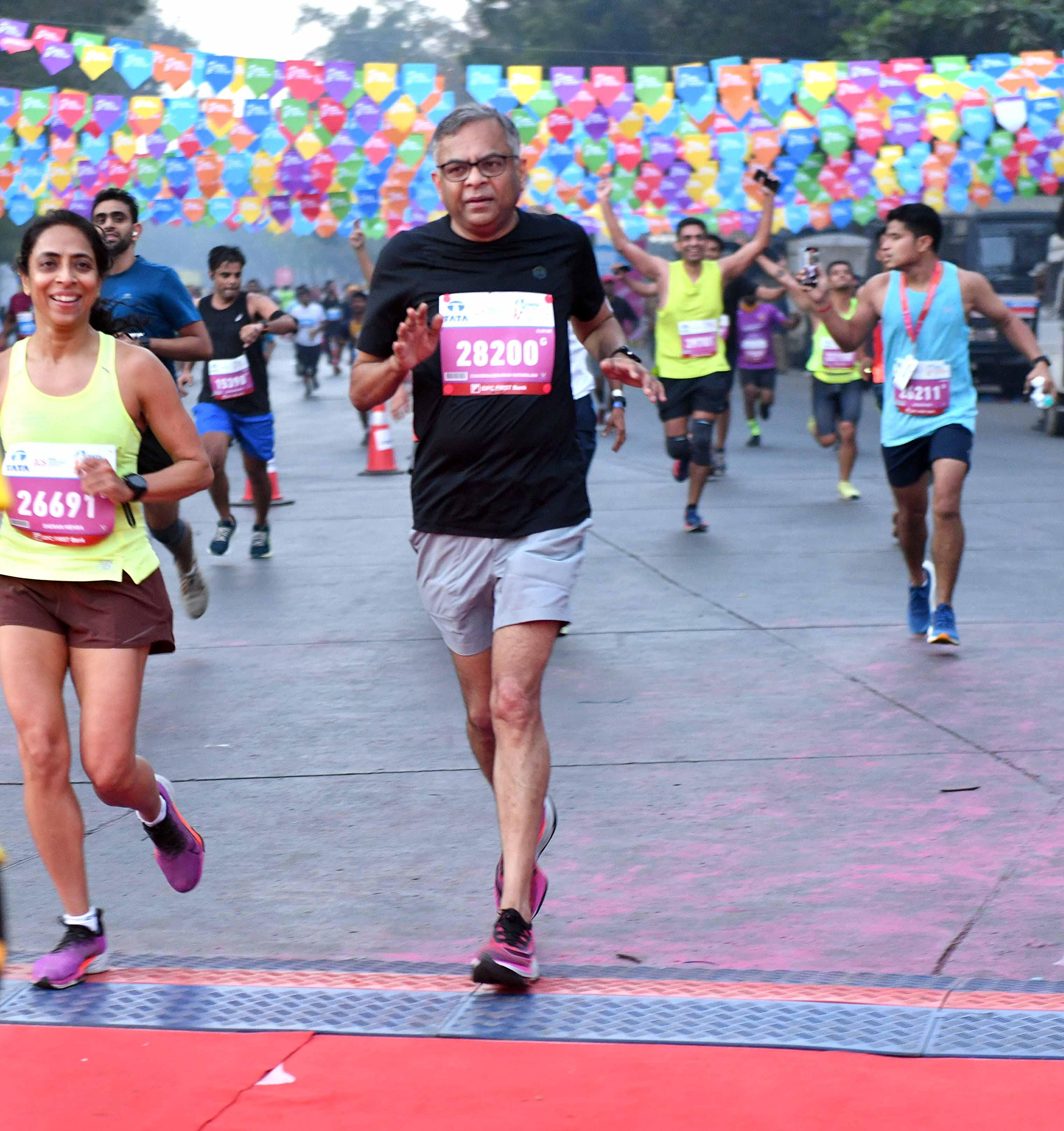
For the first time, the podium finishers in the women’s section finished under 2:25, as Tusa (2:24:22) also finished under the previous course record of 2:24:33 held by Valentine Kipketer (Kenya) since 2013.
Gopi T made a winning return to competitive action while Chavi Yadav pulled off a spectacular victory on her marathon debut in the Indian race.
Olympian Gopi, the first Indian male to win the Asian Marathon Championship in 2017, clocked 2:16:41 to finish on top of the domestic Elites and 10th overall in the 18th edition of the USD 405,000 prize fund World Athletics Gold Label Road Race.
All eyes were on Gopi who was returning to competition after three years following knee surgery and the Army runner didn’t disappoint as he clocked 2:16:41, and was followed by Man Singh, who was 17 seconds behind, and Kalidas Hirave.
Gopi fell short of the upcoming Asian Games cut-off of 2:15 but said the win in India’s largest marathon gave him a tremendous boost.
“It felt good to be back after three years. I maintained a good pace for the first 30-odd kilometres but slowed down towards the end,” the Army runner told a news conference. “I never give up,” added Gopi, who previously won in 2018.
The 2020 winner Srinu Bugatha finished fifth in 2:23:05.
Bhopal’s Chavi said she was running the classic distance for the first time. “I didn’t run more than 25 km even in training,” she told a news conference. Arati Patil finished second, over 10 minutes behind, and Renu Singh was third.
The Elite Indian podium finishers were richer by INR 500,000, 400,000 & 300,000 respectively.
Meanwhile, Parul Chaudhary bettered her course mark in the women’s half marathon and Murli Gavit won the men’s crown. The podium finishers took home INR 100,000, 75,000 & 60,000 respectively.
(01/15/2023) ⚡AMPTata Mumbai Marathon
Distance running epitomizes the power of one’s dreams and the awareness of one’s abilities to realize those dreams. Unlike other competitive sports, it is an intensely personal experience. The Tata Mumbai Marathon is One of the World's Leading Marathons. The event boasts of fundraising platform which is managed by United Way Mumbai, the official philanthropy partner of the event. Over...
more...Skating police to be rolled out for "zero-crime" Paris 2024 Olympics
The Territorial Contact Brigade Louvre - Paris Centre, the only roller-skating police unit in France, is to be used for the Paris 2024 Olympic and Paralympic Games as part of its security operations.
Its nine skaters are to be mobilised during the Games as part of a "zero-crime Olympics" plan.

Three team members - Gaël, Antoine and Basile - spoke to French publication 20 Minutes, explaining where they usually patrol on their rollerblades.
Usually, their group visit tourist spots such as Notre-Dame, the Louvre, the Hôtel de Ville and Place Vendôme.

"Most of the time, passersby are curious, rarely disrespectful," said Gaël to 20 Minutes.
Basile and Antoine added that photos with the public are common when on patrol.
"This direct contact with fluid and friendly people is really a plus of our job," added Antoine.
However, during the Games, their role will not change significantly, as explained by their head of the team.
"Their priority mission and the reason for which it was imagined in 2001, is the security of tourist sites and the fight against crime linked to tourist phenomena, namely street vendors, pickpockets and against all scams that can affect tourists, such as hat players, petition scams," said Captain Soulié.
"The goal is to be present in a given sector and to show up to dissuade potential perpetrators of offenses from committing their misdeeds, as well as to reassure the population."n October, French Minister of the Interior, Gérald Darmanin, said the aim was for a "zero-crime Olympics".
Security has been a key talking point in recent months, with festival organisers being concerned of the status of their events due to the extra forces needed for the Games.
Major festivals such as Lollapalooza and Rock en Seine are still hang in the balance.
Approximately 35,000 police officers and gendarmes are expected to be used at the public-focused Opening Ceremony, with the rest of the Games needing around 30,000 on average.
The Paris 2024 Olympic Games are scheduled to take place from July 26 to August 11 next year, followed by the Paralympics from August 28 to September 8.
(01/15/2023) ⚡AMPParis 2024 Olympic Games
For this historic event, the City of Light is thinking big! Visitors will be able to watch events at top sporting venues in Paris and the Paris region, as well as at emblematic monuments in the capital visited by several millions of tourists each year. The promise of exceptional moments to experience in an exceptional setting! A great way to...
more...

